Harry O’Brien Greg Purcell $20.50 NEW SOUTH WALES SYLLABUS 5 STUDENT
STAGE 3 01_MP_NSW_SB5_38343_TXT_PPS_NG.indd 1 30-Aug-23 10:20:32
BOOK
DRAFT

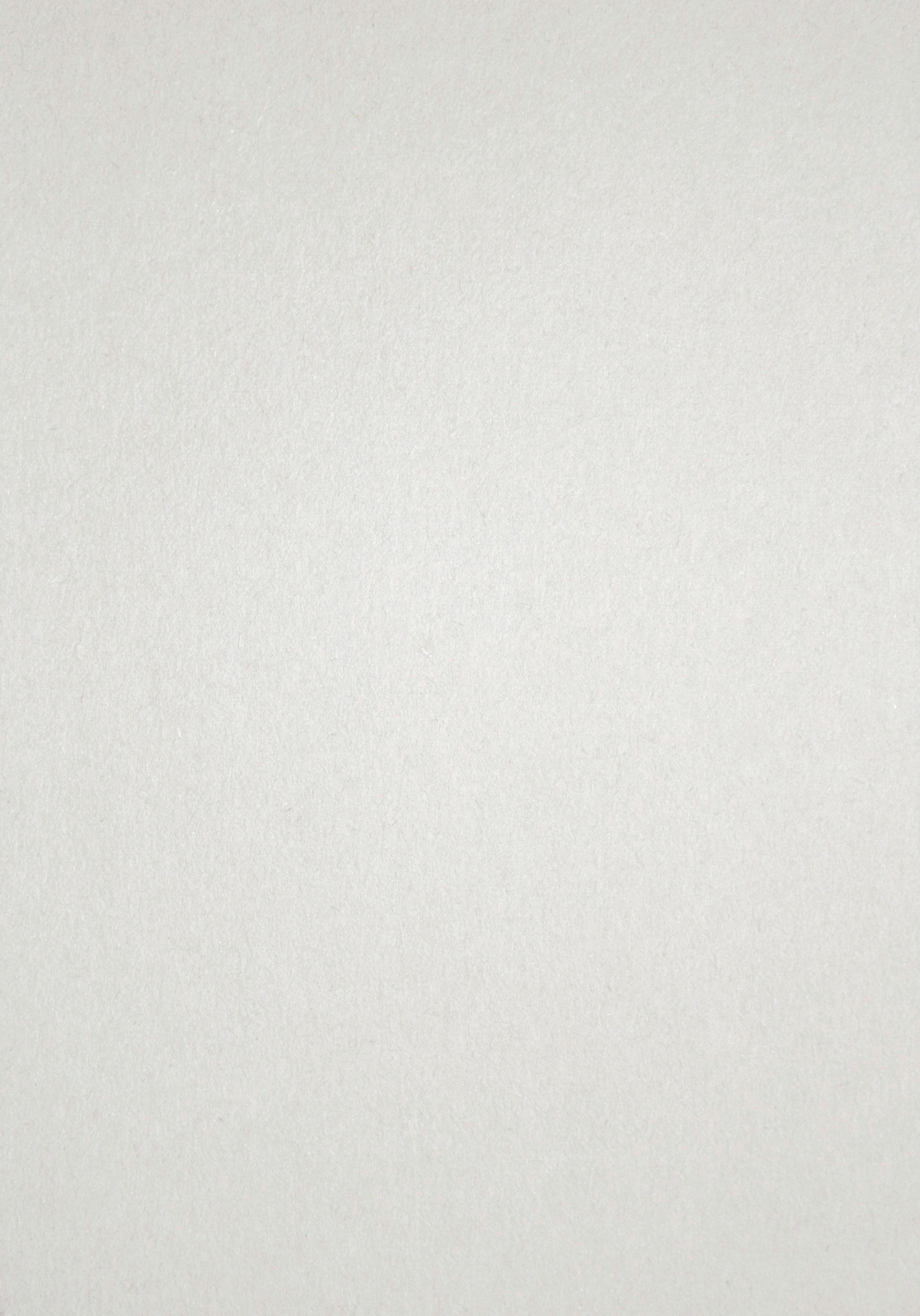
ii TERM 1 • Partitioning/know 1, know 4 2 • Addition and subtraction strategies 3 • Recognising angles 4 • The kilometre 5 • Revising 3-digit addition 6 • Thirds and sixths 7 • Revising polygons 8 • Calculating area 9 • Revising 3-digit subtraction 10 • Revising division facts/remainders 11 • Probability using fractions 12 • Cubic centimetres 13 • Addition and subtraction strategies 14 • Reading numbers 15 • Coordinates 16 • Mass 17 • Multiplication strategies/products 18 • Problem solving 19 • Chance experiments 20 • Naming prisms and pyramids 21 • Revising 2-digit division/quotients 22 • Number patterns 23 • Column graph 24 • am and pm time 25 • Two digits multiplied by 1 digit/area model 26 • Equivalent fractions 27 • Protractors 28 • Metres and kilometres 29 • 4-digit addition with trading/checking 30 • Missing numbers 31 • Drawing objects 32 • Picture graph/column graph 33 • Division strategies 34 • Mixed numerals/improper fractions 35 • Classifying three-dimensional objects 36 • Column graphs 37 • Diagnostic review 1 38 TERM 2 • 4-digit subtraction 40 • Prime and composite numbers 41 • Perimeter 42 • Likelihood 43 • 2-digit division and multiplication connection 44 • Two-place decimals 45 • Partitioning numbers 46 • Square centimetre 47 • 5-digit addition with trading 48 • Rounding money 49 • Line graphs 50 • Cubic centimetres 51 • Three digits multiplied by one digit 52 • Constructing number sentences 53 • Constructing shapes 54 • 24-hour time 55 • Subtraction strategies 56 • Number patterns and rules 57 • Describing objects 58 • Perimeter 59 • Expanding numbers 60 • Fractions on a number line 61 • Databases 62 • Square metres 63 • 3-digit written and mental division 64 • Factors 65 • Drawing angles with a protractor 66 • Symmetry/rotational symmetry 67 • 5-digit addition 68 • Adding and subtracting fractions 69 • Chance experiment 70 • Top, front and side views 71 • 5-digit subtraction 72 • Order of operations 73 • Line graphs 74 • Litres and millilitres 75 • Diagnostic review 2 76 1 unit 2 3 4 5 6 7 8 9 10 11 12 13 14 15 16 17 18 Contents unit MP_NSW_SB5_38343_TXT_PPS_NG.indb 2 30-Aug-23 08:58:27 DRAFT


iii TERM 3 • 3-digit mental and written division 78 • Ordering decimals 79 • Ordinal data 80 • The tonne 81 • Addition and estimation 82 • Sequences of fractions 83 • Design problems 84 • Quadrilaterals 85 • Distributive law 86 • Decimals to thousandths 87 • Parallelograms 88 • 24-hour timetables 89 • 5-digit subtraction 90 • Adding and subtracting fractions 91 • Interpreting graphs 92 • Constructing objects 93 • 4-digit multiplication 94 • Subtracting fractions from wholes 95 • Chance/all possible outcomes 96 • Coordinates 97 • Division by ten/estimation 98 • Fractions of a quantity 99 • Measuring angles in triangles 100 • Time zones/24-hour time 101 • Calculator problems 102 • Multiplication by tens 103 • Adding fractions greater than 1 whole 104 • Gross and net mass 105 • Two digits multiplied by two digits 106 • Decimal place value 107 • Making objects and nets 108 • Data survey 109 • Fractions of quantity and length 110 • Division/averages 111 • Cubic centimetres and millilitres 112 • Hectares 113 • Diagnostic review 3 114 TERM 4 • 4-digit multiplication 116 • 6-digit addition 117 • Spreadsheet data 118 • Coordinates/making a map 119 • Adding and subtracting decimals 120 • Calculator division and multiplication 121 • Chance/all possible outcomes 122 • Nets 123 • 6-digit subtraction 124 • Factorising/partitioning 125 • Choosing length units 126 • Triangles 127 • Financial plan/budget 128 • Inverse operations 129 • Area of a triangle 130 • Square kilometres 131 • Multiplication methods 132 • Rounding for estimation 133 • Duration 134 • Street directories/coordinates 135 • Overseas holiday/mobile phone plans 136 • Introducing basic percentages 137 • Collecting data/questionnaires 138 • Area experiment 139 • Percentages 140 • Division with fractional remainders 141 • Cross-sections 142 • Different graph displays 143 • Equivalent number sentences 144 • GST and budgets 145 • Recognising metric units 146 • Timelines 147 • Diagnostic review 4 148 Dictionary 150 Answers 157 19 unit 20 21 22 23 24 25 26 27 28 29 30 31 32 33 34 35 unit 01_MP_NSW_SB5_38343_TXT_PPS_NG.indd 3 30-Aug-23 09:02:06 DRAFT
The Maths Plus NSW Syllabus/Australian Curriculum series, Year K to Year 6, is based on the NSW Education Standards Authority 2023 Mathematics K–6 Syllabus for the Australian Curriculum Mathematics (ACARA). Each book after Year K builds upon prior knowledge and works towards an understanding of the achievement standards for the relevant year level and beyond. Maths Plus provides students with opportunities to sequentially develop their skills and knowledge in the strands of the Australian Curriculum Mathematics: Number, Algebra, Measurement, Space, Statistics and Probability
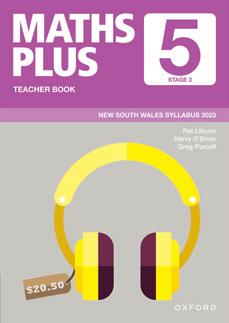
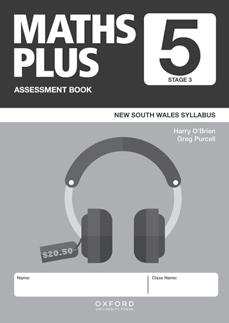
Series components
Student Books
Work towards achieving the relevant outcomes by developing skills and competency in understanding mathematical structures, fluency, reasoning and problem solving.
Mentals and Homework Books
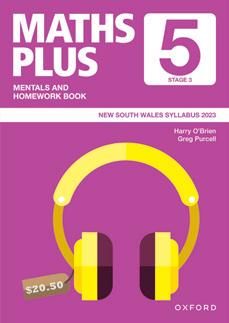
Provide concise, essential revision and consolidation activities that correspond with the concepts and units of work presented in the Student Books.
Assessment Books
Include short post-tests with a simple marking system to assess students’ skills and understanding of the concepts in the Student Books.
Student Book features
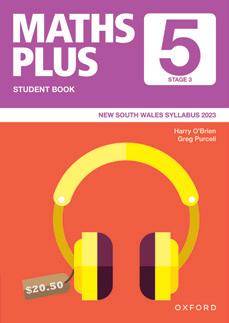
• All pages are colour coded.


Number and Algebra
and Space
Statistics and Probability

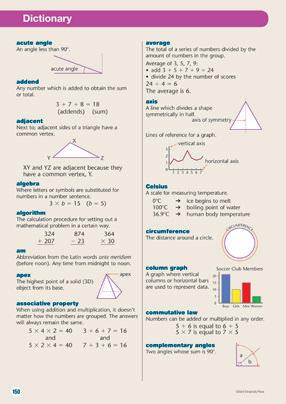
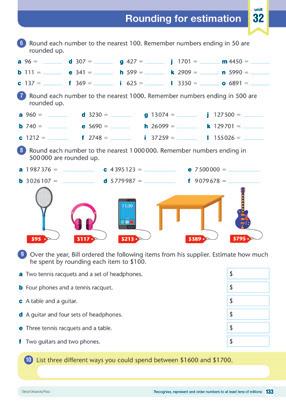
• Australian Curriculum Mathematics content descriptions, proficiency strand references and general capabilities appear on each page.
• The Dictionary (Years 2 to 6) features clear and simple explanations of mathematical terms and language.
Diagnostic term reviews
• Diagnostic term reviews (Years 1 to 6) assist in pinpointing students’ strengths and weaknesses, allowing intervention and re-teaching opportunities where required.
• The Find a topic page allows teachers the freedom to address particular topics and student needs as appropriate, providing essential revision and consolidation opportunities.
Teacher Book and Teacher Dashboard
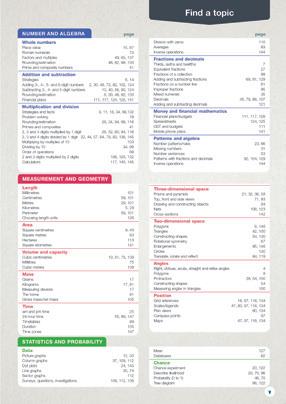
Provide access to a wealth of resources and support material:
• curricula and planning documents
• interactive teaching tools
• potential difficulties videos
• learning activities
• support and extension activities
• reflection
• blackline masters and investigation pages
• links to Advanced Primary Maths (Years 3 to 6)

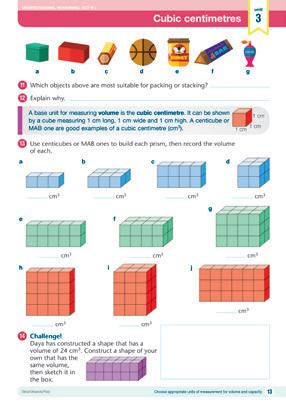

• assessment tests
• answers for student resources
www.oxfordowl.com.au
Oxford Owl is the home for Oxford Primary professional resources.
iv
Find a topic
Measurement
Dictionary
To the teacher
MP_NSW_SB5_38343_TXT_PPS_NG.indb 4 30-Aug-23 08:58:32
DRAFT


v Find a topic NUMBER
Whole numbers Place value 15, 60, 87, 107 Factors and multiples 65, 125 Rounding/estimation 34, 49, 82, 94, 98, 103, 133 Prime and composite numbers 41 Partitioning numbers 46, 125 Number sentences 53 Problem solving 3, 14, 34, 56 Addition and subtraction Strategies 3, 10, 14, 31, 56 Adding 3-, 4-, 5- and 6-digit numbers 6, 30, 48, 68, 72, 82, 117 Subtracting 3-, 4-, 5- and 6-digit numbers 10, 40, 56, 72, 90, 124 Multiplication and division Strategies and facts 2, 11, 18, 26, 34, 86, 111, 132, 141 Distributive law 86 Division with remainders 141 Primes and composites 41 2, 3 and 4 digits multiplied by 1 digit 26, 52, 94, 116 2, 3 and 4 digits divided by 1 digit 22, 44, 64, 78 Multiplying by multiples of 10 103 Dividing by 10 98 Order of operations 31, 73, 144 2 and 3 digits multiplied by 2 digits 106, 132 Calculator problems 102, 121 Area model 26 Partitioning/know 1, know 4 2 Averages 111 Inverse operations 129 Fractions and decimals Thirds and sixths 7 Equivalent fractions 27 Fractions of a quantity and length 99, 110 Adding and subtracting fractions 69, 91, 104 Fractions on a number line 7, 61 Improper fractions 35 Mixed numerals 35 Decimals 45, 79, 87, 107 Adding and subtracting decimals 120 Sequences of fractions 83 Subtracting fractions from wholes 95 Fractions and probability 12 Percentages 137, 140 Money and financial mathematics Financial plans/budgets 128 Spreadsheets 118 GST and budgets 145 Mobile phone plans 136 Rounding money 49 Patterns and algebra Number patterns/rules 23, 57 Missing numbers 31 Number sentences 53 Patterns with fractions and decimals 92, 104, 129 Inverse operations 144 Order of operations 31, 73, 129, 144 MEASUREMENT
Length Millimetres 42 Centimetres 59 Metres 29, 84 Kilometres 5, 29 Perimeter 42, 59 Choosing length units 126, 146 Area Square centimetres 9, 47, 139 Square metres 63 Hectares 113 Square kilometres 131 Area of triangles 130 Volume and capacity Cubic centimetres and millilitres 13, 51, 75, 112 Millilitres and litres 75 Mass Grams 17 Kilograms 17 Measuring devices 17 The tonne 81 Gross mass/net mass 105 Recognising metric units 146 Time am and pm time 25 24-hour time 55, 89, 101 Timetables 89 Duration 134 Time zones 101 Timelines 147 Three-dimensional space Prisms and pyramids 21, 32, 36, 58 Top, front and side views 71, 93 Drawing and constructing objects 93, 108 Nets 108, 123 Cross-sections 142 Two-dimensional space Polygons 8, 85 Triangles 42, 100, 127 Constructing shapes 54 Symmetry/rotational symmetry 67 Quadrilaterals 85 Parallelograms 88 Angles Right, obtuse, acute, straight and reflex angles 4, 54 Polygons 8 Protractors 28, 54, 66, 100 Measuring angles in triangles 100 Position Coordinates/grid references 16, 97, 119, 135 Scales/legends 84, 135 Plan views 84 STATISTICS AND PROBABILITY Data Ordinal data 80 Picture graphs 33 Column graphs 24, 33, 37, 109 Different graph displays 92, 143 Line graphs 50, 74 Sector graphs 92 Surveys, questions, investigations 92, 109, 138 Spreadsheet data 118 Databases 62 Chance Chance experiments 20, 122 Describe likelihood 12, 20, 70, 96 Tree diagram/all possible outcomes 96, 122 Likelihood 43 Probability using fractions 12 page page MP_NSW_SB5_38343_TXT_PPS_NG.indb 5 30-Aug-23 08:58:32 DRAFT
AND ALGEBRA
AND SPACE
NSW Syllabus Outcomes
MA3-RN-01
Applies an understanding of place value and the role of zero to represent the properties of numbers
MA3-RN-02
Compares and orders decimals up to 3 decimal places
MA3-RN-03
Determines percentages of quantities, and finds equivalent fractions and decimals for benchmark percentage values
MA3-AR-01
Selects and applies appropriate strategies to solve addition and subtraction problems
MA3-MR-01

Selects and applies appropriate strategies to solve multiplication and division problems
MA3-MR-02
Constructs and completes number sentences involving multiplicative relations, applying the order of operations to calculations
MA3-RQF-01
Compares and orders fractions with denominators of 2, 3, 4, 5, 6, 8 and 10
MA3-RQF-02
Determines
MA3-GM-01
of measures and quantities
Locates and describes points on a coordinate plane
MA3-GM-02
MEASUREMENT AND SPACE
Selects and uses the appropriate unit and device to measure lengths and distances including perimeters
MA3-GM-03
Measures and constructs angles, and identifies the relationships between angles on a straight line and angles at a point
MA3-2DS-01
Investigates and classifies two-dimensional shapes, including triangles and quadrilaterals, based on their properties
MA3-2DS-02
Selects and uses the appropriate unit to calculate areas, including areas of rectangles
MA3-2DS-03
Combines, splits and rearranges shapes to determine the area of parallelograms and triangles
MA3-3DS-01
Visualises, sketches and constructs three-dimensional objects, including prisms and pyramids, making connections to two-dimensional representations
MA3-3DS-02
Selects and uses the appropriate unit to estimate, measure and calculate volumes and capacities
MA3-NSM-01
Selects and uses the appropriate unit and device to measure the masses of objects
MA3-NSM-02
Measures and compares duration, using 12- and 24-hour time and am and pm notation
MA3-DATA-01
Constructs graphs using many-to-one scales
MA3-DATA-02
Interprets data displays, including timelines and line graphs
MA3-CHAN-01
Conducts chance experiments and quantifies the probability
MAO-WM-01 Working mathematically
STATISTICS AND PROBABILITY
Develops understanding and fluency in mathematics through exploring and connecting mathematical concepts, choosing and applying mathematical techniques to solve problems, and communicating their thinking and reasoning coherently and clearly
vi
Units 1 2 3 4 NUMBER AND ALGEBRA
2
1 4 , 1 5
1
1
,
and
10
MP_NSW_SB5_38343_TXT_PPS_NG.indb 6 30-Aug-23 08:58:33
DRAFT
STATISTICS AND PROBABILITY
MA3-DATA-01
MA3-DATA-02

MA3-CHAN-01
MAO-WM-01 Working mathematically
vii 5 6 7 8 9 10 11 12 13 14 15 16 17 18 19 20 21 22 23 24 25 26 27 28 29 30 31 32 33 34 35 NUMBER AND ALGEBRA MA3-RN-01 MA3-RN-02 MA3-RN-03 MA3-AR-01 MA3-MR-01 MA3-MR-02 MA3-RQF-01 MA3-RQF-02 MEASUREMENT AND SPACE MA3-GM-01 MA3-GM-02 MA3-GM-03 MA3-2DS-01 MA3-2DS-02 MA3-2DS-03 MA3-3DS-01 MA3-3DS-02 MA3-NSM-01 MA3-NSM-02
MP_NSW_SB5_38343_TXT_PPS_NG.indb 7 30-Aug-23 08:58:34
DRAFT
The 4 facts associated with this array are:


4 × 3 = 12
3 × 4 = 12
12 ÷ 3 = 4
12 ÷ 4 = 3
Write 4 facts you can derive from each array. 1
Associative and commutative laws
The commutative law of multiplication tells us that two factors of a multiplication number sentence can be multiplied in reverse and it will not change the answer.
3 × 4 has the same result as 4 × 3.
The associative law states that it does not matter in which order factors are multiplied. 3 × 2 × 4 has the same result as 4 × 2 × 3.
Complete these pairs of number sentences. 2
Write some division number sentences to find out if division is commutative. 3
Oxford University Press 2 1 unit PROBLEM SOLVING, UNDERSTANDING CCT N Selects and applies appropriate strategies to solve multiplication and division problems Partitioning/know 1, know 4 a 4 × 5 = b 3 × 4 = c 5 × 3 =
d 6 × 3 = e 5 × 6 = f 6 × 7 = a 5 × 7 = 7 × 5 = b 3 × 2 × 4 = 4 × 3 × 2 = c 3 × 7 × 4 = 7 × 4 × 3 =
MP_NSW_SB5_38343_TXT_PPS_NG.indb 2 30-Aug-23 08:58:34 DRAFT
Addition and subtraction strategies
Last year, the following strategies were taught. Use them to solve the questions on this page.
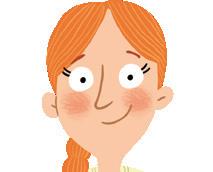

Use the split strategy to add and subtract these numbers.
Bridge to a decade to calculate the answers.
Estimate an answer to each of the additions and subtractions by rounding each number. The first one is done for you.
Solve these problems using your mental arithmetic skills.
a Jim has 54 m of timber in one pile and 38 m of timber in another. How much timber does he have altogether?
b Sarah had $73 in her bank account but spent $48 on clothes. How much money does she have left in her bank account?
Oxford University Press 3 1 unit
Selects and applies appropriate strategies to solve addition and subtraction problems COMMUNICATING, PROBLEM SOLVING L N CCT
a 42 + 35 = h 57 + 28 = o 427 + 132 = b 31 + 54 = i 23 + 35 = p 534 + 354 = c 62 32 = j 24 + 67 = q 627 + 252 = d 23 + 45 = k 68 47 = r 309 + 490 = e 42 + 54 = l 75 + 36 = s 378 267 = f 48 + 26 = m 325 + 133 = t 784 + 141 = g 66 34 = n 372 + 125 = u 356 + 277 =
a 35 + 27 = g 72 33 = m 127 + 27 = b 46 + 28 = h 83 24 = n 236 + 37 = c 35 + 27 = i 94 35 = o 357 + 46 = d 49 + 23 = j 64 26 = p 268 + 35 = e 67 + 35 = k 75 36 = q 352 25 = f 58 + 29 = l 82 47 = r 293 35 =
Question Estimate Question Estimate Question Estimate a 297 + 509 800 h 227 + 477 o 937 + 387 b 687 217 i 408 + 179 p 878 427 c 607 + 384 j 575 325 q 769 440 d 717 + 279 k 297 + 313 r 435 + 867 e 689 321 l 556 + 437 s 789 423 f 773 + 228 m 717 + 477 t 827 + 579 g 456 + 249 n 569 437 u 698 + 713
4 5 6 7 38 + 37? Think, 38 + 30 = 68, then add 2 and 5 more. Add the hundreds, tens and ones separately. 325 + 133? Think, 300 + 100 plus 20 + 30 plus 5 + 3 equals 458. MP_NSW_SB5_38343_TXT_PPS_NG.indb 3 30-Aug-23 08:58:35
DRAFT
Recognising angles
An angle is the amount of turn between two arms. Angles can be measured and named according to the size of their opening. This common angle is called a right angle.
It is equal to a 1 4 turn of the hands on a clock face.
Angles are classified according to the amount of turn between two arms.
Right angle
Obtuse angle
Acute angle
Straight angle
Reflex angle
Square corner; 90°
Larger than a right angle; greater than 90°
Smaller than a right angle; less than 90°
Can be made from two right angles; 180°
Label the angles either right angle, obtuse, acute, reflex or straight.
Larger than a straight angle; greater than 180°
A B
C

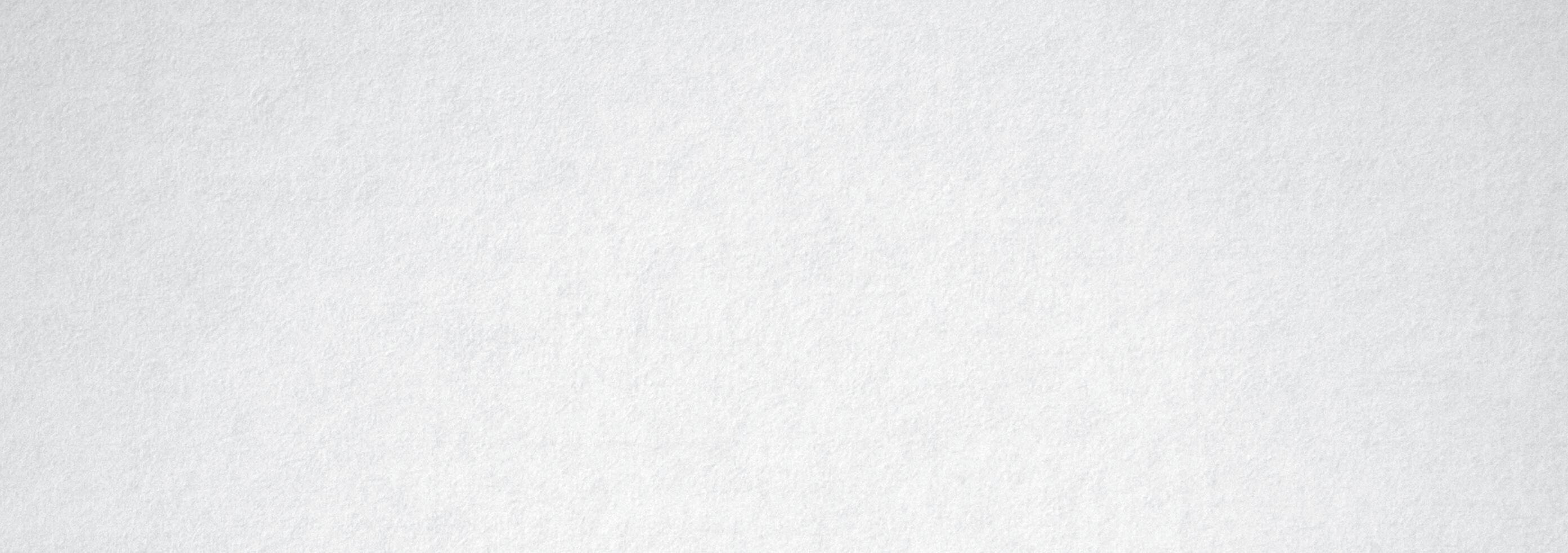
Identify which shape is being described.
a I have four right angles.
b I have one obtuse angle, one acute angle and two right angles.
c I have three acute angles.
d I have three right angles and two obtuse angles.
e I have six obtuse angles.
D E
Find two acute angles and two obtuse angles in your classroom.
Oxford University Press 4 unit 1 Measures and constructs angles, and identifies the relationships between angles on a straight line and angles at a point L CCT
9
10
a b c d e f g h
8
11 12 1 2 3 4 5 6 7 8 9 10 amount of turn vertex arm MP_NSW_SB5_38343_TXT_PPS_NG.indb 4 30-Aug-23 08:58:35 DRAFT
Longer distances are measured in kilometres. There are 1000 metres in 1 kilometre. Trundle wheels are often used to measure long distances because each revolution equals 1 metre.
How many times would a trundle wheel click when measuring 1 kilometre?
Measuring 1 kilometre
You will need a trundle wheel and about 11 traffic cones. With your teacher, select an area that you think is about 1 kilometre long. Mark your starting point with a traffic cone and begin walking in a straight line, counting the clicks of the trundle wheel as you go. At the count of every 100 metres, place a cone until you have covered 1000 metres.
Mark out a 1 kilometre cross-country course
11 12 13
In your school, mark out a cross-country course that is about 1 kilometre. You may need to write some distances in chalk on the ground or mark distances with markers. It can zigzag or go around buildings a number of times.
Use a stopwatch to record how long it takes your group members to run your course.
Use the map of New South Wales and the distances from Sydney to calculate the distances between these places.
10 × 100 m equals 1 km.
Use a street directory or online map to help you name locations about 1 2 a km from school, about 1 km from school and about 2 km from school.

Oxford University Press 5 unit 1 Selects and uses the appropriate unit and device to measure lengths and distances including perimeters COMMUNICATING, REASONING L The
kilometre
a Kingscliff Port Macquarie Distance b Bega Wollongong Distance c Coffs Harbour Newcastle Port Macquarie Newcastle Merimbula Wollongong Distance Distance Distance
About 1 2 km About 1 km About 2 km 14 15 d e Town Distance from Sydney Kingscliff 840 km Coffs Harbour 558 km Port Macquarie 407 km Newcastle 162 km Sydney Wollongong 78 km Bega 446 km Merimbula 456 km BRISBANE Gold Coast Kingscliff Ballina Iluka Arrawarra Coffs Harbour Port Macquarie Halidays Point Nelson Bay Newcastle The Entrance Bega Merimbula Albury Hay West Wyalong Narrandera Wagga Wagga Yass Nyngan Dubbo Narrabri Burke Moree Inverell Tamworth Armidale Wollongong SYDNEY MP_NSW_SB5_38343_TXT_PPS_NG.indb 5 30-Aug-23 08:58:36 DRAFT
Learning to trade in an addition sum
PROCESS Hund Tens Ones
Add 9 ones plus 3 ones equals 12 ones. Exchange 10 ones for 1 ten. Record 2 in the ones column.
Add 1 hundred plus 1 hundred equals 2 hundreds. Add 1 ten plus 3 tens plus 1 ten equals 5 tens. Trade the 10 ones for a ten.
Complete each addition algorithm.

Solve the problems.
a At Kingsland primary school there are 248 girls on the school roll and 249 boys. How many children attend the school?

b Ms Green, the garden shop owner, banked $389 on Monday and $456 on Tuesday. What was her total banking for the two days?
Selects and applies appropriate strategies to solve addition and subtraction problems PROBLEM SOLVING, COMMUNICATING L N CCT MP_NSW_SB5_38343_TXT_PPS_NG.indb 6 30-Aug-23 08:58:37 DRAFT
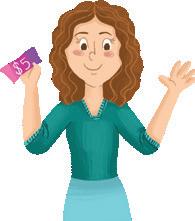
Oxford University Press 6 unit 2
a Hund Tens Ones b Hund Tens Ones c Hund Tens Ones d Hund Tens Ones e Hund Tens Ones 2 2 6 3 5 9 3 8 4 3 5 9 3 5 9 + 1 3 8 + 2 3 6 + 2 6 6 + 4 0 6 + 2 6 5 f Hund Tens Ones g Hund Tens Ones h Hund Tens Ones i Hund Tens Ones j Hund Tens Ones 3 0 7 2 4 5 4 5 6 8 0 7 3 5 7 2 6 3 0 6 2 3 6 7 4 7 3 + 1 4 3 + 4 0 7 + 2 9 7 + 9 + 3 8 k 2 6 7 g l 2 6 1 cm m 2 7 ° C n 4 2 5 mL o $ 7 . 8 5 3 0 4 g 3 7 cm 3 5 ° C 3 6 2 mL $ 8 . 8 5 1 6 5 g 5 3 cm 6 ° C 3 7 mL $ 0 . 8 6 + 1 4 g + 4 1 0 cm + 2 3 ° C + 1 2 4 mL + $ 8 . 5 8
1 2 Hundreds Tens Ones +
1 13 3 + 1 1 9 2 5 2
Revising 3-digit addition
2 3
Thirds and sixths 2
The numerator shows us how many parts out of the whole (the fractional part).
The denominator shows us how many parts are in the whole.
What fraction of each shape is shaded? The first one has been done for you.
Label the fractions on the number lines.
Which fraction is larger:
?

Oxford University Press 7 unit Compares and orders fractions with denominators of 2, 3, 4, 5, 6, 8 and 10 Determines 1 2 , 1 4 , 1 5 and 1 10 of measures and quantities REASONING N CCT
a b c d 2 3 e f g h Shade
a b c d 2 3 5 6 Shade the fraction of
a b c 5 6 2 3 1 2
the fractions.
each group.
a 3 3 1 0 Thirds b 6 6 1 0 6 6 6 Sixths c
4 6
1 2
3 4 5 6 1 0 2 Halves 7 1 3 3 6 MP_NSW_SB5_38343_TXT_PPS_NG.indb 7 30-Aug-23 08:58:37 DRAFT
or
A polygon is a shape made up of three or more straight sides.
Give a clear description of each shape by recording its properties.
A parallelogram is a four-sided shape with two pairs of parallel sides. Opposite sides and angles are equal. A square and a rectangle are examples of a parallelogram.
Circle the parallelogram.
and classifies two-dimensional shapes, including triangles and quadrilaterals, based on their properties
8 unit Oxford University Press 2
COMMUNICATING, REASONING CCT
Revising polygons Investigates
Shape Name Sides Angles Types of angles Lines of symmetry triangle 3 3 acute 3
8 9
MP_NSW_SB5_38343_TXT_PPS_NG.indb 8 30-Aug-23 08:58:37
DRAFT
Bank
Calculating area 2
Martha wanted to know what the area of her bank card was, so she divided it exactly into square centimetres and counted them up.

a Find a quicker way for finding the area using the square centimetres Martha drew on the card.
b Explain what it is.

Apply the formula ‘Area = length × width’ to find the area of these shapes. 11
12
Calculate the areas of this ticket.
a What is the area of the smaller section of the ticket? cm2
b What is the area of the larger section of the ticket? cm2
MP_NSW_SB5_38343_TXT_PPS_NG.indb 9 30-Aug-23 08:58:37 DRAFT
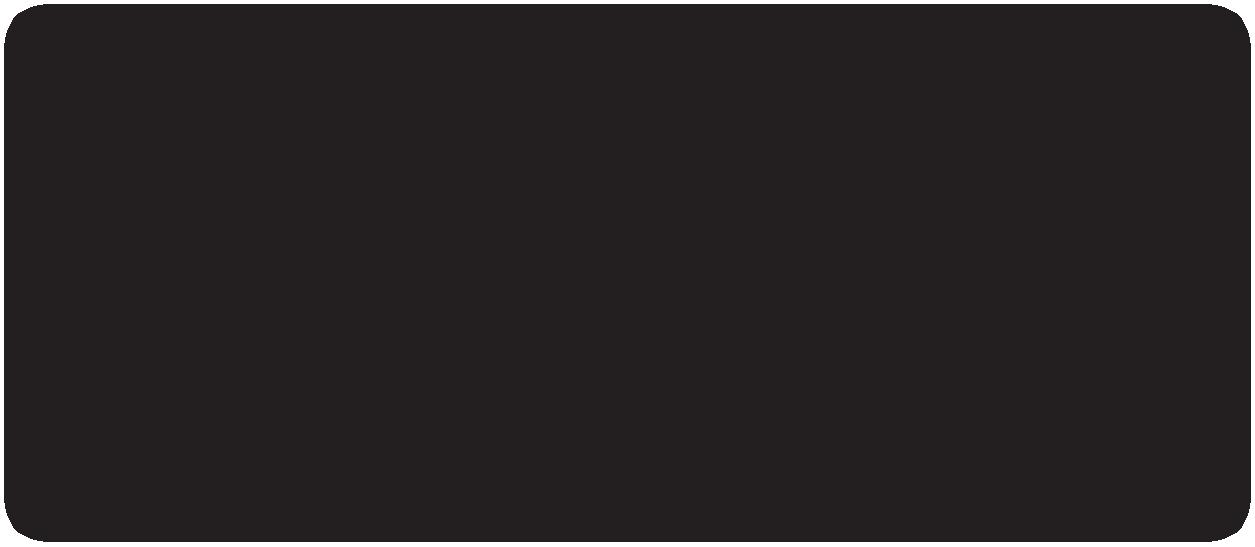
Oxford University Press 9 unit Selects and uses the appropriate unit to calculate areas, including areas of rectangles COMMUNICATING, REASONING N CCT
10
a 3 cm 2 cm c 4 cm 3 cm b 2 cm 4 cm 6 cm 3 cm d Length Width Area a cm cm cm2 b cm cm cm2 c cm cm cm2 d cm cm cm2 THE MCG THE MCG B12 B12 8:00 pm 30 NOV 8:00 pm 30 NOV
ANY 4578
c What is the total area of the ticket? cm2 08/12 08/08 MS MARTHA
9632 4569 8741
MARTIQUE
The area of rectangles can be found by multiplying the length by the width. Area = length × width (This is known as the formula for area.)
Area = length × width
Subtract 1 hundred from 2 hundreds to give 1 hundred.
1 ten
Trade a ten for 10 ones.
9 ones from 3 ones can’t be done. Trade a ten from the tens column to the ones column to make 13 ones.
4 tens becomes 3 tens. 9 ones from 13 ones equals 4 ones.
Complete these subtractions without trading.
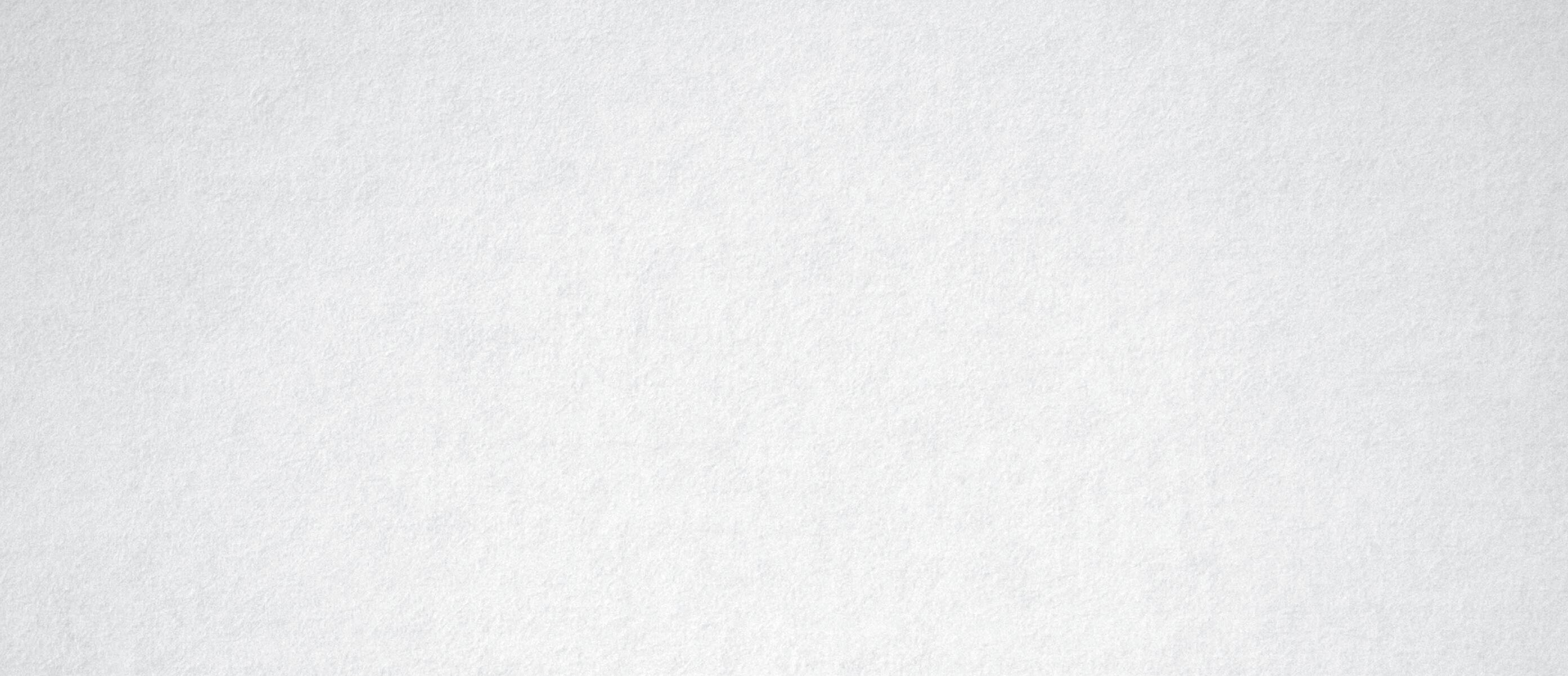
2 Complete these subtractions with trading in the ones.
Complete these subtractions with trading in the tens.
Crack this secret code by matching shapes with their numbers.
Oxford University Press 10 unit 3 Selects and applies appropriate strategies to solve addition and subtraction problems PROBLEM SOLVING L N CCT
Revising 3-digit subtraction
a Hund Tens Ones b Hund Tens Ones c Hund Tens Ones d Hund Tens Ones e Hund Tens Ones 8 7 9 9 8 3 7 5 4 8 7 9 3 5 8 2 5 7 3 4 2 2 3 3 4 3 4 1 2 3
a Hund Tens Ones b Hund Tens Ones c Hund Tens Ones d Hund Tens Ones e Hund Tens Ones 8 5 2 9 3 2 4 4 4 9 4 3 7 9 5 4 3 4 6 1 5 2 3 7 6 2 5 4 6 8
a Hund Tens Ones b Hund Tens Ones c Hund Tens Ones d Hund Tens Ones e Hund Tens Ones 6 4 8 8 2 8 7 4 9 7 6 8 6 3 7 2 6 3 2 6 3 2 5 6 8 3 5 2
a = c = b = d = 1 2 3 4 985 448 111 625 907 72 85
in subtraction PROCESS Hund Tens Ones 2 3 4 / 13 1 1 9 1 2 4 Hundreds Tens Ones
from 3 tens to give
tens.
Trading
Subtract
2
MP_NSW_SB5_38343_TXT_PPS_NG.indb 10 30-Aug-23 08:58:38 DRAFT


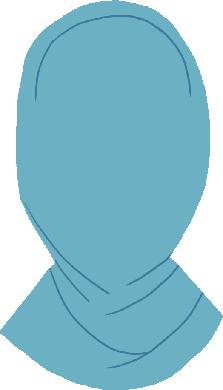





Oxford University Press 11 unit Selects and applies appropriate strategies to solve multiplication and division problems PROBLEM SOLVING, REASONING CCT L Revising division facts/remainders 3 Answer the division facts. ÷ 3 ÷ 5 ÷ 6 ÷ 7 ÷ 8 a 6 b 10 c 12 d 14 e 48 12 20 24 28 72 9 30 18 21 24 18 45 30 35 56 24 35 42 49 80 5 Answer
a 25 ÷ 4 = 6 1 r g 32 ÷ 6 = r b 25 ÷ 6 = r h 37 ÷ 7 = r c 15 ÷ 7 = r i 45 ÷ 6 = r d 21 ÷ 4 = r j 51 ÷ 7 = r e 30 ÷ 4 = r k 65 ÷ 8 = r f 29 ÷ 5 = r l 84 ÷ 9 = r Share the bag of 33 marbles. a 33 ÷ 2 = r b 33 ÷ 4 = r c 33 ÷ 6 = r d 33 ÷ 5 = r e 33 ÷ 8 = r 6 7 4 5 22 divided by 4 makes 5 rows of 4 with 2 left over. The 2 left over becomes the remainder. 5 r2 4 2 2 Remainders are labelled with an r MP_NSW_SB5_38343_TXT_PPS_NG.indb 11 30-Aug-23 08:58:38 DRAFT
these division facts with remainders. The first one has been done for you.
Probability using fractions 3



Fractions can be used to describe chance. For example, the chance of a dice landing on 6 is one out of 6, or 1 6 .
Write the fraction to describe the chance of a dice:
a landing on a five
b landing on a one
c landing on an even number
d landing on a number less than five
8 9
Write the fraction to describe the chance of these spinners landing on blue.
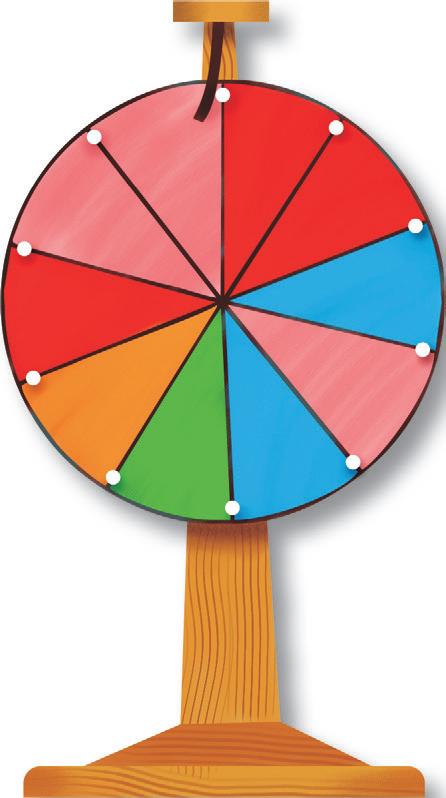


b c
Lena put 20 different-coloured marbles in a bag. Write true or false to answer the questions about marbles being drawn from the bag first go.
a The chance of blue being drawn is 4 20 .
b The chance of red being drawn is 5 20 .
c The chance of green being drawn is 3 20 .
d The chance of yellow being drawn is 5 20
e The chance of purple being drawn is 1 20 .
f The chance of orange being drawn is 5 20
10 11
Make up a bag of different-coloured marbles or counters yourself and write the chances, as fractions, of drawing a colour from the bag.
12 unit Oxford University Press Conducts chance experiments and quantifies the probability
a
COMMUNICATING L N CCT P R R R R R B B Y Y Y Y G G G O O O O O MP_NSW_SB5_38343_TXT_PPS_NG.indb 12 30-Aug-23 08:58:39 DRAFT
Which objects above are most suitable for packing or stacking?
Explain why.
A base unit for measuring volume is the cubic centimetre. It can be shown by a cube measuring 1 cm long, 1 cm wide and 1 cm high. A centicube or MAB one are good examples of a cubic centimetre (cm3).
Use centicubes or MAB ones to build each prism, then record the volume of each.
Challenge!
Daya has constructed a shape that has a volume of 24 cm3. Construct a shape of your own that has the same volume, then sketch it in the box.
Oxford University Press 13 unit 3 Selects and uses the appropriate unit to estimate, measure and calculate volumes and capacities
a b c d cm3 cm3 cm3 cm3 e f g cm3 cm3 cm3 h i j cm3 cm3 cm3
12 13 14 15 a b c d e f g Biscuits PERFUME
1 cm 1 cm 1 cm HONEY ChocolateBarBAR
UNDERSTANDING, REASONING CCT N L MP_NSW_SB5_38343_TXT_PPS_NG.indb 13 30-Aug-23 08:58:40
Cubic centimetres
DRAFT
Addition and subtraction strategies
Last year the following strategies were taught. Use them to answer the questions on this page.

Use your knowledge of number facts to extend these additions and subtractions.

2 Use the jump strategy to add and subtract these numbers.
Add the numbers mentally using the compensation strategy.

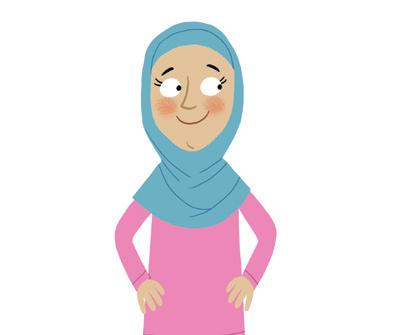
Subtract the numbers mentally using the compensation strategy.
Use the strategies above to write addition and subtraction number sentences that have an answer of 54.
Oxford University Press 14 unit 4 Selects and applies appropriate strategies to solve addition and subtraction problems PROBLEM SOLVING L N CCT
a 7 + 8
g 300
b 70 + 80 = h 800 400 = c 700 +
i 400 + 900 = d 60 + 70
j 180 + 70 = e 90 + 50 = k 250 + 80 = f 150 60 = l 800 500 =
=
+ 700 =
800 =
=
a 26 + 15 = h 57 26 = o 148 + 24 = b 35 + 27 = i 68 + 29 = p 137 36 = c 46 + 42 = j 78 + 36 = q 146 + 25 = d 35 + 23 = k 127 25 = r 157 26 = e 48 25 = l 132 + 37 = s 185 24 = f 58 37 = m 156 + 23 = t 297 + 33 = g 63 + 65 = n 142 + 34 = u 347 + 46 =
a 24 + 39 = e 27 + 42 = i 336 + 33 = b 36 + 28 = f 53 + 38 = j 242 + 41 = c 54 + 21 = g 36 + 32 = k 137 + 57 = d 47 + 49 = h 47 + 32 = l 545 + 27 =
a 65 29 = e 83 49 = i 196 37 = b 72 39 = f 92 78 = j 285 57 = c 85 38 = g 64 37 = k 174 36 = d 73 49 = h 72 37 = l 283 58 = 1 2 3 4
5
3 + 5 = 8, so 30 + 50 = 80 and 300 + 500 = 800. 38 + 43? Think 38 + 40 + 3 = 81. 35 + 48? Think 35 + 50 minus 2. 64 – 29? Think 64 – 30 + 1.
39 + 15 = 54
MP_NSW_SB5_38343_TXT_PPS_NG.indb 14 30-Aug-23 08:58:40 DRAFT
Reading numbers
When we read numbers, we read them in groups of hundreds, tens and ones. The following chart best illustrates this concept.
Write these numbers in numerals. The first one is done for you.

a Two hundred and sixteen thousand, four hundred and twenty-six.
b Three hundred and twenty-one thousand, two hundred and sixteen.
c Four hundred and thirty-five thousand, five hundred and sixty.
d One million, five hundred and eighteen thousand, six hundred and twenty.
e Twelve million, two hundred and seventy thousand, four hundred and eighty.
f Twenty-eight million, three hundred and seventy-eight thousand, nine hundred and ninety-nine.
The table below shows the areas of each state and territory of Australia.
a List the states and territories in order of their areas. ACT,
b Which state has an area closest to 1 000 000 km2?
c Which state has an area closest to 3 000 000 km2?
d Which states are more than double the area of NSW?
e Which state is more than double the area of SA?
f Which state is closest to the area of NSW?
Oxford University Press 15 unit 4 Applies an understanding of place value and the role of zero to represent the properties of numbers
Examples Millions Thousands Ones Note: A
millions
the
Hund Tens Ones Hund Tens Ones Hund Tens Ones 765 364 7 6 5 3 6 4 32 305 706 3 2 3 0 5 7 0 6 H T O H T O EXAMPLE 1 7 6 5 thousands 3 6 4 ones H T O H T O H T O EXAMPLE 2 3 2 millions 3 0 5 thousands 7 0 6 ones
space separates the
from the thousands, and
thousands from the ones.
216 426
NSW Vic ACT Qld WA SA NT Tas 802 000 km2 228 000 km2 2000 km2 1 727 000 km2 2 562 000 km2 984 000 km2 1 346 000 km2 68 000 km2
6 7 WA NT Qld SA NSW ACT Tas Vic UNDERSTANDING L N MP_NSW_SB5_38343_TXT_PPS_NG.indb 15 30-Aug-23 08:58:41
DRAFT
Coordinates are used to locate position on a number plane. The order of the numbers is very important.
The first number is the reading on the x axis
The second number is the reading on the y axis
The number plane, on the left, shows the point (3,2).

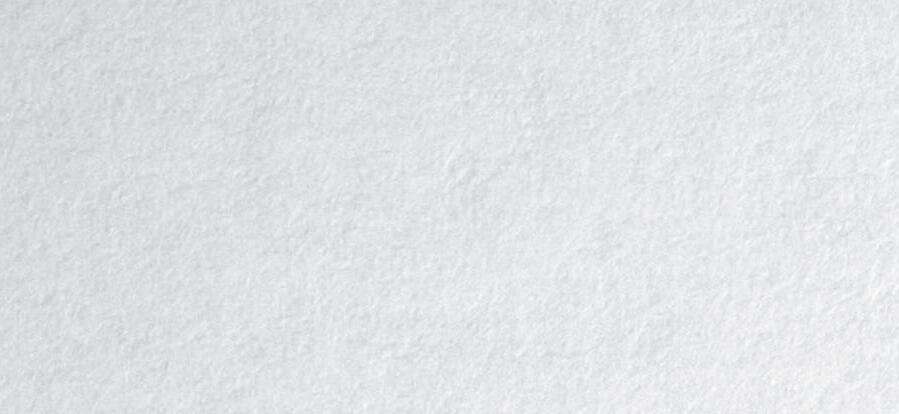
8
Plot the coordinates, then connect them to make a polygon.
a Plot these points: (2,1), (1,3), (3,5), (5,3) and (4,1).
b Join (2,1) to (1,3).
c Join (1,3) to (3,5).
d Join (3,5) to (5,3).
e Join (5,3) to (4,1).
f Join (4,1) to (2,1).
What shape did you make?
Remember! Read the horizontal before the vertical, e.g. (9,3) Port Macquarie
Find the closest coordinate for each place.
16 unit Oxford University Press Locates and describes points on a coordinate plane
COMMUNICATING L N CCT
4 Coordinates
Perth c Adelaide e Cairns b Brisbane d Port Macquarie (NSW) f Darwin 10 Broome Busselton Eyre Whyalla Woomera Wyndham Tennant Creek Tenterfield Armidale Port Macquarie Bourke Dubbo Broken Hill Cowra Cooma Shepparton Milparinka TIMOR SEA CORAL SEA ULURU 0 1 2 3 4 5 6 7 8 1 2 3 4 5 6 7 8 9 10 0 0 1 2 3 4 1 2 3 4 x y
a
1 0 0 1 2 3 4 5 2 3 4 5 6 x y MP_NSW_SB5_38343_TXT_PPS_NG.indb 16 30-Aug-23 08:58:41 DRAFT
9
Estimate the mass of each object in grams, then measure them using standard masses.
Object Estimate Mass
a Pencil case
b Textbook

c Basketball
11 12

This cardboard box can hold a mass of 3 kg. How many of each item could be packed into a box of this type?
250 g 750 g 150 g 50 g 2 3 0 +
+ =
-
% C / 4 5 6 7 8 9 a b c d
Masses can be recorded using decimal notation. 300 g = 0.3 kg 250 g = 0.25 kg 258 g = 0.258 kg

13
Write the masses as decimals.
a 500 g = kg
b 250 g = kg
c 275 g = kg
d 376 g = kg
e 459 g = kg
f 674 g = kg
g 1 kg and 632 g = kg
h 1 kg and 347 g = kg
i 1 kg and 250 g = kg
j 2 kg and 374 g = kg
k 2 kg and 500 g = kg
l 3 kg and 200 g = kg
Draw a line from each object to the most suitable measuring device. 14
d e a b Dictionary Dictionary
5.25 kg
c
Kitchen scales
Bathroom scales
Weighbridge
Electronic scale
BUTTER 250 g MP_NSW_SB5_38343_TXT_PPS_NG.indb 17 30-Aug-23 08:58:43 DRAFT
Oxford University Press 17 unit Selects and uses the appropriate unit and device to measure the masses of objects
REASONING, PROBLEM SOLVING N 4
Mass
3kg Glue 1 ON OFF
Displacement tank
Flour
d
5
Complete the multiplication facts using your knowledge of place value.

Use your knowledge of place value to multiply by tens. For example, 50 × 60 equals 5 tens × 6 tens which equals 30 hundreds (3000).
a 20 × 50 =
b
c 40 × 40 =
d
Mentally calculate the products of these multiplications.
The product is the result of multiplying.
Use mental computation skills to solve the problems.
a Mary bought 6 games. How much did she spend?
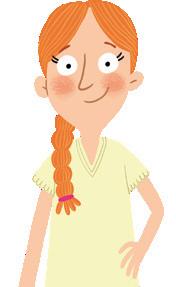
b Thomas bought 3 watches. How much did he spend?
c Sarah bought 5 T-shirts. How much did she spend?
d How much would 5 books cost?
e How much would 4 dresses cost?
If you had $150 to spend on the above items, how might you spend it? 5
Oxford University Press 18 unit Selects and applies appropriate strategies to solve multiplication and division problems
PROBLEM SOLVING N
Multiplication strategies/products
e 4
i 7 ×
a 3 × 30 =
× 60 =
40 =
f
j 8 ×
b 4 × 30 =
5 × 60 =
50 =
g 7
k 9 ×
c 5 × 40 =
× 30 =
60 =
6
h 4 ×
l 7 ×
× 30 =
80 =
70 =
f
k
40 × 60 =
40 × 70 =
l
30 × 40 = g 60 × 50 =
70 × 70 =
h
m
50 × 50 =
70 × 50 =
n
30 × 50 = i 70 × 30 =
80 × 80 =
o
e 40 × 50 = j 60 × 60 =
80 × 70 =
24 × 5 = e 14 × 7 = i 36 × 6 = b 23 × 5 = f 22 × 6 = j 34 × 6 = c 32 × 5 = g 37 × 3 = k 38 × 3 = d 13 × 7 = h 34 × 7 = l 43 × 5 = $26 $30 $60 $46 $40
a
1 2 3 4 3 × 5 = 15 so 3 × 5 tens = 150.
The product of 3 and 5 is
32 × 5? Think 30 × 5 plus 2 × 5.
15.
WORLD OF DOGS CRAZY CAR PG CHASE 12 6 9 3 1 11 2 10 4 8 5 7 12 6 9 3 1 11 2 10 4 8 5 7 12 6 9 3 1 11 2 10 4 8 5 7 12 6 9 3 1 11 2 10 4 8 5 7 MP_NSW_SB5_38343_TXT_PPS_NG.indb 18 30-Aug-23 08:58:44
DRAFT
Problem solving 5
Discuss with a friend what strategies you would use to solve these problems. Solve them, then check your solutions with other groups in the class.
Problem Strategies Answer
a A farmer planted 78 trees in 6 paddocks. If the trees were shared equally, how many trees would there be in each paddock?
b A teacher shared 96 counters among 6 students. How many did each student receive?
c Mabel bought 5 tins of beans for 79c per tin and a can of dog food for 96c. How much did she spend on her purchases?

d Samuel saved $35 per week for 9 weeks from his weekly wages. How much did he save altogether?

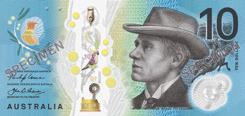
e Huan planted 100 flowers but only 1 4 of them sprouted. How many flowers sprouted?
f A bicycle wheel has a circumference of 2 m. How many times will it need to turn to cover a distance of 528 m?
g The cake stall collected $296 at the fete. If $20 was spent hiring a tent and $70 was spent on ingredients, what was the cake stall profit?
h The cost of a camp was $40 per student plus $15 each for the bus. How much money did the teacher collect from 30 students?
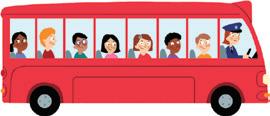
Think about the strategies you used to solve question 6g, then write another method you could use in the future to solve a problem like it.
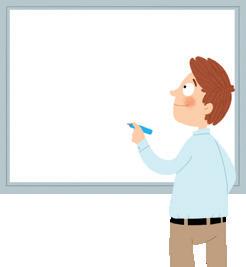
Oxford University Press 19 unit Selects and applies appropriate strategies to solve addition and subtraction problems Selects and applies appropriate strategies to solve multiplication and division problems
6
7 96
PROBLEM SOLVING L N MP_NSW_SB5_38343_TXT_PPS_NG.indb 19 30-Aug-23 08:58:45 DRAFT
Baked Beans
Chance experiments 5
Dice-rolling experiment
a If you rolled two dice and totalled the scores, what do you think would be the most common score?
b Roll two dice 40 times, recording the total of each roll in the table below.
c Which total was most frequent?
d Which total was least frequent?
Use the data in the table above to order the scores from least to most.
Do you think 7 would usually have more responses than 12?
Explain why.
Mr Carson put 30 of his favourite-coloured round lollies in a bag.
a How many of each lolly are there? R Y G O
b Which is the most likely colour to be drawn out of the bag?
c How would you describe the chance of red being drawn out of the bag?
d Which is the least likely colour to be drawn out of the bag?
e Is it more likely that an orange lolly would be drawn than a green one?
f Is it more likely that a yellow lolly would be drawn than a green one?
20 unit Oxford University Press
Total Tally Frequency Total Tally Frequency 2 8 3 9 4 10 5 11 6 12 7
8 9 10 11 12 R R R R R R R R R R R R R R R Y Y Y Y Y Y Y Y G G G G G O O Conducts chance experiments and quantifies the probability REASONING L N MP_NSW_SB5_38343_TXT_PPS_NG.indb 20 30-Aug-23 08:58:45 DRAFT
Naming prisms and pyramids
Prisms have two bases that are the same shape and size. All other faces on a prism are rectangular. Prisms are named from the shape of their bases.
Pentagonal prism
Draw a line to join each object to its name.

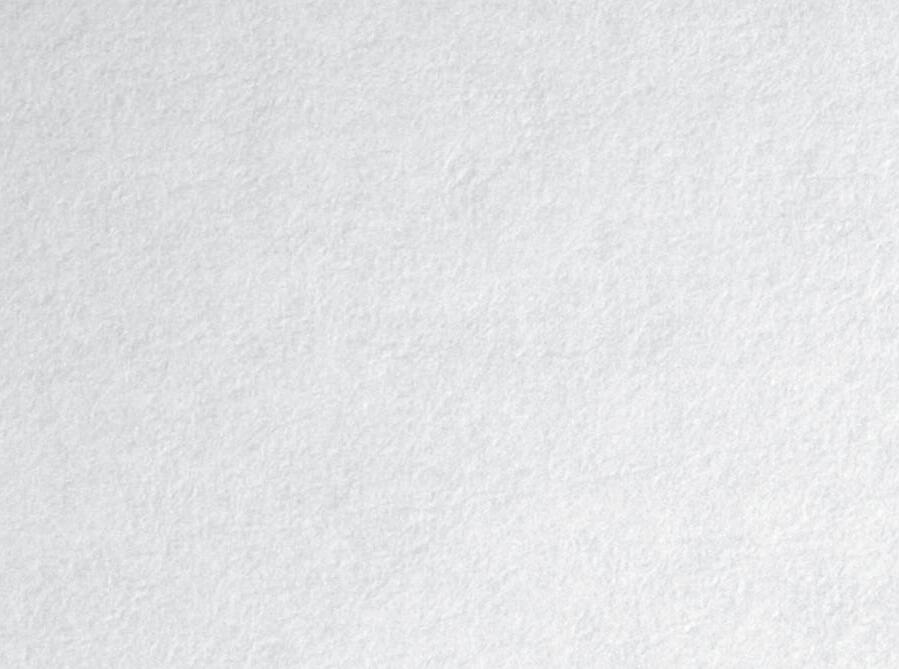
Pyramids have only one base, with all other faces being triangles. The triangular faces meet at a common apex. Pyramids are named from the shape of their base.
rectangular prism
rectangular pyramid
square pyramid
triangular pyramid cube
hexagonal prism
triangular prism
pentagonal prism
pentagonal pyramid
octagonal prism
hexagonal pyramid
octagonal pyramid
Visualises, sketches and constructs three-dimensional objects, including prisms and pyramids, making connections to two-dimensional representations
apex
Oxford University Press 21 unit
13
Pentagonal pyramid
5 UNDERSTANDING L MP_NSW_SB5_38343_TXT_PPS_NG.indb 21 30-Aug-23 08:58:45 DRAFT
Another way of recording division is by using the division symbol. ÷ The quotient is the result of a division.
Find the quotients of these divisions.
means
= 4

An example of division that leaves a remainder: Tina wanted to share 26 icy-pole sticks among 5 people. She knows that it will not work out equally and that there must be a remainder.
Solve these divisions that have remainders. The first one is done for you.
DRAFT
There are 72 students in Year 5 who need to be transported to the Sports Carnival. How many trips would each vehicle below make if it was the only vehicle available to transport the students? (Working paper may be needed.)
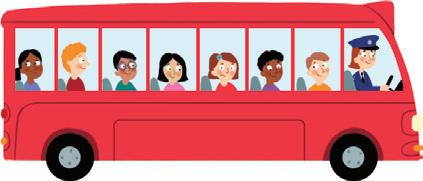
trips
trips
3 passengers
4 passengers c trips
5 passengers 12 passengers
trips
How many trips would the whole fleet of vehicles need to make if they transported the students together? trips
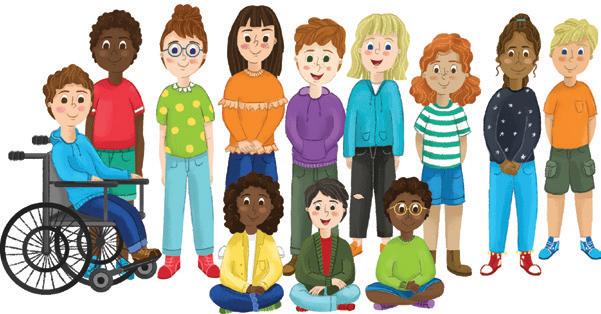
Oxford University Press 22 unit PROBLEM SOLVING L CCT Revising 2-digit division/quotients 6 Selects and applies appropriate strategies to solve multiplication and division problems
a 3 1 5 b 4 2 0 c 5 2 5 d 6 2 4 e 7 4 9 f 4 1 2 g 3 1 8 h 6 3 0 i 7 4 2 j 8 6 4 k 5 1 5 l 4 2 8 m 5 4 5 n 8 4 0 o 9 7 2
a 5 r1 3 1 6 b 3 2 2 c 7 4 5 d 8 4 5 e 6 4 4 f 4 1 8 g 4 3 4 h 6 4 5 i 9 4 7 j 7 5 2 k 5 2 2 l 5 3 3 m 7 5 0 n 8 4 3 o 8 5 0
a
b
d
1 2 3 4
26 shared among 5 people gives 5 to each person and 1 left over (remainder 1). 12 ÷ 3
3 1 2 5 r1 5 2 6 MP_NSW_SB5_38343_TXT_PPS_NG.indb 22 30-Aug-23 08:58:46
quotient 4
Continue
Write a rule for each number pattern, then use it to predict the next two terms in the pattern.
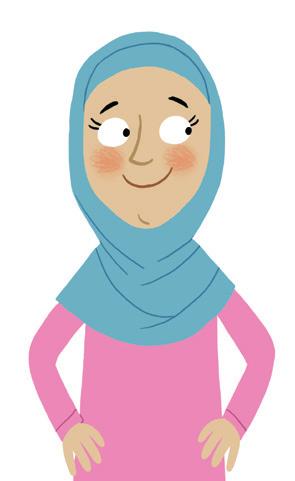
You must look closely at the previous terms in the pattern.
Continue to make the pattern of square numbers and record the numbers. 4 9 16
Look for a rule or a pattern in the square numbers, then extend the table to the twelfth square number.
Square numbers 4 9 16
Oxford University Press 23 unit 6
Selects and applies appropriate strategies to solve multiplication and division problems N CCT
Number patterns
the number
a 15 20 25 30 e 536 532 528 524 b 12 16 20 24 f 213 227 241 255 c 4 7 10 13 g 3 6 12 24 d 5 12 19 26 h 198 191 184 177
patterns.
Rule Pattern a 43 40 37 34 31 b 53 57 61 65 69 c 3.5 4 4.5 5 5.5 d 1 2 4 8 16 e 128 64 32 16 8 f 1 3 9 27 81 g 1 2 4 7 11 h 1 1 2 3 5
5 6 7 8
MP_NSW_SB5_38343_TXT_PPS_NG.indb 23 30-Aug-23 08:58:46 DRAFT
A column graph is a graph that uses columns to record the frequency of events. For example, in this survey six people selected C.
Ashton threw a set of three dice forty times and recorded the totals on a column graph. Use his graph to answer the questions.

a Which score occurred most frequently?
b What was the frequency of the second most frequent score?
c Which scores occurred 2 times?
d Which scores did not appear at all in this sample?
e Explain why the scores 10, 11 and 12 account for 50% of the results.
Class 5G were given a Quick Quiz about Australia. Madeleine and Grace recorded the scores on this column graph.
9 10

Answer true or false to these statements.
a 13 correct answers was the most common score.
b Most scores were between 11 and 16.
c 8 was a score apart from the main cluster.
d 30 people participated in the quiz.
24 unit Oxford University Press REASONING N ICT 6 Constructs graphs using many-to-one scales Interprets data displays, including timelines and line graphs
Column graph
3 1 3 4 5 6 7 8 9 2 4 5 6 7 8 9 10 11 12 13 14 15 16 17
Number of scores Scores
Three dice total scores
1 3 4 5 6 7 2 7 8 10 11 12 13 14 15 16 9
Scores Number of students
Quick Quiz scores
A 1 2 3 4 5 6 B C D E F MP_NSW_SB5_38343_TXT_PPS_NG.indb 24 30-Aug-23 08:58:46 DRAFT
am and pm time
am is an abbreviation for ante meridiem which means “before midday”. pm is an abbreviation for post meridiem which means “after midday”.
Write a digital label for each clock using “am and pm” notation.
Calculate the
Solve these problems.
a A soldier commenced duty at 1:30 pm. She finished 8 hours later. When did she finish work?
b Jim started work at 6:30 am and finished at 4:30 pm. How long did he work if he had an hour off for lunch?

c The lamb started cooking at 3 pm. We ate it 2 hours 15 minutes later. When did we have dinner?
If I go to bed at 9 pm and wake up 12 hours later, it will be 9 am.
Oxford University Press 25 unit PROBLEM SOLVING L Measures and compares duration, using 12- and 24-hour time and am and pm notation 6
a morning b afternoon c morning d morning e afternoon 11 12 1 2 3 4 5 6 7 8 9 10 11 12 1 2 3 4 5 6 7 8 9 10 11 12 1 2 3 4 5 6 7 8 9 10 11 12 1 2 3 4 5 6 7 8 9 10 11 12 1 2 3 4 5 6 7 8 9 10 : : : : : f afternoon g evening h morning i afternoon j evening 11 12 1 2 3 4 5 6 7 8 9 10 11 12 1 2 3 4 5 6 7 8 9 10 11 12 1 2 3 4 5 6 7 8 9 10 11 12 1 2 3 4 5 6 7 8 9 10 11 12 1 2 3 4 5 6 7 8 9 10 : : : : : k afternoon l evening m morning n afternoon o evening 11 12 1 2 3 4 5 6 7 8 9 10 11 12 1 2 3 4 5 6 7 8 9 10 11 12 1 2 3 4 5 6 7 8 9 10 11 12 1 2 3 4 5 6 7 8 9 10 11 12 1 2 3 4 5 6 7 8 9 10 : : : : :
3 pm and 7 pm g 10 am and 2 pm b 4 pm and 10 pm h 11 am and 5 pm c 2 am and 7 am i 10 am and 9 pm
2:30 am and 7 am j 5 am and 4 pm e 5:30 pm and 10 pm k 10:30 am and 2:30 pm f 6:45
and 7:15 pm l 9:45 am and 3:45 pm
elapsed hours between: a
d
pm
11
12 13
MP_NSW_SB5_38343_TXT_PPS_NG.indb 25 30-Aug-23 08:58:48
DRAFT
7 Two digits multiplied by 1 digit/area model


How to solve 35 × 4
The area model partitions 35 into its place values of 30 and 5. It creates two separate equations: 30 × 4 and 5 × 4.
Solve these multiplications using the area models.
3 × 5 = 15 ones
Write 5 in the ones column and trade 10 ones for 1 ten, and write the 1 in the tens column.
3 × 3 tens equals 9 tens plus 1 ten which equals 10 tens. Write the 0 in the tens column and the 1 in the hundreds.
Solve each multiplication using the shortened form.
Solve these problems.
a The pilot usually completes 29 flights each month. How many flights will she complete in 9 months?
b How many thumb tacks are there if there are 7 packs with 52 thumb tacks in each pack?
Oxford University Press 26 unit Selects and applies appropriate strategies to solve multiplication and division problems PROBLEM SOLVING N L CCT
a Hund Tens Ones b Hund Tens Ones c Hund Tens Ones d Hund Tens Ones e Hund Tens Ones 2 7 2 3 2 9 3 7 4 6 × 3 × 4 × 3 × 5 × 4 f Hund Tens Ones g Hund Tens Ones h Hund Tens Ones i Hund Tens Ones j Hund Tens Ones 6 3 4 8 7 4 2 9 6 3 × 4 × 5 × 6 × 7 × 8
BISO 100 THUMB TACKS 2 3
Hund Tens Ones 13 5 × 3 1 0 5 120 30 5 120 + 20 = 140 4 20
a 26 × 4 = 20 6 4 b 43 × 5 = 40 3 5 c 56 × 4 = 50 6 4 1 d 45 × 6 = 40 5 6 e 54 × 6 = 50 4 6 f 234 × 3 = 30 200 4 3 MP_NSW_SB5_38343_TXT_PPS_NG.indb 26 30-Aug-23 08:58:48
DRAFT
Equivalent fractions
Equivalent fractions

Use the fraction grid to write an equivalent fraction for each fraction given below. The first one is done for you.
Use the greater than, less than or equals symbols to make each number sentence true.
Draw a line to place these fractions on the number line.
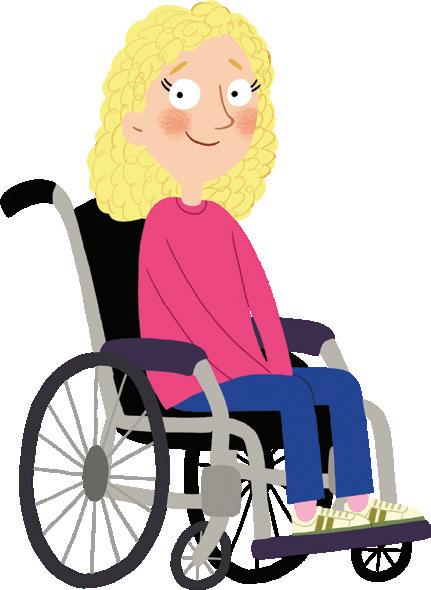
Oxford University Press 27 unit Compares and orders fractions with denominators of 2, 3, 4, 5, 6, 8 and 10 COMMUNICATING, REASONING N CCT
7
a 1 2 = 3 6 d 2 5 = 10 g 2 8 = 4 j 3 5 = 10 m 1 = 6 b 1 2 = 10 e 1 5 = 10 h 3 4 = 8 k 1 2 = 4 n 1 = 5 c 1 3 = 6 f 2 3 = 6 i 4 8 = 2 l 1 = 3 o 1 = 4
a 1 2 > 1 3 e 1 4 1 3 i 3 6 5 10 b 1 2 1 5 f 3 4 5 8 j 5 6 3 4 c 1 3 1 6 g 3 4 2 3 k 3 8 1 4 d 1 10 1 6 h 2 3 5 6 l 2 3 4 5
4 5 6 1 8 0 1 1 4 1 5 1 2 1 3 3 4 The three symbols are: > greater than, < less than, = equals. 1 2 2 2 1 whole 5 10 4 10 6 10 3 10 7 10 2 10 8 10 1 10 9 10 10 10 2 5 3 5 1 5 4 5 5 5 3 6 2 6 4 6 1 6 5 6 6 6 2 4 1 4 3 4 4 4 4 8 2 8 6 8 1 8 3 8 5 8 7 8 8 8 Tenths Fifths Sixths 1 3 2 3 3 3 Thirds Eighths Quarters Halves Whole MP_NSW_SB5_38343_TXT_PPS_NG.indb 27 30-Aug-23 08:58:49 DRAFT
7 Protractors
Answer these questions about the protractor.
a Complete the degrees on the protractor. You’ll need to look closely at a protractor to do this.

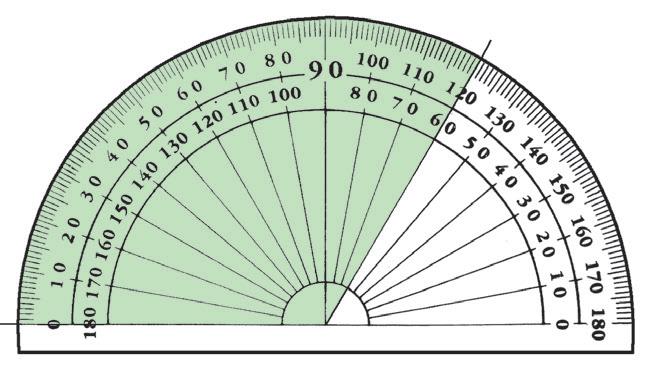



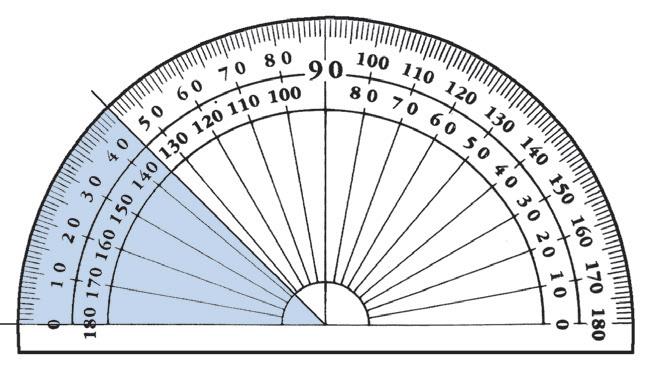
b Why do you think the numbers go both ways?
Name each angle and then write its size in degrees.
To measure these angles, place the base-line of a protractor along the lower arm of the angle, and place the centre point of the protractor on the vertex of the angle.
Oxford University Press 28 unit Measures and constructs angles, and identifies the relationships between angles on a straight line and angles at a point PROBLEM SOLVING L
° vertex ° ° ° ° ° ° °
a b c d e f
a b c d e f g h 7 8 9 0/180 30/150 70/110 90 0/180 40/140 MP_NSW_SB5_38343_TXT_PPS_NG.indb 28 30-Aug-23 08:58:50 DRAFT
To convert metres to kilometres, divide by 1000. A metre is one thousandth of a kilometre.
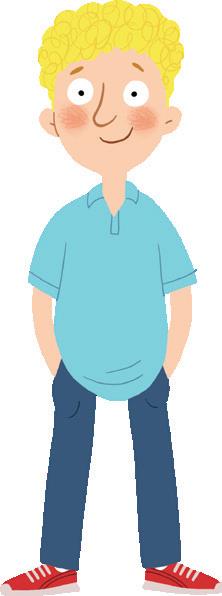
Use a calculator to convert the metres to kilometres. Your calculator will express some measurements as decimals. The first one is done for you.
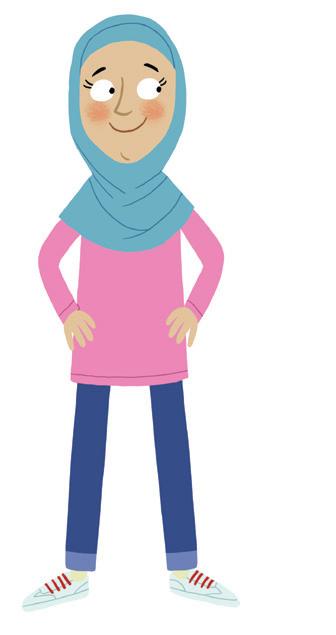
To change metres to kilometres, I divide by 1000.
Which distance above is closest to 3 km?
To convert kilometres to metres, multiply by 1000.
Convert these measurements from kilometres into metres without the use of a calculator. Then use a calculator to check.
To change kilometres into metres, I multiply by 1000.
Calculate the distances between towns in metres, then convert the metres into kilometres.
Kilometres
Name a journey longer than 13 km. 14
to
Oxford University Press 29 unit 7 Metres and kilometres COMMUNICATING, REASONING L Selects and uses the appropriate unit and device to measure lengths and distances including perimeters
Metres 1525 2399 3514 4786 2905 4567 2063 2560 Kilometres
1.525
Kilometres 3.505 2.459 8.355 7.684 9.502 6.349 82 35 Metres 3505 10
11 12
Distance
a A to B to C d H
G
F b C to D to E e F to E to D c E to F to G f D to C to B to A 13
Distance Metres
Metres Kilometres
to
N W E S Blue Lagoon C A D B E F G H 2816 m 3420 m 1900 m 7555 m 4310 m 2505 m Treasure Island 1850 m 7350m
MP_NSW_SB5_38343_TXT_PPS_NG.indb 29 30-Aug-23 08:58:51
DRAFT
Learning to trade in an addition sum
5 thousands plus 3 thousands plus 1 thousand equals 9 thousands.
Add 9 hundreds to 4 hundreds = 13 hundreds. Exchange 10 hundreds for 1 thousand. Record the 3 in the hundreds column.
Complete these additions without trading.
Complete these additions with trading in the ones.
9 ones plus 3 ones equals 12 ones. Exchange 10 ones for 1 ten. Record 2 in the ones column. DRAFT
Estimate an answer to each addition before completing them.
On a scrap of paper, check your answers to question 3 by using an inverse operation, e.g. subtraction to check addition.
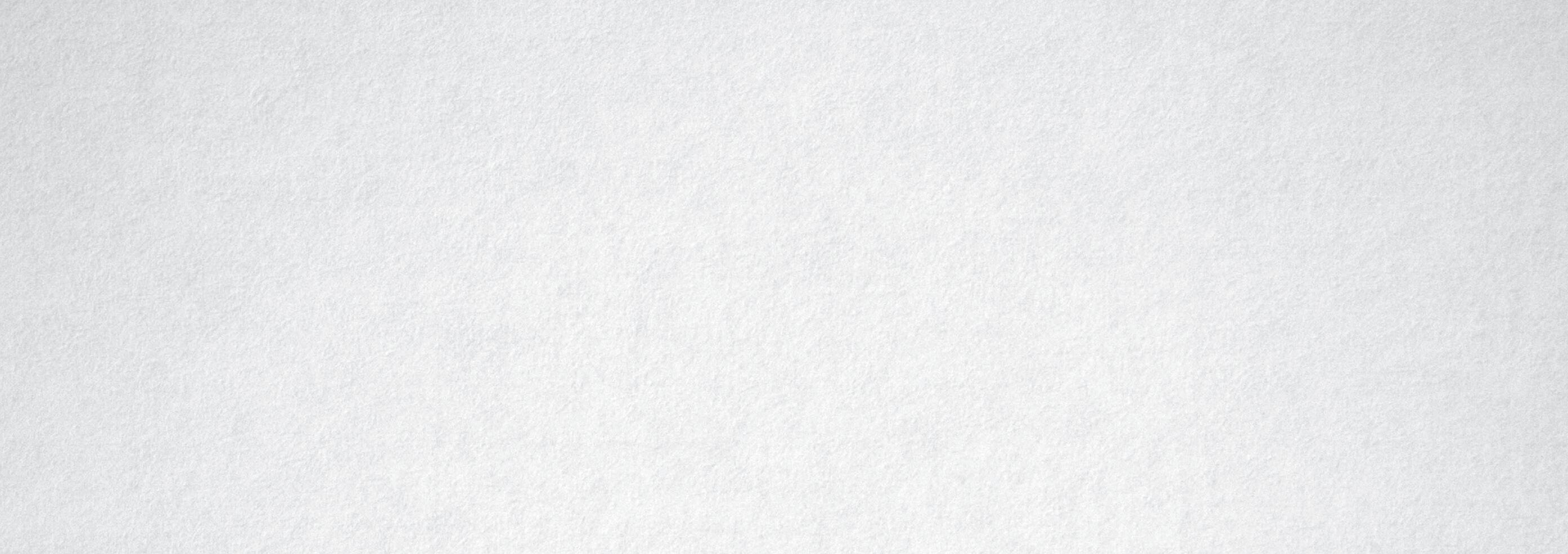
can be checked by
Mark did this question and got it wrong. Explain what he did wrong.
Oxford University Press 30 unit 8 4-digit
trading/checking COMMUNICATING, PROBLEM SOLVING L N CCT
and applies appropriate strategies to solve addition and subtraction problems
addition with
Selects
a Thou Hund Tens Ones b Thou Hund Tens Ones c Thou Hund Tens Ones d Thou Hund Tens Ones e Thou Hund Tens Ones 3 2 4 2 1 2 3 4 5 6 7 8 6 7 8 9 6 0 3 4 + 5 4 4 7 + 3 4 5 4 + 4 2 1 0 + 2 1 0 + 1 5 5 5
a Thou Hund Tens Ones b Thou Hund Tens Ones c Thou Hund Tens Ones d Thou Hund Tens Ones e Thou Hund Tens Ones 3 0 6 4 4 4 4 8 3 5 4 7 3 0 0 6 5 4 3 2 + 2 3 0 6 + 2 3 4 5 + 2 3 3 6 + 4 0 7 6 + 3 5 4 9
a Thou Hund Tens Ones b Thou Hund Tens Ones c Thou Hund Tens Ones d Thou Hund Tens Ones e Thou Hund Tens Ones 3 8 6 0 3 7 8 2 3 7 6 2 1 8 5 4 2 9 4 5 + 2 1 7 4 + 2 3 6 4 + 5 2 6 8 + 5 2 8 6 + 6 0 9 8
Thou Hund Tens Ones
Thou Hund Tens Ones 2 3 15 6 3 4 78 13 + 1 1 2 7 1 1 2 7 3 4 8 3 2 3 5 6 Thou Hund Tens Ones
5 5 4 4 + 4 7 3 3 9 2 7 7 1 2 3 4 5
PROCESS Thou Hund Tens Ones 13 4 13 3 + 5 9 1 9 9 3 5 2
Add 1 ten + 3 tens plus 1 ten equals 5 tens. MP_NSW_SB5_38343_TXT_PPS_NG.indb 30 30-Aug-23 08:58:51
Missing numbers
Solve each number sentence by finding the missing numbers.
Given the value of the triangle in each group, find the value of all the other shapes. Write their values on them, then complete the number sentences.
Solve these equations expressed in words.
a Seventeen oranges plus 8 oranges minus 6 oranges = oranges
b Twenty dollars plus $27 plus $30 = $
c Nine dollars times 6 plus $16 = $
d Thirty-five books shared among five children = books
9

Challenge! Use the numbers 4, 5 and 6 in each equation to obtain the answer.
Create and solve a long equation of your own. 10
Oxford University Press 31 unit Constructs and completes number sentences involving multiplicative relations, applying the order of operations to calculations REASONING N CCT 8
a 3
= 11 f 3 × = 27 k 3 × 5 + = 19 b 20 = 13 g 10 × = 30 l 6 × 3 + = 30 c 27 + = 40 h 16 ÷ = 4 m 5 × + 6 = 26 d 30 = 15 i 42 ÷ = 7 n 6 × 5 = 25 e 35 = 20 j 6 × = 54 o 7 × + 9 = 58
+
= 7 = 5 a + = 15 b × = 35 + = 17 × = 42 = × = + = 37 = × = 42 = + + = ( + ) × =
a × + = 26 c × + = 29 b × + = 34 d × = 19 6 7 8
= Mmmmmm! MP_NSW_SB5_38343_TXT_PPS_NG.indb 31 30-Aug-23 08:58:52 DRAFT
Drawing objects
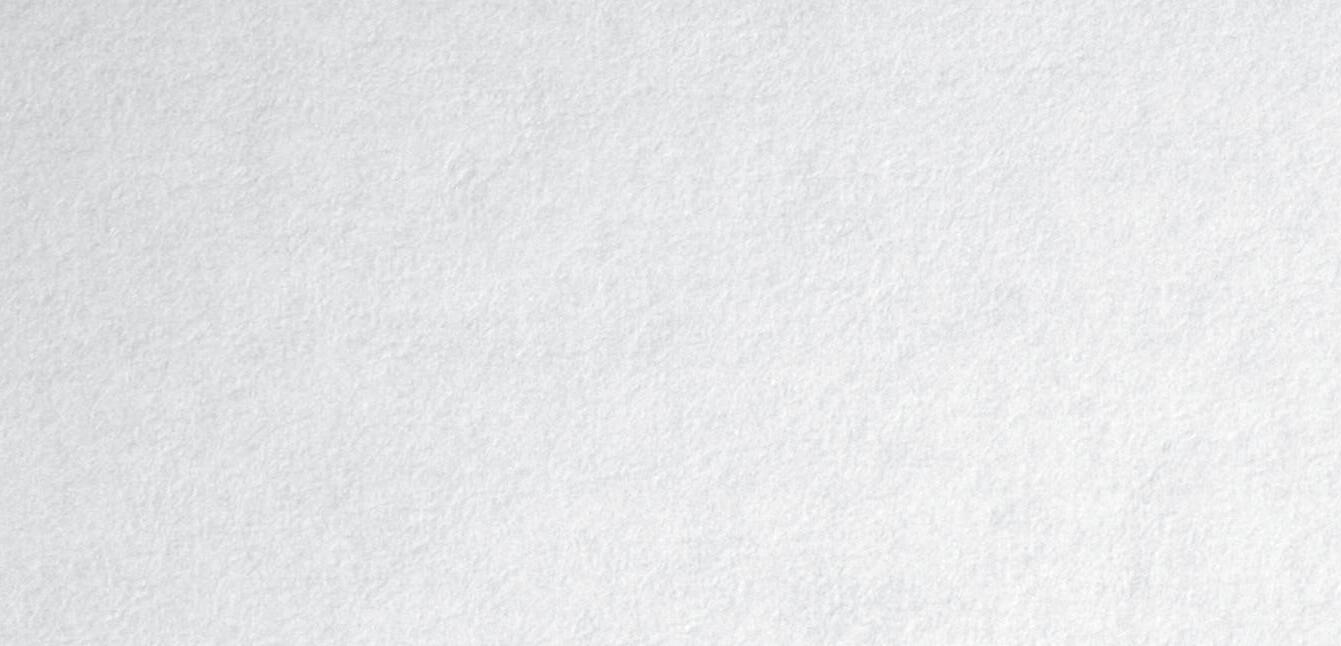

Prisms step 1 Prisms step 2 Pyramids step 1 Pyramids step 2
Trace the bases of the objects first before joining their vertices.
a b c
DRAFT
d e f
Put dotted lines in the following drawings to show the hidden detail (faces, edges and vertices). The first one has been done for you.
a b c d
Study the objects, then use a ruler and a pencil to draw them. Always draw lightly first, then firmly later, so trial-and-error mistakes don’t show.
a b c d
Visualises, sketches and constructs three-dimensional objects, including prisms and pyramids, making connections to two-dimensional representations
32 unit Oxford University Press
L N CCT 8
11
MP_NSW_SB5_38343_TXT_PPS_NG.indb 32 30-Aug-23 08:58:52
12 13
The number of cars that used a major city car park during one week were recorded, then the information was graphed on a picture graph to analyse the results.
a On which days was the car park used the most?
b How many cars used the car park on Thursday?
c How many cars were in the car park on Tuesday?
d If the owners of the car park couldn’t afford to open on 7 days, which day could they close?
e How many more cars were in the car park on Wednesday than on Sunday?
f How many cars used the car park in the week?
Name another scale that could be used for this data.
Cars in car park
Design a picture graph to display the data presented in the column graph.
Key: = books
Which book graph did you prefer? Why? 17
Oxford University Press 33 unit 8 Picture graph/column graph COMMUNICATING, PROBLEM SOLVING, REASONING L N Interprets data displays, including timelines and line graphs
14 70 60 50 40 30 20 10 Number of books
read each year Carson Tran Courtney Rachel Luke
Books
Monday Tuesday Wednesday Thursday Friday Saturday Sunday
Key: = 100 cars
16
15
MP_NSW_SB5_38343_TXT_PPS_NG.indb 33 30-Aug-23 08:58:53
= cars
DRAFT
We can use rounding to the nearest 10 or 100 to estimate division, e.g. 492 ÷ 5: 492 is almost 500, so the answer is about 100. (500 ÷ 5 = 100)
Round to 10 or 100 to estimate a quotient to each division.

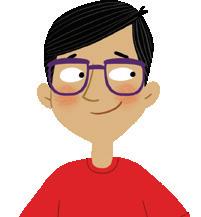
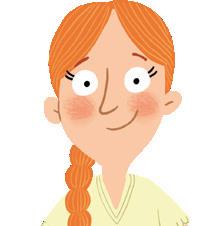
To solve 48 ÷ 8, think 8 × = 48.
Use a multiplication fact to solve the divisions.

Use the halve and halve again strategy to divide by 4.
Use the halve, halve again and halve again strategy to divide by 8.
=
Create your own number sentences. The first one is done as an example.
Oxford University Press 34 unit Selects and applies appropriate strategies to solve multiplication and division problems 9 Division strategies
1 a 99 ÷ 10 ≈ b 62 ÷ 6 ≈ c 29 ÷ 6 ≈ d 39 ÷ 5 ≈ e 22 ÷ 4 ≈ f 41 ÷ 8 ≈ g 41 ÷ 5 ≈ h 82 ÷ 8 ≈ i 399 ÷ 4 ≈ j 199 ÷ 2 ≈ k 499 ÷ 10 ≈ l 207 ÷ 4 ≈ m 212 ÷ 5 ≈ n 313 ÷ 6 ≈ o 293 ÷ 5 ≈
2 r r r r a 9 ÷ 3 = b 15 ÷ 3 = c 21 ÷ 3 = d 20 ÷ 4 = e 32 ÷ 4 = f 28 ÷ 4 = g 30 ÷ 5 = h 36 ÷ 4 = i 17 ÷ 4 = j 25 ÷ 6 = k 36 ÷ 7 = l 27 ÷ 5 =
3 a 24 ÷ 4 = b 32 ÷ 4 = c 40 ÷ 4 = d 48 ÷ 4 = e 60 ÷ 4 = f 80 ÷ 4 = g 76 ÷ 4 = h 120 ÷ 4 = i 200 ÷ 4 = j 240 ÷ 4 = k 180 ÷ 4 = l 220 ÷ 4 = a 40 ÷ 8 =
32 ÷
64 ÷ 8
d 80 ÷
e 120 ÷ 8
200 ÷ 8
g 240 ÷ 8
h 320 ÷ 8
i 480 ÷ 8
b
8 = c
=
8 =
= f
=
=
=
4
≈ means
35 ÷ 7 Think 7 × = 35. 36 ÷ 4 = ? Think 1 2 of 36 = 18 and 1 2 of 18 = 9. 48 ÷ 8 = ? Think 1 2 of 48 = 24 1 2 of 24 = 12 and 1 2 of 12 = 6. a 24 ÷ 4 = 12 ÷ 2 c 64 ÷ 4 = e 80 ÷ 8 = b 80 ÷ 4
d 160 ÷ 4 = f 128 ÷ 8
approximately equal to.
=
=
5 PROBLEM
UNDERSTANDING N MP_NSW_SB5_38343_TXT_PPS_NG.indb 34 30-Aug-23 08:58:54 DRAFT
SOLVING,
A mixed numeral is a number that consists of a whole number and a fraction, e.g. 112 , 234 , 512

Improper fractions can be changed to mixed numerals, e.g. 5 4 = 114 .
Write an improper fraction and a mixed numeral to describe each set of shapes.
Gina labelled her number line using mixed numerals and improper fractions.
Use Gina’s number line to write an improper fraction for each mixed numeral.
Use the number line to write a mixed numeral for each improper fraction.

Oxford University Press 35 unit
L N CCT Compares and orders fractions with denominators of 2, 3, 4, 5, 6, 8 and 10
Mixed numerals/improper fractions 9
Shapes Improper fraction Mixed numeral a 5 3 1 2 3 b c d e f g h i j
0 0 1 2 3 1 5 1 5 5 5 1 5 2 5 2 5 6 5 2 5 3 5 3 5 7 5 3 5 4 5 4 5 8 5 9 5 10 5 11 5 12 5 13 5 14 5 15 5 16 5 17 5 1 1 1 1 5 4 5 2 5 3 5 4 5 1 5 2 5 2 1 2 2 2 3 3
a 1 1 5 = b 1 3 5 = c 2 2 5 = d 2 4 5 = e 3 1 5 =
a 7 5 = b 9 5 = c 11 5 = d 13 5 = e 17 5 = 6 7 8
Five quarters of an orange = 5 4 , which is the same as = 1 1 4 MP_NSW_SB5_38343_TXT_PPS_NG.indb 35 30-Aug-23 08:58:55 DRAFT
Classifying three-dimensional objects 9
Faces are the surfaces that make up a 3D object. A cube has six faces.

An edge is where two faces meet or intersect. Edges can be straight or curved.

A vertex is where two or more lines meet to form an angle or a corner. The plural of vertex is vertices.

Use the words “face”, “edge” or “vertex” to label each set of arrows.
Give a clear description of each 3D object by recording its properties. Remember pyramids are named from their bases. Object Name Faces Edges Vertices
A triangular pyramid has 4 faces, 6 edges and 4 vertices.
Visualises, sketches and constructs three-dimensional objects, including prisms and pyramids, making connections to two-dimensional representations
36 unit Oxford University Press
UNDERSTANDING L
a b c d e f g
9 10
MP_NSW_SB5_38343_TXT_PPS_NG.indb 36 30-Aug-23 08:58:56
DRAFT
What is the most common vowel?
a Choose any paragraph from something you can read and make a tally of the number of times each vowel appears in that paragraph. Stop when one vowel reaches 30.
Vowel Tally Frequency
b Which vowel occurred the least?
c Which vowel occurred the most?
d How many words did not contain a vowel?
e Construct a column graph of the data you have collected.
Making a column graph
a Construct a column graph to record the number of people attending Dr Know’s surgery for sports injuries. The number of patients is recorded in the table below.
You will need to work out a scale for the vertical axis of the graph before you can start.
Month Dec Jan Feb Mar Apr
Patients 14 16 24 28 30
b Which month was the worst for sports injuries?
c Which month had the least number of sports injuries recorded?
Oxford University Press 37 unit REASONING N CCT Interprets data displays, including timelines and line graphs
Column graphs 9
A E I O U
11 12 Vowel data Number of occurrences 30 28 26 24 22 20 18 16 14 12 10 8 6 4 2 0 A E I O U Vowels Sports injuries Patients Dec Jan Feb Mar Apr Months MP_NSW_SB5_38343_TXT_PPS_NG.indb 37 30-Aug-23 08:58:56 DRAFT
Use the array to write 2 multiplication and 2 division facts.
Answer these questions.
d Draw a line to match the mixed numerals to the improper fractions of the same value.
i 496 children belong to the softball club. If 324 are girls, how many are boys? boys
PART
a Make the largest number you can from the digits: 7, 2, 5, 6, 3.
b Write the number for six million, two hundred and seventy-six thousand, three hundred and thirty-seven.
c Arrange the following numbers in order of size, from the smallest to the largest. 167 412 17 412 716 241 7241
PART
Complete the sequences.
a 27 30 33 36
b 147 152 157 162 c
Diagnostic review 1 Oxford University Press 38
PART
a 2 3 4 b 7 3 7 c 5 4 7 9 + 5 4 8 + 6 8 4 + 3 6 4 5 d 3 5 2 e 6 8 5 f 7 4 3 5 1 3 7 2 6 0
1 2 4
4
8
5 6 PART
PART
a b c
Shade the fractions.
1 1 4 7 4 2 1 3 7 3 1 2 3 5 4 1 3 4 5 3 PART Complete the grid and questions. × 2 3 5 7 6 8 9 a 5 b 7 c 8 d 24 ÷ 4 = h 32 ÷ 5 = e 30 ÷ 5 = i 47 ÷ 5 = f 36 ÷ 6 = j 8 × 40 = g 42 ÷ 7 = k 30 × 20 = l 6 4 m 7 5 n 3 6 × 4 × 5 × 6 1 2 1 3 5 8 3 6 3 5 × 7 = 35 × = ÷ = ÷ = g 4 2 2 3 + 7 4 4 5 h 6 0 8 9 + 2 4 9 5 MP_NSW_SB5_38343_TXT_PPS_NG.indb 38 30-Aug-23 08:58:56 DRAFT
Use the words “acute”, “obtuse” and “right” to name the angles.
Draw a line to match each shape to its name.
Draw a rectangle with an area of 8 cm2.
pentagon hexagon octagon rhombus
Answer these questions.
a How many edges does this object have?
b How many vertices does it have?
c How many faces does it have?
d Name this object.
Calculate the volume of each object made from 1 cm cubes.
a How many books were read in March?
b How many books were read in May?
Diagnostic review 1 Oxford University Press 39 PART
a b c PART
PART
PART 1 0 0 1 2 3 4 5 2 3 4 5 6 x y
a d b e c f 7 8 9 10 PART
digital times in “am and pm” notation for
clocks. morning evening morning 11 12 1 2 3 4 5 6 7 8 9 10 11 12 1 2 3 4 5 6 7 8 9 10 11 12 1 2 3 4 5 6 7 8 9 10 a b c PART
Give the coordinates for these 2D shapes.
Write
these
PART
a
PART
CATS CATS BIG CATS CATS BIG CATS BIG CATS CATS BIG CATS BIG CATS CATS BIG CATS CATS BIG CATS BIG CATS CATS BIG CATS BIG CATS CATS BIG CATS CATS BIG CATS CATS BIG FEB MAR APR MAY JUN JUL
b cm3 cm3
= 10 books Books read
11 12 13 14 CATS BIG MP_NSW_SB5_38343_TXT_PPS_NG.indb 39 30-Aug-23 08:58:57
DRAFT
Learning to trade in a subtraction
2 thousands from 5 thousands equals 3 thousands.
4 hundreds from 2 hundreds can’t be done, so trade a thousand from the thousands column to make 12 hundreds. 6 thousands becomes 5 thousands. 4 hundreds from 12 hundreds equals 8 hundreds.
Complete
Complete
PROCESS
4 ones from 3 ones can’t be done. Trade a ten from the tens column to the ones column to make 13 ones. 5 tens becomes 4 tens. 4 ones from 13 ones equals 9 ones.
Subtract 2 tens from 4 tens equals 2 tens.
From Sydney
Calculate the distances between:

683 km
869 km ALBURY 553 km KALGOORLIE 3440 km
PERTH 3967 km
BROKEN HILL 1140 km
40 Oxford University Press Selects and applies appropriate strategies to solve addition and subtraction problems 10 unit PROBLEM SOLVING, REASONING L N CCT
4-digit subtraction
these subtractions with trading in the ones. a Thou Hund Tens Ones b Thou Hund Tens Ones c Thou Hund Tens Ones d Thou Hund Tens Ones e Thou Hund Tens Ones 6 9 5 4 7 4 3 5 9 6 7 2 8 9 3 3 5 5 5 2 4 0 0 7 3 0 0 7 6 5 4 8 5 3 2 5 4 3 2 4
these subtractions with trading in the tens or ones. a Thou Hund Tens Ones b Thou Hund Tens Ones c Thou Hund Tens Ones d Thou Hund Tens Ones e Thou Hund Tens Ones 5 4 5 8 3 5 8 4 7 8 3 7 8 5 6 4 4 4 8 3 4 2 7 6 3 4 4 6 6 5 5 6 7 2 8 6 2 1 2 8 f Thou Hund Tens Ones g Thou Hund Tens Ones h Thou Hund Tens Ones i Thou Hund Tens Ones j Thou Hund Tens Ones 6 4 0 0 7 5 3 0 8 6 0 0 7 5 0 0 6 6 0 0 2 1 6 6 2 3 8 6 3 4 6 4 3 6 6 2 2 6 1 2
a Melbourne
Albury b Cobar and Broken Hill c Kalgoorlie
Perth d Broken Hill
e Perth
f Cobar and Perth
3 9 1 COBAR
and
and
and Kalgoorlie
and Broken Hill
3
MELBOURNE
Thou Hund Tens Ones 5 6 \ 1 2 4 \5 1 3 2 4 2 4 3 8 2 9
MP_NSW_SB5_38343_TXT_PPS_NG.indb 40 30-Aug-23 08:58:58 DRAFT
Prime and composite numbers
Prime numbers are numbers that have only themselves and 1 as factors, e.g. 2, 3, 5 and 7 are prime numbers but 4, 8 and 9 are not. Composite numbers are numbers with more than two factors, e.g. 24 has factors of 1, 2, 3, 4, 6, 8, 12 and 24.
Write all the factors of these numbers, then write whether they are prime or composite.
b 7
c 9
23 d 11
Write prime or composite after each number.
a 5

b 20
c 19
d 24
6
29
42
31
60
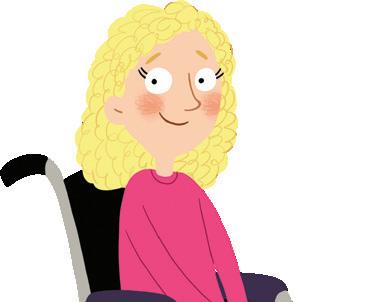
Explain why you agree or disagree with these statements.
DRAFT
a All odd numbers are prime numbers.
b There are more composite numbers than prime numbers.
7
Square and oblong numbers
9 is a “square” number.
Write the numbers under 101 that are both square and oblong.
Prime numbers have only themselves and 1 as factors.
8 is an “oblong” number.
41 Oxford University Press Selects and applies appropriate strategies to solve multiplication and division problems 10 unit
REASONING L CCT
Number Factors Prime or composite Number Factors Prime or composite
e
a 8
18
f
16
g
h
17
e
i
32
f
j
37
g
k
40
h
l
45
4 5
MP_NSW_SB5_38343_TXT_PPS_NG.indb 41 30-Aug-23 08:58:58
Measure then calculate the perimeter of each shape in millimetres.
Explain how you could use a shortcut to find the perimeters of these shapes.
42 Oxford University Press Selects and uses the appropriate unit and device to measure lengths and distances including perimeters COMMUNICATING, REASONING L CCT Perimeter unit 10
a b c P = mm P = mm P = mm
a 3 cm Perimeter = cm c 8cm Perimeter = cm b 4 cm 3 cm Perimeter = cm d 6cm Perimeter = cm Calculate the perimeter of each room. Bedroom Bathroom Hall Kitchen Lounge 4 m 3 m 2 m 1 m 6 m 3 m 4 m 5 m 6 m 4 m a Bedroom m c Bathroom m b Lounge m d Kitchen m Calculate the perimeter of
a b c 35 m 33 m 45 m 37 m 37 m 46m 46m P = P = P = 8 9 10 11 MP_NSW_SB5_38343_TXT_PPS_NG.indb 42 30-Aug-23 08:58:58
these shapes.
DRAFT
Warm colours
Cool colours
Impossible Unlikely Even chance Likely Certain
All the coloured cubes were put into a box. Use the cubes and the words above to describe the chance of pulling a particular colour or colour set from the box and returning it.
How would you describe the chance of drawing a:
a red cube from the box?
b yellow cube from the box?
c warm-coloured cube from the box?
d cool-coloured cube from the box?
e blue or orange cube from the box?
f pink cube from the box?
g blue, orange, red, green or yellow cube from the box?
12 13 14 15
Are you more likely to pull a blue cube than an orange cube?
Are you more likely to pull a blue cube than a green cube?
Look carefully at the spinner and answer the questions with the chance words below.
Impossible Unlikely Even chance Likely Certain
a The chance of spinning grey.
b The chance of spinning orange.
c The chance of spinning blue.
d The chance of spinning yellow.
e The chance of spinning blue or yellow.
f The chance of spinning purple.
g The chance of spinning grey, yellow, orange or blue.
h The chance of spinning the side containing orange, grey and yellow.
43 Oxford University Press COMMUNICATING, REASONING N CCT Likelihood Conducts chance experiments and quantifies the probability unit 10
MP_NSW_SB5_38343_TXT_PPS_NG.indb 43 30-Aug-23 08:58:58
DRAFT
Rick had 77 stamps to share among his five children. This is what he did.

77 shared among 5 Share out the tens, with each person getting 1 ten.
Trade the 2 tens left for 20 ones. Now share the 27 ones among 5.
Division and multiplication are connected.
Solve these problems and discuss with your classmates what you might do with any remainder.

a Jon had 27 football cards to share among himself and another two boys. How many cards did each child receive?
c Fatima had a bag of 34 lollies which she shared among herself and 3 other friends. How many did each child get?
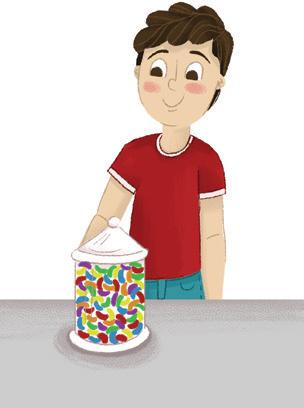
b There were 42 stickers to be shared among 8 children. How many did each child receive?
d Zoe scored 28 home runs in 7 softball matches. What was her average score of home runs per match?
44 Oxford University Press Selects and applies appropriate strategies to solve multiplication and division problems unit PROBLEM SOLVING, COMMUNICATING, REASONING L 11 2-digit division and multiplication connection Find the quotients of these divisions. a 3 4 5 b 4 5 2 c 5 6 5 d 6 7 2 e 4 5 6 f 2 3 6 g 3 4 8 h 5 7 0 i 3 3 4 j 3 4 3 k 4 5 3 l 5 9 8 Write a connected multiplication number sentence for each division. a 25 ÷ 4 = 6 r 1 and 4 × + = b 26 ÷ 6 = 4 r 2 and × + = c 37 ÷ 7 = 5 r 2 and × + = d 29 ÷ 4 = 7 r 1 and × + =
1 2 3
5 7 7 1 5 7 7 1 5 r 2 5 7 7 2 65 lollies shared among 5 people? 1 3 5 6 5 1 That’s 13 lollies each. )
27 ÷ 4 = 6 r 3, so 4 × 6 + 3 = 27 MP_NSW_SB5_38343_TXT_PPS_NG.indb 44 30-Aug-23 08:58:59
DRAFT
Describe the shaded section of the hundredths grid as a two-place decimal. The first one is done for you. Ones Tenths Hundredths
Place these decimals in ascending order.
4.35, 2.50, 8.22, 4.45
Use a decimal point to separate whole metres from fractions of a metre. The first one is done for you.
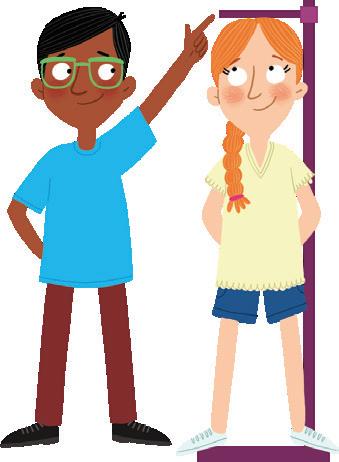
The six people in the following group were measured and their heights recorded.
a Who was the tallest person?
b Who was the shortest person?
c Who is 2 cm taller than Scott?
d Explain why 1.90 m is taller than 1.09 m.
Round the decimals to one decimal place, e.g. 3.19 is 3.2.
45 Oxford University Press Compares and orders decimals up to 3 decimal places unit UNDERSTANDING CCT N
Two-place decimals 11
a
d b e c f 4
Ones Tenths Hundredths
0 4 8
0.43, 2.57, 0.28,
a 127 cm 1.27 m d 563 cm m g 842 cm m b 352 cm m e 742 cm m h 906 cm m c 427 cm . m f 890 cm . m i 1423 cm . m
Kimberly 1.53 m Scott 1.47 m Sarah 1.09 m James 1.35 m Trent 1.90 m Catherine 1.49 m
a 3.59 d
g 127.88 b 6.27 e 16.12 h 369.51 c 3.68 f 36.73 i 466.69 5 6 7 8 193 cm means 1 m and 93 cm. MP_NSW_SB5_38343_TXT_PPS_NG.indb 45 30-Aug-23 08:58:59
13.77
DRAFT
a

Partitioning numbers
Expand
b
c
11
37 623 expands to 30 000 + 7000 + 600 + 20 + 3.
Write the number that is equal to:
a 3 tens
b 30 tens
c 20 tens
d 70 tens
e 2 hundreds
f 50 hundreds
g 70 hundreds
h 3 thousands
i 8 thousands
j 30 thousands
k 7 tens of thousands
l 2767 ones
12
How many tens are there in:
a 372?
b 2374?
d 29 637
46 Oxford University Press unit Applies an understanding of place value and the role of zero to represent the properties of numbers COMMUNICATING L N CCT
11
numbers.
these
The first one has been started for you.
87
000 + 7000 + + +
672 80
54 263 + + + +
69 837 + + + +
numeral expanders to
numbers can be expressed in different
78 264 ones tens hundreds ones tens ones ones tens hundreds thousands tens of thousands ones tens hundreds thousands
35 672 ones tens hundreds ones tens ones ones tens hundreds thousands tens of thousands ones tens hundreds thousands
26 743 ones tens hundreds ones tens ones ones tens hundreds thousands tens of thousands ones tens hundreds thousands
10
Complete the
show how
ways. a
b
c
9
ones tens
tens ones
tens
tens of thousands ones tens hundreds thousands MP_NSW_SB5_38343_TXT_PPS_NG.indb 46 30-Aug-23 08:58:59
hundreds ones
ones
hundreds thousands
DRAFT
Use the formula length × width = area to calculate the area of each shape in square centimetres.
Use the formula length × width = area to create two rectangles, each with an area of 24 cm2.
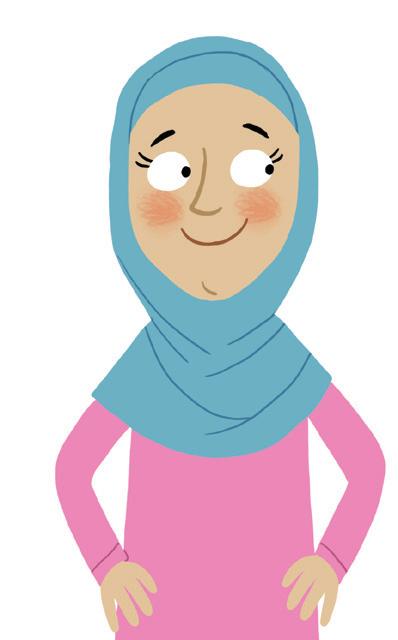
Kate drew this 12 cm2 shape and told her friend that all shapes with a 12 cm2 area have a perimeter of 16 cm. Draw two more shapes of 12 cm2 to find out if Kate is right.
Are area and perimeter related?
47 Oxford University Press Selects and uses the appropriate unit to calculate areas, including areas of rectangles COMMUNICATING, REASONING N CCT Square centimetres unit 11
a A = cm2 b e f c d A = cm2 A = cm2 A = cm2 A = cm2 A = cm2
13 14 15
MP_NSW_SB5_38343_TXT_PPS_NG.indb 47 30-Aug-23 08:59:00 DRAFT
5-digit addition with trading 12
Estimate an answer first and write it in the box, then complete these additions with trading in the tens and ones.
Use the map to calculate the distances travelled.
a return journey that is between 450 km and 600 km.
From one destination on the map to another, calculate a return journey that is between 1100 km and 1300 km.
48 Oxford University Press Selects and applies appropriate strategies to solve addition and subtraction problems unit COMMUNICATING, PROBLEM SOLVING L N CCT
a 3 9 2 9 b 2 1 2 4 c 3 9 7 7 d 3 9 5 5 e 3 8 4 7 + 4 0 5 6 + 3 8 9 9 + 5 0 2 5 + 2 0 7 6 + 2 1 7 7 Complete these additions with trading in the hundreds. a 2 3 6 5 4 b 3 5 7 6 4 c 4 5 8 3 4 d 5 2 5 7 4 e 6 5 9 6 5 + 1 2 7 3 2 + 1 2 7 3 1 + 2 1 7 6 5 + 1 3 6 1 5 + 1 2 9 1 3 Complete these additions
a 7 3 5 6 7 b 3 5 6 9 4 c 4 6 3 6 8 d 2 7 7 5 4 e 5 5 5 7 8 + 2 2 7 7 + 3 1 7 6 2 + 2 3 8 8 + 1 8 8 8 + 3 3 9 6 3 1 2 3
with trading in the hundreds, tens or ones.
a Batemans Bay to Sydney b Wollongong to Port Macquarie c Batemans Bay to Port Macquarie d Sydney to Grafton e Sydney to Coolangatta f Coolangatta to Newcastle 4
6 Calculate
5 MP_NSW_SB5_38343_TXT_PPS_NG.indb 48 30-Aug-23 08:59:00
DRAFT
Rounding money
In Australia, we do not have 1c and 2c coins. This means that prices are rounded to the nearest 5c or 10c. Prices ending in 3 or 4 are rounded up to the nearest 5c. Prices ending in 6 or 7 are rounded down to the nearest 5c. Prices ending in 8 or 9 are rounded up to the nearest 10c. Prices ending in 1 or 2 are rounded down to the nearest 10c.
Here are the prices of items being sold at various shops.
Rounding down Rounding up
11c to 10c 13c to 15c
12c to 10c 14c to 15c
16c to 15c 18c to 20c
17c to 15c 19c to 20c
Write the rounded cost of each item to the nearest 5c.
a flour $ b butter $ c mayo $
d milk $ e chocolate milk $ f honey $
Complete the grid to calculate the cost.
DRAFT
When we buy groups of items, it is only the total at the end that is rounded.
Total price Rounded price
a flour and a jar of mayo
b butter and a litre of milk
c a jar of honey and a chocolate milk
d a jar of mayo and a jar of honey
e flour, butter and a jar of mayo
f butter, a litre of milk and a jar of mayo
g two jars of mayo and two jars of honey
7 8 9

Calculate the change from $10 after buying the items below.
Total price Rounded price Change
a flour and a litre of milk
b a jar of honey and a litre of milk
c a jar of mayo and a jar of honey
d three jars of mayo
49 Oxford University Press Selects and applies appropriate strategies to solve addition and subtraction problems Applies an understanding of place value and the role of zero to represent the properties of numbers UNDERSTANDING, PROBLEM SOLVING CCT N unit PROBLEM SOLVING, UNDERSTANDING CCT N 12
$5.98 $2.09 $5.23 $3.08 1 L MILK BUTTER 350 g HONEY Flour 2 kg Chocolate MILK Mayo $2.88 $4.24
MP_NSW_SB5_38343_TXT_PPS_NG.indb 49 30-Aug-23 08:59:00
10
An average Australian car uses 12 litres of petrol for every 100 km travelled.
a Complete the table to show how far the car could travel on the litres supplied.
Litres 6 12 18 24 30 36 42
Kilometres 50 100 150
b Record this information on the line graph.
c How far did the car travel on 24 L of petrol?
d How far did the car travel on 36 L of petrol?
e How far would the car travel on 9 L of petrol?
f How many litres would the car use for a 250 km trip?
g How many litres would the car use for a 350 km trip?
h How many litres would the car use for a 400 km trip?
11
Drawing a line graph
DRAFT
Jane’s athletic coach made a table of the distance she walked in 6 minutes.
Minutes 1 2 3 4 5 6
Metres 200 400 600 800 1000 1200
a Create a line graph to represent this data. You will need to work out a scale for the vertical axis before you start.
b If Jane walked for 10 minutes, how far would she walk?
Kilometres 6 5 4 3 2 1 0 Minutes Jane’s walk Metres
50 Oxford University Press
PROBLEM SOLVING, UNDERSTANDING L N
Constructs graphs using many-to-one scales Interprets data displays, including timelines and line graphs
Line graphs unit 12
c How far would she walk in 2 1 2 minutes? 350 300 250 200 150 100 50 0 6 12 18 Litres 24 30 36 42
Litres per km used by an Australian car
MP_NSW_SB5_38343_TXT_PPS_NG.indb 50 30-Aug-23 08:59:00
Data can be recorded on a line graph by using a line to join plotted points. Meaning can be attached to any point along the line.
Sarah, John and Alisha built three rectangular prisms out of centicubes. In groups of three, make the three prisms. Complete the grid for length, width and height. Record the volume for each prism by counting the centicubes.
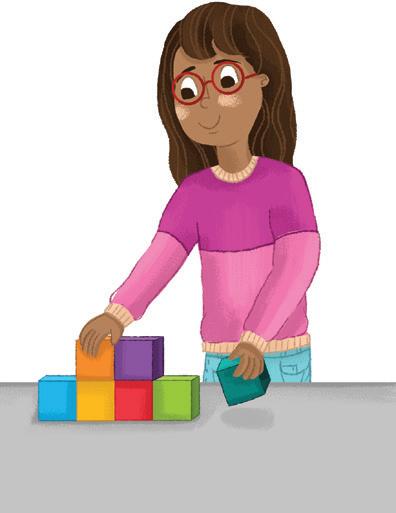
What did you notice about your results?
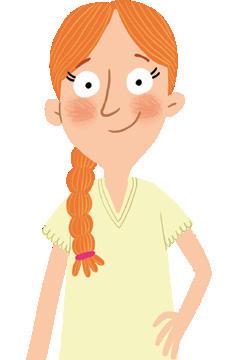
Use centicubes to make models with these dimensions. Record the number of cubes used in the tally column of the grid, then record the volume of each model.
Did any prisms have the same volume?
If you multiplied the length, width and height of the prisms above, what would you find?
51 Oxford University Press Selects and uses the appropriate unit to estimate, measure and calculate volumes and capacities UNDERSTANDING, PROBLEM SOLVING CCT N
unit 12 6 cm (length) 2 cm (width or breadth) 3 cm (height) Sarah John 2 cm 9 cm 2 cm Alisha 3 cm 3 cm 4 cm
Cubic centimetres
Length Width Height Tally Volume (cm3) a 4 cm 2 cm 2 cm
4 cm 3 cm 3 cm
6 cm 2 cm 3 cm
6 cm 1 cm 4 cm
4 cm 2 cm 4 cm
8 cm 1 cm 4 cm
b
c
d
e
f
13 14 15
12 Prism Length Width Height Volume Sarah cm3 John cm3 Alisha cm3
MP_NSW_SB5_38343_TXT_PPS_NG.indb 51 30-Aug-23 08:59:01 DRAFT
Three digits multiplied by one digit 13
5 × 3 = 15 ones
Write 5 in the ones column and trade the 10 ones for 1 ten, then write the 1 at the top of the tens column.
3 × 4 tens = 12 tens plus the 1 traded ten equals 13 tens.
Write 3 in the tens column and trade the 10 tens for 1 hundred, then place a 1 at the top of the hundreds column.
3 × 2 hundreds = 6 hundreds plus the 1 traded hundred equals 7 hundreds.
Write 7 in the hundreds column.

Solve each multiplication using the shortened form.
Problems to solve
a The Earth takes about 365 days to orbit the Sun. How many days would it take to complete 5 orbits?

b A plane flew at 505 km per hour on a 4-hour flight. How far was the flight?
c How much soft drink did Hans drink if he drank all 3 of his 375 mL cans?
3
What numbers could 124 be multiplied by to give an answer of between 600 and 1000?
52 Oxford University Press Selects and applies appropriate strategies to solve multiplication and division problems unit PROBLEM SOLVING N
Hund Tens Ones 1 2 1 4 5 × 3 7 3 5
a 2 3 5 b 8 4 7 c 9 0 0 d 7 6 0 e 8 5 7 × 3 × 4 × 5 × 6 × 7 f 3 6 3 g 2 4 8 h 4 7 4 i 3 2 9 j 2 6 3 × 5 × 6 × 7 × 8 × 9 k 2 5 6 l 3 4 9 m 4 2 8 n 5 4 6 o 6 6 4 × 5 × 7 × 6 × 4 × 5
1 2 EXAMPLE
MP_NSW_SB5_38343_TXT_PPS_NG.indb 52 30-Aug-23 08:59:01
Kola Kola Kola
DRAFT
Constructing number sentences
Celebrity heads
Read the number sentences and carry out the operations to find the missing numbers.
a If you multiply me by 2 and add 4, the answer is 10.
b If you halve me and halve me again, the answer is 6.
c If you add 2 and multiply by 4, the answer is 36.
Write a number sentence to solve the problems. The first one is done for you.
a Double the number and add 6 to get 14.
b Multiply the number by 3 and subtract 7 to get 5.
c Subtract 5 from the number and add 8 to get 10.
d Divide the number by 5 and add 3 to get 7.
e Multiply the number by 4 and divide by 3 to give 8.

f Add 5 to the number and multiply by 7 to get 56.
g Subtract 15 from the number and divide by 5 to get 3.
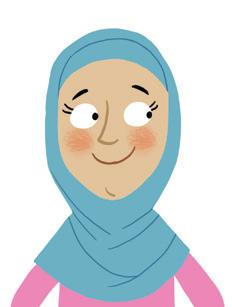
h Add 3 to the number, take away 5 and multiply by 9 to get 63.
Think of a secret number and write some clues so that a friend can work out your secret number. 7


53 Oxford University Press unit COMMUNICATING, REASONING N CCT 13
Constructs and completes number sentences involving multiplicative relations, applying the order of operations to calculations
the missing number to
each number sentence equal. a 6 + = 18 5 e + 7 = 20 8 i 9 + 8 = 7 b 9 + 6 = 17 f 5 × = 20 + 10 j 3 × 4 = 100 c 4 × 7 = 22 g × 5 = 36 + 9 k ÷ 5 = 25 × 2 d 4 × 6 = + 6 h 100 ÷ 5 = 32 l 56 ÷ = 94 86
Supply
make
4 × 2 + 6 = 14
4
5 6
MP_NSW_SB5_38343_TXT_PPS_NG.indb 53 30-Aug-23 08:59:02
DRAFT
Constructing shapes
Follow the instructions to draw a rectangle.
a Place a protractor exactly on the line AB, with the centre point exactly on the end of the line where A is.
b Put a pencil dot at 90 ° , then draw a faint line from A to the dot.
c Repeat exactly for the B end of the line.
d Measure 4 cm on each vertical line you have drawn and put a dot.
e Join the dots to form a rectangle.
Now construct a congruent copy of the square below by following the same procedure as above. All the angles and sides are given on the shape.
Measure the smaller angle, then deduct it from 360 ° to find the reflex angles. (You can also use a 360 ° protractor.)
Measures and constructs angles, and identifies the relationships between angles on a straight line and angles at a point
54 Oxford University Press
COMMUNICATING, PROBLEM SOLVING ICT
unit 13
6 cm 6 cm 6 cm 6 cm 90° 90° 90° 90° A B
a b c ° ° ° 8 9 10 B 90° A A B A B A B MP_NSW_SB5_38343_TXT_PPS_NG.indb 54 30-Aug-23 08:59:02 DRAFT
A day has 24 hours. Time can be expressed in 12-hour am/pm form or 24-hour time. Note that when writing 24-hour time, neither punctuation nor a space is used; e.g. 0745 hours = 7:45 am, 2318 hours = 11:18 pm.
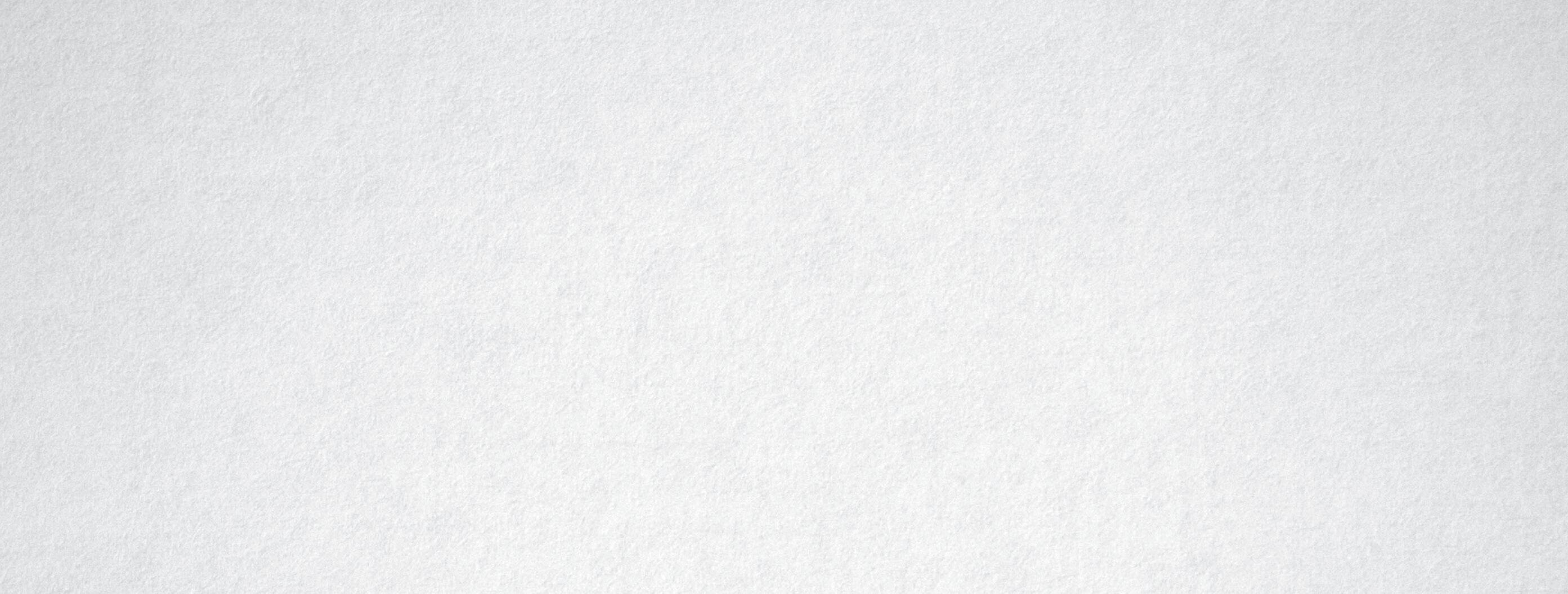
Convert these from 12-hour “am and pm” time to 24-hour time. The first is done for you.
Complete this grid showing time expressed in analog, digital and 24-hour forms.
Read the program guide then answer the questions to set the TV to record using 24-hour time.
a Jim set his TV to record Channel 6 at 0900 for one hour. What show did he record?
b Maria wanted to record Home and Away Complete the information she would need.
c Mohammed set his TV to record Channel 6 at 1600 for one hour. What show did he record?
d Sylvester wanted to record Water Snakes so he set his TV for Channel 6 at 1830 for one hour. Was he successful?
e Ronald wanted to record Sportstime. Complete the information he would need.
Time
55 Oxford University Press Measures and compares duration, using 12- and 24-hour time and am and pm notation COMMUNICATING L CCT 24-hour time unit 13
a 3:00 am d 6:00 pm g 10:00 pm j 7:30 pm b 8:00 am e 2:00 pm h 6:00 am k 7:30 am c 4:00 pm f 11:00 pm i 8:00 pm l 9:15 pm
Analog 11 12 1 2 3 4 5 6 7 8 9 10 11 12 1 2 3 4 5 6 7 8 9 10 11 12 1 2 3 4 5 6 7 8 9 10 11 12 1 2 3 4 5 6 7 8 9 10 11 12 1 2 3 4 5 6 7 8 9 10 11 12 1 2 3 4 5 6 7 8 9 10 11 12 1 2 3 4 5 6 7 8 9 10 Digital 24-hour 0300 hours 1815 hours 1145
11 12
hours
Channel Time Duration
Channel
Duration
Channel 6 6:00 Sunshine News 7:00 Cartoon Connection 8:00 Play School 9:00 Home Shopping 10:00 Lifeline 10:30 News 11:00 Entertainment Tonight 12:00 Movie: Tarzan 2:00 Days of the Young 3:30 Disney Adventures 4:00 Bewitched 5:00 Growing Up 6:00 News 6:30 Tonight Today 7:30 Home and Away 8:00 Enemies 8:30 Water Snakes 9:30 Susan’s Closet 10:30 Sportstime 12:00 Close
13
1:00 2:00 3:00 4:00 5:00 6:00 7:00 8:00 9:00 10:00 11:00 12:00 1:00 2:00 3:00 4:00 5:00 6:00 7:00 8:00 9:00 10:00 11:00 12:00 Midnight Noon Midnight am pm 0100 hours 0300 hours 0500 hours 0700 hours 0900 hours 1100 hours 1300 hours 1500 hours 1700 hours 1900 hours 2100 hours 2300 hours 0200 hours 0400 hours 0600 hours 0800 hours 1000 hours 1200 hours 1400 hours 1600 hours 1800 hours 2000 hours 2200 hours 0000 hours 0300 hours MP_NSW_SB5_38343_TXT_PPS_NG.indb 55 30-Aug-23 08:59:02 DRAFT
One mental strategy used in subtraction is to take away the thousands first, then the hundreds, followed by the tens and the ones.

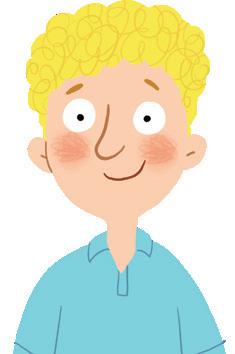
6657 − 3843 6657 − 3843...3657 − 843...2857 − 43...2817 − 3 = 2814


Subtract the thousands
Subtract the tens
Subtract the hundreds
Subtract the ones
Use mental strategies to solve these subtractions, then use a calculator to check your answers.
a 9598 8172
b 7898 3576
c 8438 6847
d 3347 2634
e 8265 3733
Another strategy is the constant difference strategy. You simply adjust both numbers to make the subtraction easier.
5012 – 2996 becomes 5016 – 3000 = 2016.
4 is added to both sides.
Use the constant difference strategy to solve the following.
a 6821 – 396 =
b 7842 – 492 =
c 6821 – 2990 =
d 7643 – 2988 =
e 8624 – 3994 =
2 3
Use addition to solve subtractions.
a 8085 – 3996 =
b 6004 – 4985 =
c 7006 – 3996 =
d 8016 – 5986 =
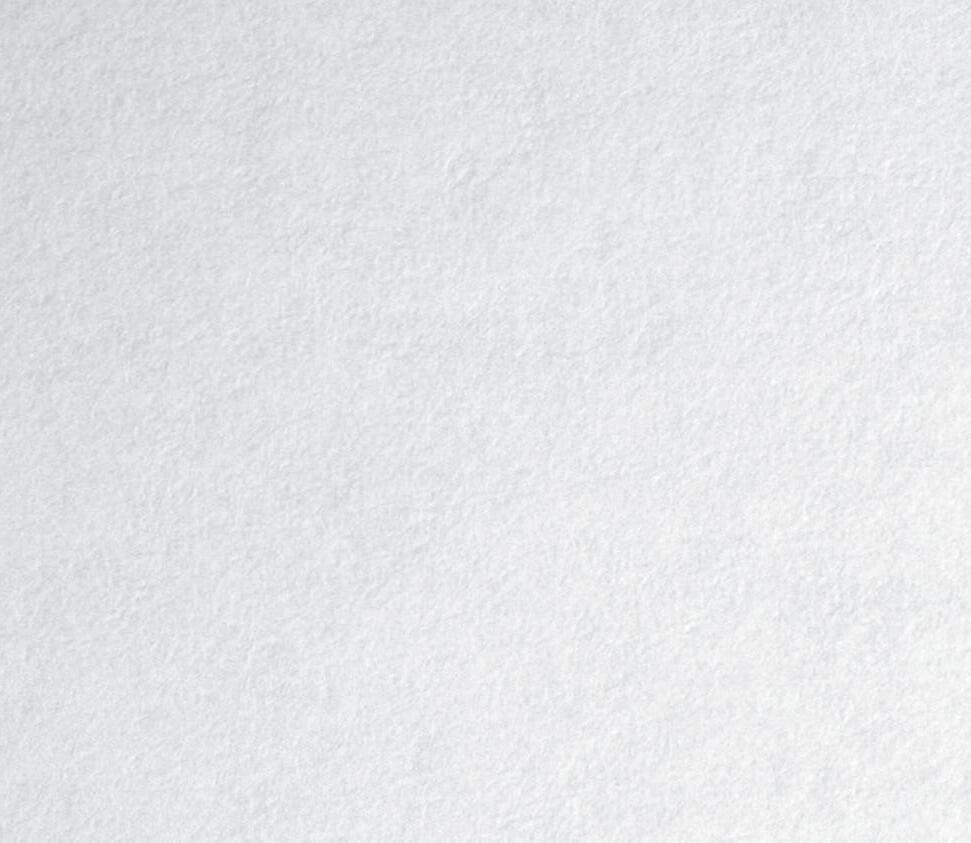
e 9107 – 6989 =
f 6010 – 2992 =
6004 – 3996 becomes 6008 – 4000.
5008 – 3985
Think
3985 + = 5008
3985 + 15 = 4000
4000 + 1008 = 5008
Answer 15 + 1008 = 1023
56 Oxford University Press Selects and applies appropriate strategies to solve addition and subtraction problems unit PROBLEM SOLVING, REASONING CCT N 14 Subtraction strategies
1
9598 – 8172 _ _ _ _ 1598 _ _ _ _ 1498 _ _ _ _ 1428 _ _ _ _ 1426
MP_NSW_SB5_38343_TXT_PPS_NG.indb 56 30-Aug-23 08:59:03
DRAFT
Number patterns and rules
Follow the rules in order to complete the number patterns.
Create two number patterns and above each one write its rule. Each pattern should involve one or two operations.
Selects and applies appropriate strategies to solve addition and subtraction problems Selects and applies appropriate strategies to solve multiplication and division problems
57 Oxford University Press
Perimeter unit REASONING, COMMUNICATING L N 14 Rule
Rule: Add 7. d Rule:
● 5 10 15 20 25 30 35 ● 14 18 22 26 30 34 38 ▲ 12 17 ▲ 35 b Rule: Add 23. e Rule: Add 19. ● 2 5 8 11 14 17 20 ● 6 9 12 15 18 21 24 ▲ 25 ▲ c Rule: Subtract 13. f Rule: Divide ■
■ 41 40 39 38 37 36 35 ■ 65 55 45 35 25 15 5 ▲ ▲
Rule: Rule: ● ● ■ ■ 5 Write the rule for each function machine. a c b Rule d 6 35 44 45 54 55 64 65 74 47 33 48 34 49 35 50 36 Rule 28 38 48 58 20 30 40 50 Rule 2 4 6 8 10 20 30 40
a
Add 21.
by 5, then triple.
4
MP_NSW_SB5_38343_TXT_PPS_NG.indb 57 30-Aug-23 08:59:03
DRAFT
Describing objects
Draw lines to match each piece of information with a skeletal model and a prism name.
Name Information
Skeletal model
Cube
Rectangular prism
Triangular prism
I have 8 vertices and 12 edges. Each one of my 6 faces is a square.
I have 6 rectangular faces, 12 edges and 8 vertices. A shoe box is a good example of me.
I have 9 edges and 6 vertices. I have 5 faces of which 2 are triangular and 3 are rectangular.
Hexagonal prism
I have 5 rectangular sides, 10 vertices and 15 edges. My other 2 faces are pentagons.
Pentagonal prism
Answer these questions.
I have 12 vertices and 18 edges. Two of my 8 faces are hexagonal while the others are rectangular.
a Name the shapes needed to make a hexagonal prism.
b List the number and shape of the identical faces needed to make a hexagonal prism. (For example, 2 × hexagonal faces . . .)
c How many pairs of parallel faces are there on a hexagonal prism?
d Name the shapes needed to make a pentagonal pyramid.
e List the number and shape of the identical faces needed to make a pentagonal pyramid.
f How many pairs of parallel faces are there on a pentagonal pyramid?
Visualises, sketches and constructs three-dimensional objects, including prisms and pyramids, making connections to two-dimensional representations
58 Oxford University Press
UNDERSTANDING L
unit 14
7 8 MP_NSW_SB5_38343_TXT_PPS_NG.indb 58 30-Aug-23 08:59:03
DRAFT
10 Measure the length of each side to calculate the perimeter of each shape.
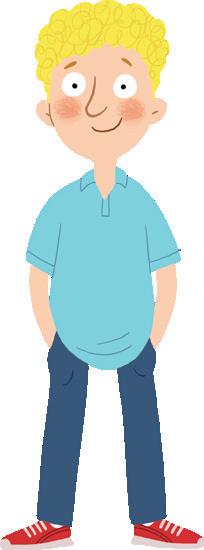
9 P = cm
Estimate and then measure the perimeter of each triangle, in centimetres.
11
Use the dot paper to make two staircase shapes, one with a perimeter of 12 cm and another with a perimeter of 16 cm.
a 12 cm perimeter
b 16 cm perimeter
State the perimeters of these gardens.
a Stauros made a rectangular garden with sides 7 m and 3 m. m
b Jenny made a triangular garden bed with sides measuring 4 m, 3 m and 5 m. m
MP_NSW_SB5_38343_TXT_PPS_NG.indb 59 30-Aug-23 08:59:04
59 Oxford University Press Selects and uses the appropriate unit and device to measure lengths and distances including perimeters PROBLEM SOLVING, UNDERSTANDING CCT Perimeter unit 14
a P = cm b P = cm c P = cm d P = cm e P = cm
a b c d P = cm P = cm P = cm
10
c Tony made a hexagonal garden bed with each side measuring 4 m. m 12
The perimeter is the distance around the outside of a shape.
DRAFT
15 Expanding numbers
Write the numbers.
a Twenty-six thousand, two hundred and thirty-seven
b Forty-two thousand, seven hundred and thirteen
c Sixty-seven thousand, three hundred and sixty
d Thirty-five thousand and nine
e Fifty thousand, two hundred and four
State the place value of each bold digit.
Expand the following numbers. The first one is done for you.
Numbers to 1 billion
What is the missing expansion in these large numbers?
60 Oxford University Press Applies an understanding of place value and the role of zero to represent the properties of numbers unit PROBLEM SOLVING, COMMUNICATING, REASONING N
1
2 a 23 4 b 2 3 45 c 3 4 d 6 778 e 7 7 77 f 66 5 6 g 3 2 345 h 3 4 898 i 56 8 73 j 9 9 564 k 8 3 67 234 l 5 33 3 444
3 200 000 a 235 247 + 30 000 + 5000 + 200 + 40 + 7 b 364 382 + + + + + c 491 456 + + + + + d 670 291 + + + + e 782 008
+
+ +
a 1 234 567 1 000 000 + 200 000 + 30 000 + + 500 + 60 + 7 b 72 486 135 70 000 000 + 2 000 000 + + 80 000 + 6000 + 100 + 30 + 5 c 67 123 459 + 7 000 000 + 100 000 + 20 000 + 3000 + 400 + 50 + 9 d 325 120 308 300 000 000 + 20 000 000 + + 100 000 + 20 000 + 300 + 8 e 613 806 297 + 10 000 000 + 3 000 000 + 800 000 + 6000 + 200 + 90 + 7 4 Place value 2 3 2 7 6 4 5 9 ones tens hundreds thousands tens of thousands hundreds of thousands millions tens of millions MP_NSW_SB5_38343_TXT_PPS_NG.indb 60 30-Aug-23 08:59:04 DRAFT
Fractions on a number line
Draw lines to match the fractions to their position on the number lines.
Related fractions can be located on the same number line, e.g.

can be located on a number line divided into quarters.
Draw lines to match the related fractions to their position on the number lines.
61 Oxford University Press Compares and orders fractions with denominators of 2, 3, 4, 5, 6, 8 and 10 unit UNDERSTANDING CCT 15
a 0 1 2 3 4 3 4 1 4 1 2 4 2 3 4 3 b 0 1 2 3 4 5 2 3 1 3 3 2 3 2 1 3 1 2 3 4 1 3 5 c 0 1 2 3 1 5 1 5 4 5 2 3 5 1 4 5 2 2 5 3 d 3 10 7 10 1 10 3 4 10 2 8 10 2 1 10 1 9 10 1 0 1 2 3 5
a 1 2 1 2 1 2 1 5 3 5 2 5 3 3 10 2 2 1 1 0 1 2 3 b 1 2 1 3 2 3 2 1 6 3 1 3 1 1 2 1 0 1 2 3 1 2 2 6
1 2
0 1 2 3 1 4 2 4 3 4 1 4 1 2 4 1 3 4 1 2 4 2 1 2 1 2 1 1 2 2 1 4 2 3 4 2 7 MP_NSW_SB5_38343_TXT_PPS_NG.indb 61 30-Aug-23 08:59:04 DRAFT
Databases are used to store and organise data. Mailing lists, inventories and large amounts of data, such as historical records, can be kept on databases.
Gillian Walters wants to create a phone list of all her friends. She also wants to list their birth dates to remind her when to buy birthday presents. To do this she will make five fields on her database: given name, family name, date of birth, suburb and phone number.
Gillian needs to enter three more people, whose details she has scribbled on a scrap of paper, to complete her database. Enter the data on the database above for her.
Complete these lists of information from the database. The first one is done for you.
62 Oxford University Press Interprets data displays, including timelines and line graphs UNDERSTANDING DL L Databases unit 15
Phone list Given name Family name Date of birth Suburb Phone 1 Jessica Field 21/8/2013 Botany 0012 345 678 2 Helen Smith 4/10/2012 Botany 0023 456 789 3 Julia Shepherd 15/6/2011 Rosebery 0034 567 891 4 Jason Hobbs 21/9/2011 Brighton 0045 678 912 5 John Hardy 10/3/2014 Rosebery 0056 789 123 6 Tom Kouris 21/9/2010 Mascot 0067 891 234 7 Zena Roberts 18/2/2012 Kensington 0078 912 345 8 Stephen Clark 13/1/2014 Randwick 0089 123 456 9 Taryn Walters 31/12/2014 Coogee 0098 765 432 10 Mark Walters 16/4/2011 Rosebery 0087 654 321 11 Samantha Wood 27/11/2011 Brighton 0076 543 219 12 Merryn Cook 1/12/2014 Malabar 0065 432 198 13 14 15
7
a b c Friends that live in Kensington Friends that live in Rosebery Friends born in 2012 Zena Brett Lauren d e Friends born in 2013 Friends with the surname of Walters 8 Brett Sattler 21/9/2013 Kensington 0054 321 987 Lauren Lockett Kensington 2/9/2012 0043 219 876 Catherine Laws 5/6/2013 Maroubra 0032 198 765
MP_NSW_SB5_38343_TXT_PPS_NG.indb 62 30-Aug-23 08:59:05
DRAFT
Square metres
The formula for area is Area = Length × Width
15
Use the formula A = L × W to calculate the area of these billboards by the highway.
Lunar Planet
FOREVER COOL!
DRAFT
Outer Space Fun!
Calculate the area of these shapes in square metres if they are drawn so that 1 cm represents 1 metre.
Solve these problems.
a Alison’s room is 4 metres long and 3 metres wide. How much will it cost to carpet her room if carpet is $20 a square metre?
b What would be the perimeter and area of a court 30 metres long and 15 metres wide?
63 Oxford University Press Selects and uses the appropriate unit to calculate areas, including areas of rectangles COMMUNICATING, REASONING, PROBLEM SOLVING N
unit
10 a c b d
11
Length 9 m Width 6 m
Width 6 m Length 8 m Poster A = L × W Area a Arctic Cola m2 b Lunar Planet m2 Shape A = L × W Area a m2 b m2 c m2 d m2
9
Arctic COLA MP_NSW_SB5_38343_TXT_PPS_NG.indb 63 30-Aug-23 08:59:05
There are many ways of doing division. Here is one method. Share out the hundreds with each paddock getting 1 hundred.
Trade the 1 hundred left over for 10 tens. Now share the 12 tens. Each paddock gets 4 tens.
Share out the 6 ones, with each paddock getting 2 ones.
426 sheep shared among 3 paddocks?
Complete these division algorithms.
On a piece of note paper, check your answers to question 1 by using an inverse operation. You can use multiplication to check division.
Complete the divisions with trading.
Division can be done mentally by dividing the hundreds, then tens, then ones.
2464 ÷ 4 = 24 hundreds
4 = 15
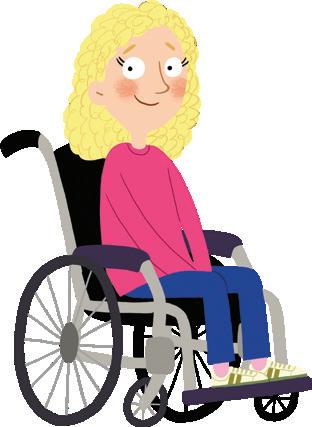
Therefore, 2464 ÷ 4 = 616.
Solve these divisions mentally. You may need a piece of note paper.

64 Oxford University Press Selects and applies appropriate strategies to solve multiplication and division problems unit 16 3-digit
PROBLEM SOLVING N
written and mental division
1 3 4 2 6 1
1 4 3 4 2 6 1
1 4 2 5 4 2 6 1
1
3
2
a 963 ÷ 3 = f 2575 ÷ 5 = b 886 ÷ 2 = g 3696 ÷ 3 = c 840 ÷ 4 = h 3248 ÷ 4 = d 1269 ÷ 3 = i 2796 ÷ 3 = e 1684 ÷ 4 = j 3688 ÷ 4 = 4 a 3 4 2 6 b 4 5 6 8 c 2 3 2 8 d 3 4 5 6 e 4 5 2 8 f 4 6 4 8 g 8 9 6 8 h 4 6 8 4 i 3 5 1 6 j 7 8 4 7 k 5 5 5 5 l 6 7 2 6 m 7 9 1 7 n 6 8 4 6 o 6 9 6 6 a 2 2 6 8 b 2 8 6 4 c 3 6 9 3 d 3 3 9 6 e 4 4 8 4 f 3 6 9 7 g 2 8 6 5 h 4 8 4 9 i 3 6 9 5 j 4 4 8 7 1 3 4 1 3 4 × 2 2 6 8 can be checked by For example
2400 ÷
÷
4 ÷
4 = 600 60
4 = 1
2 2 6 8 MP_NSW_SB5_38343_TXT_PPS_NG.indb 64 30-Aug-23 08:59:05 DRAFT
Factors are whole numbers that can be multiplied with another number to make a new number. For example, the factors of 16 are:

1, 2, 4, 8 and 16. (2 × 8 = 16 4 × 4 = 16 16 × 1 = 16)
Answer true or false.
a 3 is a factor of 6
b 7 is a factor of 15
c 5 is a factor of 20
Use division to find the missing factor.
d 4 is a factor of 13
e 10 is a factor of 50
f 6 is a factor of 18
Write all the factors of the following numbers. Remember that the number itself and 1 are also factors. a 20
b 12
c 18
d 25
e 49
f 64
8
Work backwards to find three numbers that multiply together to produce the number in the box.
a 60 = × ×
b 100 = × ×
c 140 = × ×
All multiples of 10 always have 2, 5 and 10 as some of their factors.
65 Oxford University Press Selects and applies appropriate strategies to solve multiplication and division problems unit UNDERSTANDING CCT N
16 Factors
a 18 3 b 14 2 c 24 4 d 25 5 e 30 5 f 40 8 g 48 6 h 42 7
5 6 7
MP_NSW_SB5_38343_TXT_PPS_NG.indb 65 30-Aug-23 08:59:06
DRAFT
Drawing angles with a protractor
Name each angle and then write its size in degrees. Remember that protractors can be read from both ends.
Use a protractor to measure and name each angle.
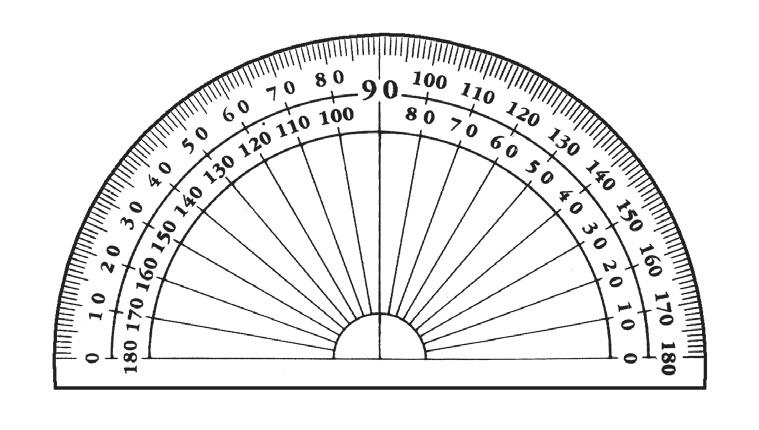


Use the starting lines below to draw the angles.
a An acute angle of 40
A right angle
An obtuse angle of 110°
b An acute angle of 60°
An obtuse angle of 130°
An acute angle of 45°
Measures and constructs angles, and identifies the relationships between angles on a straight line and angles
66 Oxford University Press
at a
N CCT
point
unit 16
a b c
a b c d e f g h ° °
c
e
°
f
9 10 ° ° 11 ° ° ° ° MP_NSW_SB5_38343_TXT_PPS_NG.indb 66 30-Aug-23 08:59:06
d
DRAFT
Symmetry/rotational symmetry
What is line symmetry?

A shape has line symmetry if both of its parts match when it is folded along a line.
How many lines of symmetry does each polygon have? a b c d e
A diagonal is a line connecting the opposite vertices of a polygon. A square has two diagonals.
Draw the diagonals on the quadrilaterals below.
Which quadrilaterals above have diagonals as lines of symmetry?
What is rotational symmetry?
A shape has rotational symmetry if, after the shape is turned around its centre point, it matches the original shape more than once through a full turn.
Colour all the shapes that have rotational symmetry. You may need to trace the shapes and pin them to discover the answers. a b c d e f g h
67 Oxford University Press COMMUNICATING, PROBLEM SOLVING
Investigates and classifies two-dimensional shapes, including triangles and quadrilaterals, based on their properties unit 16
D 12
D
D
A B C
13 A B C
B A B C
14
MP_NSW_SB5_38343_TXT_PPS_NG.indb 67 30-Aug-23 08:59:07
DRAFT
5-digit addition
Complete these additions.
Flying distances between cities

DRAFT
2
Calculate the length of each journey (working paper may be needed).

a Hobart to Sydney via Melbourne km
b Cairns to Melbourne via Brisbane and Sydney km
c Perth to Brisbane via Sydney km
d Alice Springs to Melbourne via Darwin and Sydney km
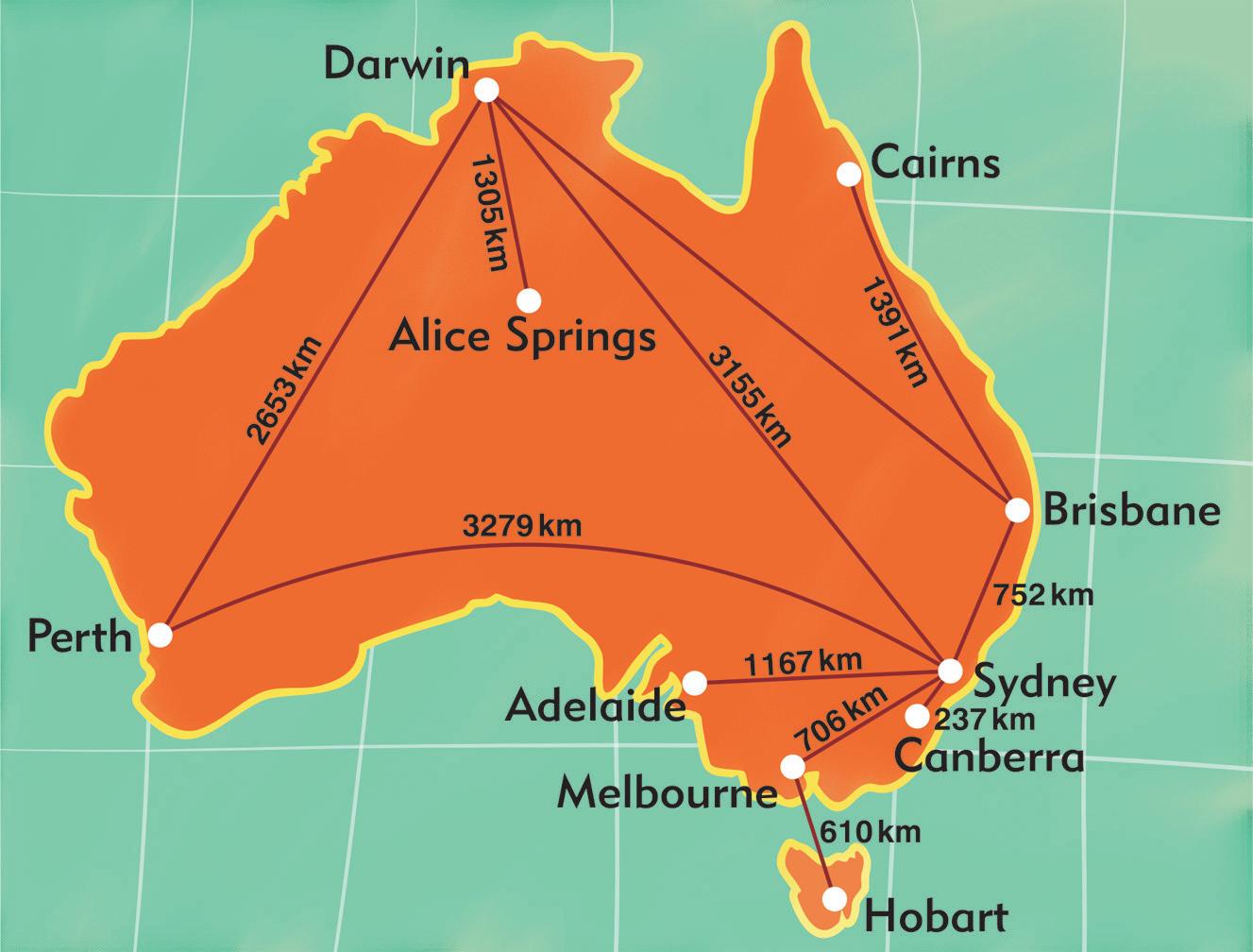
e Adelaide to Cairns via Sydney and Brisbane km
f Cairns to Hobart via Brisbane, Sydney and Melbourne km

68 Oxford University Press Selects and applies appropriate strategies to solve addition and subtraction problems unit PROBLEM SOLVING L N CCT 17
+ 6 6 3 2 8 2 1 7 6 6 f + 5 8 4 3 2 3 6 2 3 8 g + 2 4 2 3 5 4 2 9 6 8 h + 8 0 3 6 7 3 9 0 8 5 i + 7 5 2 8 6 4 8 1 4 6 j + 3 5 6 3 3 4 2 3 5 6 a + 3 4 3 5 7 4 4 1 0 8 b + 4 2 4 5 6 1 3 2 8 8 c + 5 2 6 4 0 3 1 8 7 5 d + 4 1 3 2 5 4 3 9 0 8 e 3 4 5 6 7 k 2 6 5 4 3 l 3 5 9 7 4 m 3 8 3 0 9 n 3 5 7 0 4 3 9 8 7 8 3 4 7 4 2 0 6 0 7 3 0 6 0 3 8 5 0 6 o + 2 0 0 3 6 + 2 6 0 3 + 3 0 7 0 8 + 1 0 4 7 2 + 7 5
1
MP_NSW_SB5_38343_TXT_PPS_NG.indb 68 30-Aug-23 08:59:07
Adding and subtracting fractions 17
Draw arcs on the number lines to add or subtract the fractions.
Use the number line below to help you with the questions.
69 Oxford University Press Compares and orders fractions with denominators of 2, 3, 4, 5, 6, 8 and 10 unit PROBLEM SOLVING N
a 7 8 4 8 = 0 1 8 2 8 3 8 4 8 5 8 6 8 7 8 1 1 1 1 1 1 1 1 1 8 2 8 3 8 4 8 5 8 6 8 7 8 2 b 9 10 6 10 = 0 1 10 2 10 3 10 4 10 5 10 6 10 7 10 8 10 9 10 1 1 110 2 110 3 110 4 110 5 110 6 110 c 1 1 10 6 10 = 0 1 10 2 10 3 10 4 10 5 10 6 10 7 10 8 10 9 10 1 1 110 2 110 3 110 4 110 5 110 6 110 d 1 3 4 + 2 4 = 0 1 4 2 4 3 4 1 1 1 1 2 2 2 3 1 4 2 4 3 4 1 4 2 4 3 4 3 4 3 2 4 3 1 4 4 2 3 e 2 2 3 + 2 3 = 0 1 3 2 3 1 1 1 2 2 1 3 2 3 1 3 2 3 4 2 3 4 1 3 5 1 3 5 2 4 3 2 3 3 1 3 3
0 1 5 2 5 3 5 4 5 1 1 1 1 2 2 2 1 5 2 5 3 5 1 4 5 1 5 2 5 3 5 2 4 5 3 1 5 3 2 5 2 3 a 4 5 1 5 = d 1 4 5 1 5 = g 2 4 5 + 1 5 = b 4 5 3 5 = e 1 4 5 2 5 = h 2 1 5 3 5 = c 1 3 5 + 1 5 = f 1 3 5 2 5 = i 3 2 5 4 5 = 3 4 MP_NSW_SB5_38343_TXT_PPS_NG.indb 69 30-Aug-23 08:59:08 DRAFT
Which spinner has the most chance of landing on:
a red? b green?
c yellow? d blue?
a Is it true that spinner A has a 50% chance of spinning green?

b Which spinner has a better than 50% chance of spinning red?
c Which spinner has a one-in-four chance of spinning green?
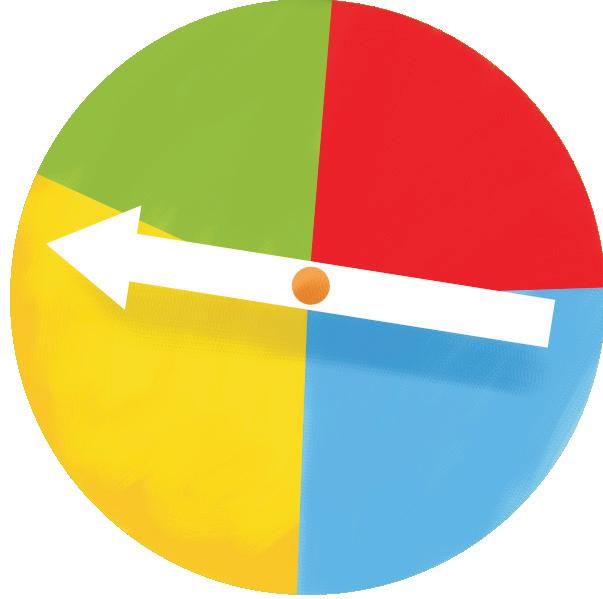

d Which two spinners have a one-in-four chance of spinning blue?
e Which spinner has slightly more than a one-in-four chance of spinning yellow?

Combinations of Scissors Paper Rock
scissors paper rock
scissors paper paper paper rock paper
scissors scissors paper scissors rock scissors
scissors rock paper rock rock rock
Rules of the game: Rock beats scissors, scissors beats paper and paper beats rock. If you both have the same result, nobody wins. Repeat the turn.
Conduct this chance experiment to see if Scissors Paper Rock is a fair game. Play the game 20 times with a classmate and record the results using tally marks.
I win
Classmate wins
70 Oxford University Press COMMUNICATING N L Chance
Conducts chance experiments and quantifies the probability unit 17
experiment
5 6
Spinner A Spinner B Spinner D Spinner C
7 MP_NSW_SB5_38343_TXT_PPS_NG.indb 70 30-Aug-23 08:59:08
DRAFT
Top, front and side views
3D objects can be represented by drawings of their views from the top, front and side.
Find objects like these, then draw the top, front and side view of each.
a b c d
top top top top front front front front side side side side
DRAFT
Draw the top, front and side views of each object.
Top view Front view Side view a b c
Visualises, sketches and constructs three-dimensional objects, including prisms and pyramids, making connections to two-dimensional representations
71 Oxford University Press
COMMUNICATING N CCT
unit 17
8 9 MP_NSW_SB5_38343_TXT_PPS_NG.indb 71 30-Aug-23 08:59:09
5-digit subtraction
Complete these subtractions with trading in the hundreds.
Complete these subtractions with trading in the hundreds, tens and ones, then check them with a calculator.
Round to estimate an answer, then solve the problem. Estimate Answer
a The school dance received $2856 in ticket money. How much profit was made if $976 was spent on expenses?
b The Town Hall has room for 5070 people. How many more people can fit in if there are 3667 already in the Town Hall?
c 6537 eggs were taken from the farms to the packaging factory. How many were broken if 6238 were placed into cartons?
d Eve has paid a deposit of $972 for the car she wants to buy. How much does she owe if the car is $9720?
72 Oxford University Press Selects and applies appropriate strategies to solve addition and subtraction problems Car production Calculate the difference in car production between the months. a January and February b February and March c March and April d April and May e April and January f May and March 3 Month Number January 932 February
March
April
May
3945
2130
2506
2904
4 unit PROBLEM SOLVING L N 18
a 6 6 5 7 b 7 2 9 8 c 8 4 7 8 d 3 3 4 7 e 8 2 6 5 3 8 4 3 3 5 7 6 6 8 4 7 2 6 3 4 3 7 3 3
a 2 6 2 8 8 b 7 7 6 5 9 c 6 8 0 7 5 d 7 7 1 3 4 e 6 8 8 5 5 1 4 6 5 4 1 3 4 8 7 3 6 2 3 7 1 5 3 8 3 1 4 3 8 4 f 8 7 4 3 4 g 7 6 3 8 0 h 6 7 2 2 1 i 7 9 9 2 4 j 8 7 3 5 0 6 4 1 5 6 4 3 5 1 3 4 6 2 6 6 2 6 6 6 1 2 1 ON OFF 2 3 0 +% C / 4 5 6 7 8 9 MP_NSW_SB5_38343_TXT_PPS_NG.indb 72 30-Aug-23 08:59:09 DRAFT
Rules for order of operations
• Always do the work in the grouping symbols (brackets) first. (3
• Do operations with division and multiplication from left to right.
with addition and subtraction from left to right.
and division before addition and
Do the
first.
Do multiplication and division before addition and subtraction.
Write your own operations and answers in the space below. 9

73 Oxford University Press Constructs and completes number sentences involving multiplicative relations, applying the order of operations to calculations unit UNDERSTANDING, PROBLEM SOLVING CCT L
Order of operations 18
a 6 + (3 × 7) = d 3 + (7 × 9) = g 8 + (5 × 9) 6 = b (6 + 3) × 7 = e 40 + (6 × 8) = h 50 + (7 × 4) + 8 = c 7 + (3 × 6) = f 63 (9 × 4) = i 100 (27 ÷ 3) + 6 = Left to right. a 8 × 7 ÷ 2 = d 24 ÷ 6 × 9 = g 9 × 8 ÷ 2 = b 5 × 8 ÷ 4 = e 36 ÷ 6 × 10 = h 8 × 8 ÷ 4 = c 6 × 9 ÷ 3 = f 54 ÷ 9 × 9 = i 3 × 4 × 3 ÷ 3 = Left to right. a 3 + 8 + 24 20 = f 127 + 56 34 + 19 = b 60 40 + 6 2 = g 121 + 67 + 34 6 = c 8 + 18 10 + 32 = h 219 8 + 7 16 = d 40 + 60 + 23 30 = i 400 250 + 750 = e 70 + 18 + 9 22 =
brackets
a 3 + 7 × 2 = e 3 + 99 ÷ 3 = i 130 + 9 × 7 = b 6 × 3 8 = f 230 5 × 6 = j 3 × 9 + 7 30 = c 7 ÷ 7 × 4 = g 80 5 × 8 = k 126 + 36 ÷ 6 2 = d 7 + 64 ÷ 8 = h 60 + 65 ÷ 5 = l 3 × 6 ÷ 6 + 47 = 5 6 7 8
× 6) × 7 = 126
3 × 8 ÷ 2 = 12
Do
5 + 8 6 = 7 • Do multiplication
6 + 8 × 3 = 30 MP_NSW_SB5_38343_TXT_PPS_NG.indb 73 30-Aug-23 08:59:09 DRAFT
•
operations
subtraction.
Study the line graph carefully before attempting the questions. 10
The vertical axis tells us the temperatures and the horizontal axis tells us the times.
a What was the temperature at 1:00 pm?
b What was the temperature at 4:00 pm?
c What was the temperature at 10:00 am?
d Estimate the temperature at 9:30 am?
11
A hose uses 2 L of water every 10 seconds.
e Estimate the temperature at 7:30 am.
f What was the difference in temperature between 1:00 pm and 4:00 pm?
g Did the temperature remain the same between 11:00 am and 1:00 pm?
a Use this information to complete the table, then record the information on a line graph.
C
C

b How many litres of water were used in 70 seconds?
c How many litres of water were used in 85 seconds?
d How long would it take the hose to use 40 L?
74 Oxford University Press REASONING N CCT
Interprets data displays, including timelines and line graphs unit 18
Line graphs Constructs graphs using many-to-one scales
6:00 am 5:00 am 7:00 am 8:00 am 9:00 am 10:00 am 11:00 am 12:00 noon 1:00 pm 2:00 pm 3:00 pm 4:00 pm 30 28 26 24 22 20 18 16 14 12 10 Time Temperature between 5 am and 4 pm Temperature ºC
° C
° C
° C
° C
°
°
Seconds 10 20 30 40 50 60 70 80 90 100 110 120 130 140 150 160 Litres 2 4 6 8 10 44 40 36 32 28 24 20 16 12 8 4 0 10 20 30 40 50 60 70 80 90 100 110 120 130 140 150 160
of
per
Litres Seconds
Litres
water
second
MP_NSW_SB5_38343_TXT_PPS_NG.indb 74 30-Aug-23 08:59:10
DRAFT
When we record millilitres as a decimal, we record them as a fraction of a litre. 400 mL = 0.4 L 370 mL = 0.37 L 495 mL = 0.495 L
Record the capacity of the items in millilitres then as a decimal.
1 litre and 700 millilitres equals 1.7 L. litres millilitres
c Honey
d Choc milk


e Kola



Record the total capacity of the combined items in litres and millilitres then as a decimal.


c Milk and cup
d Cordial and choc milk
e Cordial and milk
f Cordial and glass
Convert these litre measurements to millilitres.

75 Oxford University Press Litres and millilitres Selects and uses the appropriate unit to estimate, measure and calculate volumes and capacities unit 18 REASONING L CCT
1 L JUICE 200 mL 250 mL HONEY 350 mL Chocolate MILK 500 mL Kola 280 mL 600 mL 246 mL 187 mL
Item
Decimal
L
Millilitres
a Juice box 200 mL 0.2
b Shampoo
Item
Decimal
Milk and juice
1 L and 200 mL 1.2 L
Litres and millilitres
a
box
b Milk and shampoo
a 1 L = mL b 2 L = mL c 5 L = mL d 1.5 L = mL 12 Item Millilitres Decimal f Cordial g Cup h Glass 13 14 1000 e 0.364 L = mL f 0.745 L = mL g 0.25 L = mL h 0.5 L = mL mL j 2.864 L = mL k 4.3 L = mL l 3.25 L = mL 275 mL is written as 0.275 L MP_NSW_SB5_38343_TXT_PPS_NG.indb 75 30-Aug-23 08:59:10
DRAFT
Give the place value of each bold number.
of the following numbers.
Draw a line to the scale of 0 to 1 to show the chance of the spinner landing on red.
76 Oxford University Press Diagnostic review 2 PART Answer these questions. 3 PART Answer these questions. 2 a 3 2 b 3 2 0 6 c $ 6 5 0 3 6 7 4 + 4 0 6 8 + $ 3 2 0 9 . 5 6 7 8 + d 7 4 4 2 3 4 6 3 e 8 5 5 2 0 3 0 5 f 9 4 6 4 3 3 4 5 a 2 5 4 3 × b 3 5 0 7 × c 2 6 7 8 × d 6 4 8 e 7 2 1 f 7 4 9 g 8 7 7 h 9 3 9 i 9 8 5 j 7 8 4 7 k 3 5 1 6 l 8 9 6 8 m (3 + 7) × 5 = n 3 + (7 × 5 ) = o 16 ÷ 4 × 3 = p 16 ÷ 4 + 7 = Write “prime” or “composite” after each number. q 25 r 13 s 7 t 12 PART Write the fraction and decimal as modelled in the shading on each hundredth grid. 4 1 0.9 0.8 0.7 0.6 0.5 0.4 0.3 0.2 0.1 0 100 Fraction Decimal . a b c 1 4 1 2 3 4 1 2 0 1 8 1 1 4 2 1 4 PART
5 PART
a 35 749 b 23 521 c 123 456 d 357 296
all the factors
e 15 f 24 g 36 1 Add or subtract the fractions. d 2 6 + 3 6 = e 5 10 3 10 = f 5 6 2 6 = g 3 10 + 8 10 = Draw a line to
each fraction to
the number
h Red 4 1 2 8 $ 5 9 6 2 MP_NSW_SB5_38343_TXT_PPS_NG.indb 76 30-Aug-23 08:59:10 DRAFT
List
match
a place on
line.
a Draw a square with a perimeter of 20 cm on the 1 cm grid paper.
Does
a It was warmest at
b The coolest temperature shown is
77 Oxford University Press Diagnostic review 2 PART Use a protractor to measure these angles. 6 PART Draw the three views of this model. front 7 Top view Front view Side view PART Draw a line to join each container to a level on the measuring beaker. 8 0.125 L 0.25 L 0.50 L 0.75 L 1.0 L 1.25 L 1.50 L 1.75 L 2.0 L Kola Fizzy HONEY SHAMPOO 250 mL 1250 mL 1750 mL 500 mL PART
9
PART
the object
the larger volume. 10 PART
these times in 24-hour time.
am
pm
PART 11 12
b
the square have an area of 20 cm2?
Tick
with
Write
a 9:36
b 3:35
c 8:25 pm
a b Temperatures in Perth Time °C 40 35 30 25 20 15 10 5 0 9:00 10:00 11:00 Noon 1:00 2:00 3:00 4:00 am am am pm pm pm pm a b c d e ° ° ° ° ° MP_NSW_SB5_38343_TXT_PPS_NG.indb 77 30-Aug-23 08:59:11 DRAFT
c The temperature at 11:00 am was
3-digit mental and written division


Share out the hundreds, with each school getting 1. One hundred is left over.
Trade the 1 hundred left over for 10 tens. Now share the 17 tens. Each school gets 4.
Trade the 1 ten left over for 10 ones. Now share out the 13 ones. Each school gets 3. That leaves a remainder of 1.
Complete these divisions.
Using place value
You can use your knowledge of multiples and place value to help you solve larger divisions. 492 ÷ 4 can be broken into its place value components.
4 492
= Think
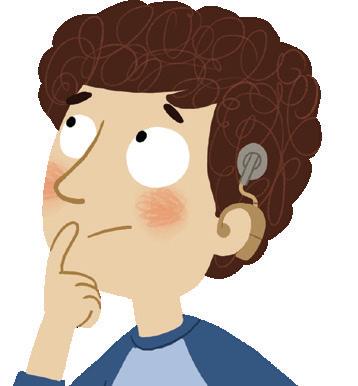
Answer
Draw sketches on a separate piece of paper or use place value materials to solve the divisions.
Oxford University Press 78 19 unit Selects and applies appropriate strategies to solve multiplication and division problems UNDERSTANDING N
1 4 5 7 3
1 4 4 5 7 3
1 4 3 r1 4 5 7 3
a 5 7 6 5 b 6 8 6 4 c 4 6 5 2 d 7 9 4 5 e 4 7 5 2 f 3 5 5 5 g 4 7 0 8 h 6 7 5 0 i 5 9 2 0 j 8 9 9 2 k 3 4 4 5 l 4 7 7 7 m 5 8 4 1 n 6 7 3 9 o 7 9 1 7 p 8 9 5 1 q 4 6 6 7 r 6 9 7 7 s 8 9 4 6 t 7 9 7 9 1 1 1 1
573 paint brushes were shared among 4 schools
a 369 ÷ 3 = d 492 ÷ 3 = b 684 ÷ 3 = e 492 ÷ 4 = c 678 ÷ 3 = f 605 ÷ 5 = 2 Hundreds 400 Tens 90 Ones 2 10 + 2 = 12 4 1 2 3 MP_NSW_SB5_38343_TXT_PPS_NG.indb 78 30-Aug-23 08:59:11
DRAFT
Ordering decimals
Draw lines to match the decimals to their position on the number lines.

Oxford University Press 79 19 unit Compares and orders decimals up to 3 decimal places UNDERSTANDING N
Write the decimals from 0.01 to 1.00 (1 whole) to complete the grid. 0.01 0.02 0.03 0.04 0.05 0.11 0.30 0.36 0.54 0.77 0.83 0.99 1
a $0.63 $0.36 $0.50 $0.05 b $1.67 $1.76 $7.61 $6.17 c 0.34 m 0.67 m 0.76 m 0.43 m d 1.37 m 1.73 m 7.31 m 3.17 m e 0.01 0.11 0.21 0.12 f 0.57 0.31 0.13 1 g 1.01 1.37 1.04 4.01 h 12.16 12.61 10.61 11.16
a 0.03 0.12 0.17 0.23 0.34 0 0.1 0.05 0.15 0.2 0.35 0.3 0.25 b 0.3 0.8 1.1 1.6 1.9 2.2 0 0.5 1 2.5 2.0 1.5 3 4 5 0.20 is the same as 0.2. MP_NSW_SB5_38343_TXT_PPS_NG.indb 79 30-Aug-23 08:59:12 DRAFT
Order each group from smallest to largest.
Ordinal data is categorical data and not specifically numerical. It can be sorted into groups or categories. For example, a child might be asked to rate a new toy from 1 to 10.
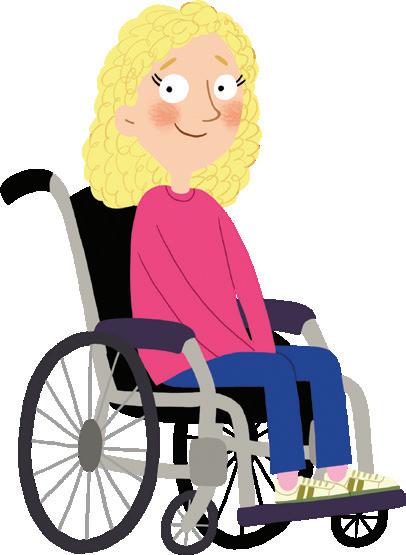
The 20 students in Ms LaHood’s karate class all went to the cinema to watch a new movie. They rated the movie from 1 to 5, with 5 being the highest rating.
Ordinal data is data that can be put in order.
Make a tally of the ratings of Ms LaHood’s class.
Answer the questions.
a How many students gave the movie the highest rating?
b How many students gave it the lowest rating?
c Did more children rate it 3 than 4?
d How many children rated it 2?
e Is it fair to say that most students thought the movie was a reasonable movie?
Use your computer to make a column graph of the ratings like the one below on the right. Use computer software, such as word processing software or spreadsheet software, to make your graph. You may have to fill in a table that looks like the one below to make your graph.
Oxford University Press 80 unit
Name Rating Name Rating Abdul 3 Ngarra 3 Koen 1 Sam 4 Advik 2 Aarev 2 Kiara 3 Thong 2 Jedda 3 Darsh 3 Cyra 4 Amir 4 Celina 4 Sally 5 Prisha 5 Mia 4 Alinta 5 Sophie 5 Parker 3 Lulu 4
Rating 1 Rating 2 Rating 3 Rating 4 Rating 5
A B C 1 Series 1 2 Rating 1 1 3 Rating 2 3 4 Rating 3 6 5 Rating 4 6 6 Rating 5 4 6 7 1 1 2 3 4 5 6 2 3 Rating Number of students 4 5 8 19 UNDERSTANDING DL CCT Constructs graphs using many-to-one scales Interprets data displays, including timelines and line graphs Ordinal data
MP_NSW_SB5_38343_TXT_PPS_NG.indb 80 30-Aug-23 08:59:12 DRAFT
1 tonne = 1000 kilograms. The tonne is used to measure large masses such as cars. The symbol for tonne is t.
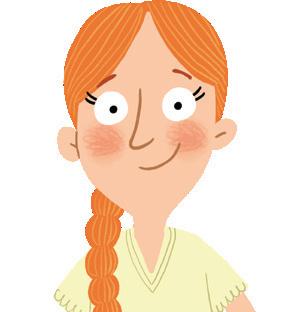
Explain some situations when it would be more convenient to measure mass in tonnes rather than in kilograms.

Place the following in order of mass, from lightest to heaviest.
Name
Mass
Complete these problems.
a What is the difference in mass between a cruise ship and a submarine?
DRAFT
b What is the total mass of all three ships?
Choose the appropriate mass unit to measure the mass of the following. Write g, kg or t for your answers.
a a matchbox e an elephant i a glue stick
b a dog f a ruler j a desk
c a pencil g a ship k a whale
d a person h a pony l a building
How many kilograms are in each of these masses?
A television set would be measured in kilograms.
3 3 4 t equals 3750 kg.
Oxford University Press 81 unit 19 Selects and uses the appropriate unit and device to measure the masses of objects REASONING L
The tonne
Cruise ship 4788 t
Frigate 3921 t
a b c
Submarine 2456 t
a 1 t = kg d 1 2 t = kg g 2.5 t = kg b 2 t = kg e 1 4 t = kg h 3.5 t = kg c 3 t = kg f 3 4 t = kg i 1.25 t = kg 9 10 11 12 13
MP_NSW_SB5_38343_TXT_PPS_NG.indb 81 30-Aug-23 08:59:13
Kim has written estimates for the questions in the table below. Use your estimation skills, such as rounding to the nearest ten, to write your own estimates and decide whether Kim's estimates are reasonable or unreasonable.
Question Kim’s estimate My estimate Reasonable
a 39 + 43 80
b 149 + 52 250
c 212 + 68 380
d 331 + 71 400
e 309 + 78 500
f 1111 + 83 1900
g 2127 + 43 2170
Calculate the cost of a return trip to London for a family of four people.
d

e Which is the most expensive travel agent?
f Which is the most economical travel agent?
Oxford University Press 82 unit Selects and applies appropriate strategies to solve addition and subtraction problems
COMMUNICATING, REASONING CCT Calculate the
addition. a b 1 0 3 5 6 c 2 3 4 5 7 d 3 5 7 6 4 2 5 3 4 7 4 4 2 4 2 6 6 2 2 6 8 5 + 2 4 8 + 3 0 3 + 3 3 0 7 + 3 0 7
Addition and estimation 20
answer to each
Unreasonable
JUZ FLIGHTS JET TRAVEL WHISPER TRAVEL FLY HIGH TRAVEL Sydney to London Sydney to London Sydney to London Sydney to London $2080 return Children $1020 $1247 one way Children $654 $3170 return Children FREE $1457 return Children $1457 Travel agent Father Mother Son Daughter Total a Juz Flights $
Jet
$
Whisper
$
b
Travel
c
Travel
Fly
High Travel $
1 2 3
estimate 137 +
Estimate
MP_NSW_SB5_38343_TXT_PPS_NG.indb 82 30-Aug-23 08:59:13 DRAFT
To
42, think 140 + 40.
= 180.
PROBLEM SOLVING
Sequences of fractions
Draw arcs on the number lines to continue the sequences, then record them in the tables below.
Use the number line below to help you continue the sequences.
Oxford University Press 83 unit Compares and orders fractions with denominators of 2, 3, 4, 5, 6, 8 and 10 20
N L CCT
a Adding 2 8 sequence 0 1 8 2 8 3 8 4 8 5 8 6 8 7 8 1 1 1 1 1 1 1 1 1 8 2 8 3 8 4 8 5 8 6 8 7 8 2 0 2 8 4 8 b Adding 2 10 sequence 0 1 10 2 10 3 10 4 10 5 10 6 10 7 10 8 10 9 10 1 1 110 2 110 3 110 4 110 5 110 6 110 0 2 10 c Adding 3 10 sequence 0 1 10 2 10 3 10 4 10 5 10 6 10 7 10 8 10 9 10 1 1 110 2 110 3 110 4 110 5 110 6 110 0 3 10 d Adding 3 4 sequence 0 1 4 2 4 3 4 1 1 1 1 2 2 2 3 1 4 2 4 3 4 1 4 2 4 3 4 3 4 3 2 4 3 1 4 4 2 3 0 3 4
0 1 5 2 5 3 5 4 5 1 1 1 1 2 2 2 1 5 2 5 3 5 1 4 5 1 5 2 5 3 5 2 4 5 3 1 5 3 2 5 2 3 a Adding 2 5 sequence 0 2 5 b Adding 3 5 sequence 0 3 5 c Subtracting 2 5 sequence 3 2 5 3 4 5
MP_NSW_SB5_38343_TXT_PPS_NG.indb 83 30-Aug-23 08:59:14 DRAFT
Design problems
Mr Snodgrass is thinking about buying a one-bedroom city apartment. He has been given this plan and a scale to work from. Use the scale to help Mr Snodgrass work out the sizes of his rooms.
Lauren has a new bedroom and some new furniture. Use the scale and follow the instructions to draw a plan view of her room as you would like it. (Plan views are views from above.)
a Use the scale to draw the boundary of the room first.
b Place her bed in an appropriate position.
c Put her new desk against a wall.
d Put her mat on the floor.
e Put her shelves against a wall.
Scale: 2 cm = 1 m
Oxford University Press 84 unit Selects and uses the appropriate unit and device to measure lengths and distances including perimeters REASONING CCT 20
6 Bedroom Kitchen Lounge Bathroom
1
Room Length Width a Bathroom
Lounge
Kitchen
Bedroom
Scale
cm = 1 m
b
c
d
7 Lauren’s bedroom 5 m 4 m desk 2 m 1 m shelves 3 m 1 m bed 2 m 1.5 m mat 1 m 1 m
MP_NSW_SB5_38343_TXT_PPS_NG.indb 84 30-Aug-23 08:59:14
DRAFT
Quadrilaterals are shapes that have 4 straight sides. There are many types of quadrilaterals and some have special names.
S R RH
A square is a quadrilateral that has 4 equal sides and 4 right angles.
A rectangle is a quadrilateral that has 2 pairs of equal sides and 4 right angles.
A rhombus is a quadrilateral that has 4 equal sides and the opposite angles are equal.
T P Q
A trapezium is a quadrilateral with one set of parallel sides.
A parallelogram is any quadrilateral with 2 sets of parallel sides.
4-sided shapes with no special name are given the family name of quadrilaterals.
8
9 10 11 4 m
Use the letters in the shapes above to identify the shapes below. For example, rectangle = R.
Is a triangle a quadrilateral? _________
Do all quadrilaterals have parallel sides? __________________
MP_NSW_SB5_38343_TXT_PPS_NG.indb 85 30-Aug-23 08:59:14
Oxford University Press 85 unit REASONING CCT 20 Quadrilaterals
a b c d e f g h
Sketch 3 examples of quadrilaterals. Investigates and classifies two-dimensional shapes, including triangles and quadrilaterals, based on their properties
DRAFT
The distributive law can be used as a mental strategy to solve multiplications.
Use mental and written strategies to complete these multiplications.

You can also use an area model to calculate larger multiplications.
Solve these multiplications.
Solve the questions below using any strategy you wish.

Selects and applies appropriate strategies to solve multiplication and division problems Constructs and completes number sentences involving multiplicative relations, applying the order of operations to calculations

Oxford University Press 86 unit
PROBLEM SOLVING N ICT 21
Distributive law
6 ×
THINK: 6 × (500
THEREFORE: 6 × 500 = 3 0 0 0 6 × 40 = 2 4 0 6 × 3 = 1 8 3 2 5 8
EXAMPLE:
543
+ 40 + 3)
a d g 5 × 254 = 6 × 467 = 3 × 493 = b e h 7 × 365 = 4 × 284 = 8 × 326 = c f i 4 × 707 = 6 × 854 = 9 × 732 =
For example, 5 × 367 300 60 7 5 1500 300 35 1500 + 300 + 35 = 1835
a 3 × 654 b 7 × 463 c 3 × 784 600 50 4 3 + + = 400 60 3 7 + + = 700 80 4 3 + + =
a 5 × 297 = b 6 × 836 = c 7 × 596 = d 8 × 807 = 1 2 3 6 × 543? MP_NSW_SB5_38343_TXT_PPS_NG.indb 86 30-Aug-23 08:59:14 DRAFT
Order the decimals from least to greatest.

Use a decimal point to separate whole metres from thousandths of a metre. The first one has been done for you.
Write each
Round each to the nearest whole number, e.g. 7.896 = 8.

Oxford University Press 87 unit Decimals to thousandths UNDERSTANDING N L 21 Compares and orders decimals up to 3 decimal places
a 5.624 5.426 5.651 b 9.864 89.423 9.919 c 13.561 3.567 13.651 d 215.246 21.524 52.421 e 3.387 3.378 3.377 f 42.25 24.52 523.5 g 35.49 3.549 3.459 h 6.306 0.63 6.630
a 1278 mm 1.278 m d 5630 mm . m g 8424 mm . m b 3529 mm m e 7400 mm m h 9000 mm m c 1500 mm . m f 8905 mm . m i 1423 mm . m
decimal
a 0.2 = 10 d 0.474 = g 0.027 = j 0.003 = b 0.27 = 100 e 0.567 = h 0.035 = k 0.004 = c 0.274 = 1000 f 0.859 = i 0.029 = l 0.005 =
as a fraction.
a 6.9 = d 22.98 = g 187.103 = b 10.1 = e 26.03 = h 261.795 = c 13.79 = f 37.799 = i 3467.859 = 5 6 7 8
the place value of
a 53.216 e 127.41 b 63.397 f 409.5 c 21.859 g 26.375 d 96.387 h 48.909 4 5 2 7 6 . 3 4 8 Ones Tens Hundreds Tenths Thousands Hundredths Thousandths 5.426 metres < 5.624 metres but 5.65 metres > 5.624 metres. DECIMAL PLACE VALUE MP_NSW_SB5_38343_TXT_PPS_NG.indb 87 30-Aug-23 08:59:15 DRAFT
Give
each bold digit.
A parallelogram is any shape with 4 straight sides. It must have 2 sets of parallel sides. Its opposite angles are equal.
Colour the shapes below that are parallelograms.
Draw parallelograms to fit the descriptions.
a I am a parallelogram that b I am a parallelogram that c I am a parallelogram that has 4 right angles and has 2 pairs of sides that are has 2 pairs of sides that are 4 equal sides. equal and 4 right angles. equal and no right angle.
Explain why this shape is not a parallelogram.
Is it possible for a triangle to be a parallelogram?
Is it possible for a parallelogram shape to tessellate?
What is the size of angle x on the parallelogram?
The faces of which objects are all parallelograms?
Which object contains an equilateral triangle?
Oxford University Press 88 unit
9 10
° x 70° 70° 110° 15 16 A C D E B UNDERSTANDING N L Investigates and classifies two-dimensional shapes, including triangles and quadrilaterals, based on their properties 21 Parallelograms MP_NSW_SB5_38343_TXT_PPS_NG.indb 88 30-Aug-23 08:59:15 DRAFT
11 12 13 14
Refer to the bus timetable and write how long each section of the trip takes.
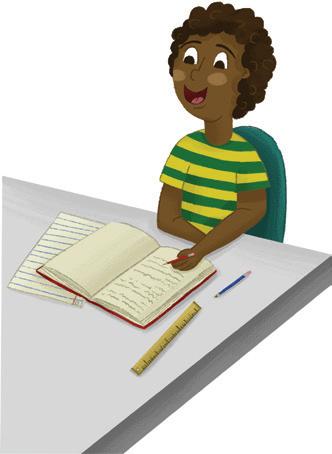
a Brisbane–Toowoomba
b Moree–Dubbo
c Peak Hill–Forbes
d Griffith–Deniliquin
e Deniliquin–Bendigo
f Bendigo–Tullamarine
g Tullamarine–Melbourne
Answer these questions.
a How long is the rest stop at Dubbo?
b How long is the rest stop at Griffith?
c How long is the rest stop at Bendigo?
d How long is the entire trip from Brisbane to Melbourne?
DRAFT
Prepare a timetable for the events in your day.

Oxford University Press 89 unit Measures and compares duration, using 12- and 24-hour time and am and pm notation UNDERSTANDING, PROBLEM SOLVING L CCT 21
24-hour timetables
Section Length of time
Section Length of time
timetable Brisbane Dep. 0900 hours Mount Ommaney 0920 hours Ipswich 0950 hours Gatton 1025 hours Toowoomba 1110 hours Pittsworth 1140 hours Goondiwindi 1345 hours Moree 1600 hours Narrabri 1715 hours Gilgandra 1955 hours Dubbo Arr. Dep. 2045 hours 2130 hours Peak Hill 2220 hours Parkes 2300 hours Forbes 2325 hours Wyalong 0035 hours Griffith Arr. Dep. 0230 hours 0330 hours Deniliquin 0615 hours Echuca 0715 hours Bendigo Arr. Dep. 0835 hours 0910 hours Tullamarine 1055 hours Melbourne 1115 hours
17 18 Bus
Time Activity 0700 hours to 0800 hours 0800 hours to 0900 hours 0900 hours to 1000 hours 1000 hours
hours 1100 hours
hours 1200
1300
1500
1600 hours
1700 hours
MP_NSW_SB5_38343_TXT_PPS_NG.indb 89 30-Aug-23 08:59:15
to 1100
to 1200
hours to 1300 hours
hours to 1400 hours 1400 hours to 1500 hours
hours to 1600 hours
to 1700 hours
to 1800 hours 19
5-digit subtraction
As part of Paula’s job at the mail centre she needs to know the population of the major towns in NSW and the differences in size between them. Help her calculate the difference in population between these towns.
Oxford University Press 90 unit Selects and applies appropriate strategies to solve addition and subtraction problems PROBLEM SOLVING, REASONING L N CCT 22
these algorithms. a 9 5 6 2 3 b 7 8 3 3 1 c 2 9 4 5 3 d 8 2 8 4 6 e 9 6 3 2 5 3 2 1 5 2 4 4 1 0 9 1 4 2 2 8 3 1 6 7 5 4 3 8 1 6 f 6 9 3 2 8 g 5 9 4 3 2 h 6 8 2 3 5 i 9 4 2 9 9 j 8 5 2 9 6 2 1 7 1 3 3 6 2 7 0 4 2 9 2 1 3 9 0 8 8 4 8 1 4 9 k 8 0 0 0 0 l 6 7 0 0 0 m 8 9 0 0 0 n 5 0 0 0 0 o 7 5 0 0 0 6 8 2 3 1 2 5 7 3 3 3 2 9 1 7 2 3 8 0 9 5 9 3 6 9 1 1 7 6 9
Complete
Town Population Town Population Armidale 29 317 Forster 20 963 Ballina 46 760 Griffith 27 666 Broken Hill 17 567 Parkes 14 342 Byron Bay 9000 Shellharbour 78 256 Coffs Harbour 79 596 Taree 16 817 Dubbo 37 368 Wagga Wagga 68 227 a Broken Hill c Shellharbour e Armidale Byron Bay Coffs Harbour Ballina Difference Difference Difference b Forster d Wagga Wagga f Shellharbour Griffith Taree Broken Hill Difference Difference Difference
40 888 less than Shellharbour? 1 2 3 7 9 9 9 1 MP_NSW_SB5_38343_TXT_PPS_NG.indb 90 30-Aug-23 08:59:16 DRAFT
Which town has a population
Adding and subtracting fractions
Colour each fraction addition in a different colour to find the answer. The first one is done for you.
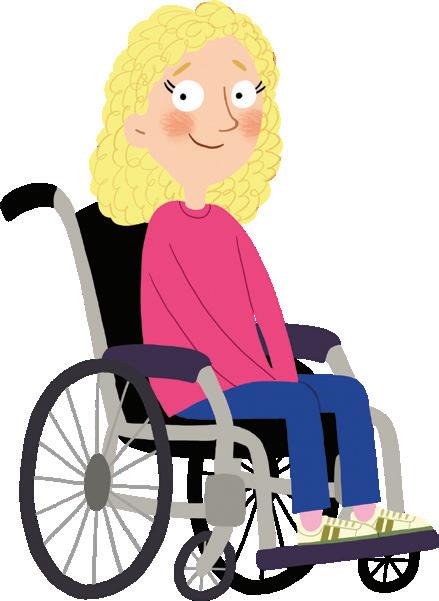
Complete these addition sentences.
Complete these operations.
Find pairs of fractions that could be added or subtracted to give the answer 9 10 .
Oxford University Press 91 unit Compares and orders fractions with denominators of 2, 3, 4, 5, 6, 8 and 10 PROBLEM SOLVING N 22
a 2 6 + 2 6 = 6 c 2 10 + 5 10 = 10 e 3 6 + 2 6 = 6 g 5 10 + 4 10 = 10 b 3 10 + 4 10 = 10 d 2 4 + 1 4 = 4 f 3 8 + 3 8 = 8 h 3 10 + 5 10 = 10
a 3 10 + 4 10 = d 5 8 + 1 8 = g 4 6 + 1 6 = j 2 6 + 2 6 = b 2 4 + 1 4 = e 2 5 + 2 5 = h 6 8 + 1 8 = k 3 6 + 2 6 = c 5 10 + 2 10 = f 1 6 + 2 6 = i 1 6 + 1 6 + 1 6 = l 2 10 + 2 10 + 2 10 =
a 7 10 4 10 = f 4 6 1 6 = k 2 3 1 3 = b 7 10 5 10 = g 4 5 3 5 = l 5 6 2 6 = c 9 10 5 10 = h 5 10 3 10 = m 5 6 3 6 = d 7 10 3 10 = i 6 8 3 8 = n 4 6 1 6 = e 8 10 5 10 = j 3 4 1 4 = o 4 6 3 6 = 4 5 6 1 – 1 4 = Think 4 4 –1 4 = 3 4
7 5 10 6 10 8 10 2 10 10 10 4 10 1 10 3 10 9 10 7 10 Answers MP_NSW_SB5_38343_TXT_PPS_NG.indb 91 30-Aug-23 08:59:16 DRAFT
Three primary schools each raised the same amount of money at their fetes.
School
Greenway Primary School
Answer these questions.
a Which activity raised the most money at Hill Top Primary School?
b Which activity raised the most money at Greenway Primary School?
c Which activity raised the most money at Binga Primary School?
d Which activity raised the least amount at Binga Primary School?
e Which activity raised the least amount at Hill Top Primary School?
f Which activity raised the least amount at Greenway Primary School?
g Were pony rides the least successful at all schools?
h Which two activities raised the most money at all schools?
i Which was more successful at Greenway, craft or pony rides?
j Which was more successful at Binga, craft or pony rides?
k Which was less successful at Hill Top, craft or cakes?
l If $300 was raised at Hill Top’s auction, is it reasonable to say that the raffle raised about $350?
Oxford University Press 92 unit
8 Cakes Craft Raf e Auction Ponyrides Craft Auction Pony rides Raf e Cakes
Binga Primary School
Dollars Craft Auction Pony rides Raf e Cakes Cakes Craft Raf e Auction Ponyrides Craft Craft Auction Raf e Auction Pony rides Pony rides Raf e Cakes Greenway Primary School Binga Primary School Hill Top Primary School Cakes Dollars Interprets data displays, including timelines and line graphs N CCT 22 Interpreting graphs MP_NSW_SB5_38343_TXT_PPS_NG.indb 92 30-Aug-23 08:59:16 DRAFT
Hill Top Primary
d
Constructing objects 22
Draw a line to match each object to its set of views.
Top Front Side
front view
Construct the objects from their views then sketch them in the space provided. Useful materials may be centicubes, Base 10 ones or blocks.
DRAFT
top front side
top front side
top front side
Visualises, sketches and constructs three-dimensional objects, including prisms and pyramids, making connections to two-dimensional representations
Oxford University Press 93 unit
REASONING N CCT
a b c
9 10
b c
a
MP_NSW_SB5_38343_TXT_PPS_NG.indb 93 30-Aug-23 08:59:17
How much would the Internet Cafe pay for 5 new computers at $2325 each?
1 Complete the multiplications.
Round the larger numbers to the nearest thousand to estimate the product.
a 3988 × 7 ≈
b 2895 × 6 ≈
c 1991 × 5 ≈
d 4887 × 3 ≈
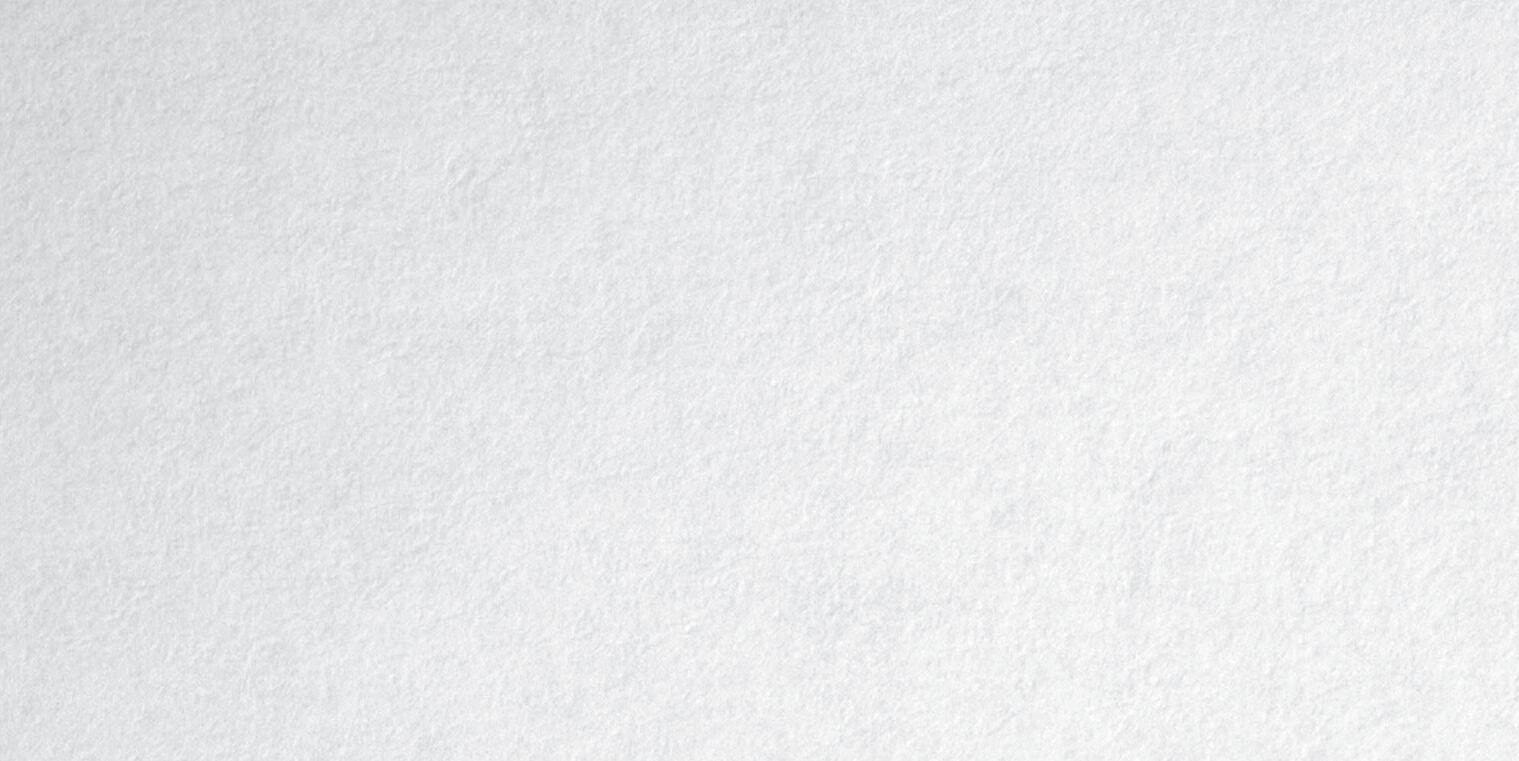
e 5011 × 4 ≈
Solve these problems using any strategy you wish.
a How many kilometres would a pilot travel if she completed 6 trips of 2410 km?
b Kim reckons there are 1952 thumb tacks in the pack. How many would there be in 5 packs?

Oxford University Press 94 unit Selects and applies appropriate strategies to solve multiplication and division problems 23 4-digit multiplication PROBLEM SOLVING N
a 2542 b 6172 × 4 × 3 c 4253 d 3258 e 5163 f 5321 g 6246 × 6 × 5 × 6 × 7 × 9 h 3553 i 2417 j 4962 k 3528 l 5462 × 2 × 8 × 5 × 4 × 3 m 3529 n 5893 o 3499 p 9531 q 7015 × 9 × 7 × 8 × 2 × 7
Estimating and rounding
BISO 100 THUMB TACKS 1 2 3
1 1 2 $ 2 3 2 5 × 5 $ 1 1 6 2 5 5985 × 5? Think 6000 × 5. That’s 30 000. MP_NSW_SB5_38343_TXT_PPS_NG.indb 94 30-Aug-23 08:59:17
DRAFT
Subtracting fractions from wholes
Fractions can be subtracted from whole numbers, e.g. Tom had a chocolate bar and gave away 1 3 of
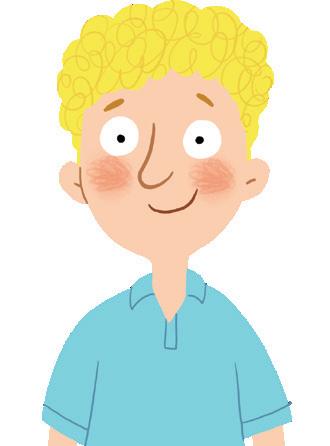
Use the diagrams to help you subtract the fractions from one whole.
Fractions can be subtracted from more than one whole number, for example, Alexis had 2 pizzas and gave away 1 4 of one.
Subtract the fractions of pizza.
Use the number lines to solve the subtractions.
Oxford University Press 95 unit Compares
fractions
denominators
2, 3, 4, 5, 6, 8 and 10 Determines 1 2 , 1 4 , 1 5 and 1 10 of
and quantities PROBLEM SOLVING L N CCT
and orders
with
of
measures
23
a 1 1 5 = b 1 1 4 = c 1 1 8 = d 1 1 6 = e 1 1 10 = 4
a 2 1 3 = b 2 1 5 = c 3 1 2 =
0 1 4 2 4 3 4 1 1 1 4 1 2 4 1 3 4 2 2 1 4 2 2 4 2 3 4 3 3 1 4 3 2 4 3 3 4 4 0 1 3 2 3 1 1 1 3 1 2 3 2 2 1 3 2 2 3 3 3 1 3 3 2 3 4 4 1 3 4 2 3 5 5 1 3 a 1 1 4 = d 2 1 3 = g 4 1 4 = b 1 1 3 = e 3 1 4 = h 4 1 3 = c 2 1 4 = f 3 1 3 = i 5 1 3 = 5 6
it. 1 1 3 = 2 3 What would 1 – 2 3 equal?
2 1 4 = 1 3 4 MP_NSW_SB5_38343_TXT_PPS_NG.indb 95 30-Aug-23 08:59:18 DRAFT
Tree diagrams are used to display all possible outcomes from a simple chance experiment.
Aliya wanted to order a new sports car. Her choices were as follows:
7 8
Convertible or hard top Automatic or manual V6 engine or 4-cylinder
Red or black
Complete the tree diagram to find all possible combinations of sports car.
Convertible
Automatic V6 4-cylinder V6 4-cylinder
Red Black
DRAFT
Cora made her daughter a sandwich. Her choices were cheese or salad, on white or brown bread, with or without margarine.
Draw a tree diagram to display all possible combinations of the sandwich.
cheese salad
Oxford University Press 96 unit UNDERSTANDING, REASONING CCT N 23 Chance/all
Conducts chance experiments and quantifies the probability
possible outcomes
MP_NSW_SB5_38343_TXT_PPS_NG.indb 96 30-Aug-23 08:59:18
Letters can also be used in coordinates.


Name the streets found at these coordinate points.
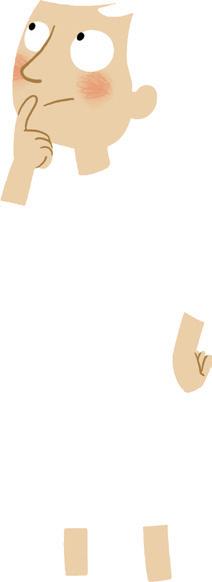
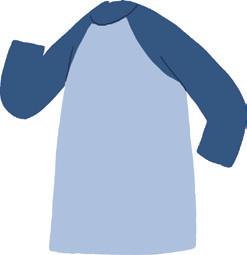
Give one set of coordinate points for each location.

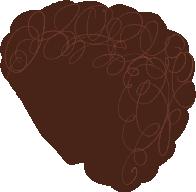
Oxford University Press 97 unit Locates and describes points on a coordinate plane Coordinates 23 COMMUNICATING, PROBLEM SOLVING N L CCT N A B C D E F G H I J K L M N O P Q 1 2 3 4 5 6 7 8 9 10 11 Lopez Ave Madonna St Spice Rd Ross Rd Kylie St BeatleSt MariahRd Grant St Peita Ave Fiona Rd Green Rd Britany Ave Sporty Rd Green St Day St Red St Tama St Paul St Angust St Crow St Savage Rd Posh Rd Hood St Backstreet Rd Elle Rd Tim St C A B D E F G Lauren St Ricky Rd
a (A,3) c (C,9) e (F,8) b (E,4) d (N,1) f (L,8)
a Point B b Point A c Point E d Point G e Point C f Point D g Point F 10
Always remember the first coordinate goes on the x axis. 1 0 0 1 2 3 4 2 3 4 5 x y (3, 2) 1 0 0 1 2 3 4 5 2 3 4 5 6 6 x axis y axis Plot the coordinates then connect them to make an irregular hexagon. 9 (1,1) (1,5) (3,5) (5,3) (3,3) (5,1) MP_NSW_SB5_38343_TXT_PPS_NG.indb 97 30-Aug-23 08:59:18 DRAFT
11
Division by ten/estimation

575 nails were shared among 10 carpenters.
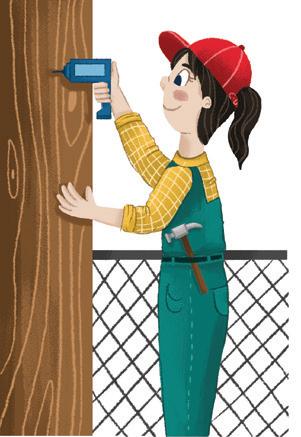
Divide 57 tens by 10. Each carpenter gets 5.
Trade the 7 tens for 70 ones. Now share the 75 ones. Each carpenter gets 7. That leaves a remainder of 5.
5 7 10 5 775 r5
Estimate an answer to each division by rounding the larger number. Check if the answer supplied is reasonable or unreasonable. The first one is done for you.
Find the averages.
a John has 7 cards, Ava 6, Leanne 5, Toula 7 and Leo 30. What is the average number of cards per child?
b Linh scored 17 runs, 6 runs, 10 runs and 11 runs in 4 innings. What was her average?
c Sam is 127 cm high, Jilly 140 cm, Tom 153 cm, Soula 133 cm and Tim 147 cm. What is the average height of the group?
Averages are found by totalling the scores, then dividing by the number of scores.
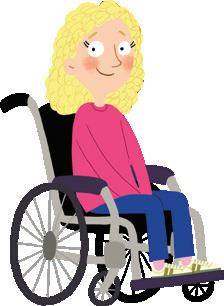
Oxford University Press 98 unit Selects and applies appropriate strategies to solve multiplication and division problems Applies an understanding of place value and the role of zero to represent the properties of numbers 24 PROBLEM SOLVING, REASONING CCT N
Complete these divisions. a 10 8 6 0 e 10 8 1 0 i 10 7 8 0 m 10 3 2 5 q 10 6 8 5 b 10 7 5 0 f 10 7 0 0 j 10 8 6 0 n 10 7 7 7 r 10 7 9 7 c 10 4 8 0 g 10 9 8 0 k 10 6 5 4 o 10 5 1 1 s 10 8 7 4 d 10 9 0 0 h 10 3 9 0 l 10 3 5 7 p 10 9 7 4 t 10 7 8 9
Question Answer Estimate Reasonable Unreasonable a 388 ÷ 4 97 100 ✓ b 318 ÷ 6 53 c 776 ÷ 4 194 d 989 ÷ 5 197 r4 e 898 ÷ 3 399 r1 f 7009 ÷ 5 1501 r2 g 1590 ÷ 8 198 r6 h 2417 ÷ 4 404 r1
1 2 3
5 10 5 7 5 MP_NSW_SB5_38343_TXT_PPS_NG.indb 98 30-Aug-23 08:59:19 DRAFT
Fractions can name part of a group.
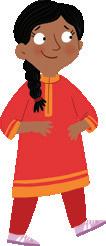





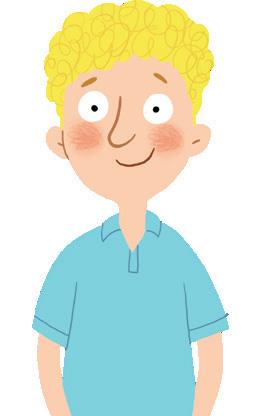

1 3 of 6 girls = 2 girls
Find the fraction of each group.
Use the array to find these fractions of the group of 48. a 1 3 of 48 =
Solve these problems.
a There were 3 dozen cakes on a tray until Jana tripped on a loose tile and spilt 1 4 of them. How many did she spill?
b Jackson had 60 cents to spend. How much was the ice cream he bought if it was equal to 1 3 of his money?
c If 1 10 of the 100 seats in the restaurant were reserved for Kai’s birthday party, how many were reserved for Kai’s party?
d Our family had 45 raffle tickets to sell. How many did Aunty Donna buy if she bought 1 5 of them?
Keira ate 1 3 of a cake, and Abdul ate 1 2 of a cake. If Keira ate more than Abdul, explain how this is possible.

Oxford University Press 99 unit Determines 1 2 , 1 4 , 1 5 and 1 10 of measures and quantities 24
COMMUNICATING, PROBLEM SOLVING N L CCT 1 3 of 6 = 2 1 3 of 60 = 20
Fractions of a quantity
1 3 of 12
e
6 of
= i 1 3 of 27 = m 1 4 of 36 = q 1 6 of 60 =
1 3 of 24 = f 1 3 of 21 = j 1 3 of 60 = n 1 6 of 24 = r 1 6 of 54 = c 1 3 of 18 = g 1 6 of 30 = k 1 3 of 15 = o 1 3 of 30 = s 1 6 of 72 =
1 6 of 12 = h 1 2 of 24 = l 1 6 of 36 = p 1 3 of 60 = t 1 3 of 90 =
a
=
1
18
b
d
b 1 6 of 48 =
c 1 8 of 48 =
d 1 4 of 48 =
4 5 6 7
1 2 of 48 = 24 MP_NSW_SB5_38343_TXT_PPS_NG.indb 99 30-Aug-23 08:59:20
DRAFT
Measuring angles in triangles
Measure the angles in these triangles.
a Equilateral triangle
b Scalene triangle Angle A
c Isosceles triangle d Right-angled triangle
What can you say about the size of the angles in an equilateral triangle?
What can you say about the size of the angles in a scalene triangle?
Follow the directions to draw an isosceles triangle using compasses.
a Set your compasses to 7 cm.
b Place the point of the compasses at A on the line drawn for you, then draw an arc softly.
c Place the point of the compasses at B on the line, then draw an arc softly until it crosses the first arc you drew.
d Join the ends of the line to the point where the arcs cross.
Oxford University Press 100 unit Measures and constructs angles, and identifies the relationships between angles on a straight line and angles at a point REASONING L CCT 24
°
° Angle
°
° Angle
°
C ° A B C A B C
Angle A
B
Angle B
C
Angle
Angle A ° Angle A ° Angle B ° Angle B ° Angle C ° Angle C ° A B C A B C
8 9 10 11 A B A B A B A B MP_NSW_SB5_38343_TXT_PPS_NG.indb 100 30-Aug-23 08:59:21
DRAFT
Time zones/24-hour time
Study the map that shows Australia’s three time zones.
Key White: Eastern standard Yellow: Central standard Green: Western standard
Central standard time is 1 2 an hour behind Eastern standard time.
Western standard time is 2 hours behind Eastern standard time.
Complete the time zone tables using 24-hour time.
Complete the clocks to show the time in each location.
In summer in NSW we have daylight saving. This has the effect of making the days seem longer, with more daylight hours in the evenings.
In addition to NSW, the ACT, Victoria, Tasmania, South Australia and Western Australia also have daylight saving. This means that clocks are moved forward one hour on the first Sunday in October and moved back again on the last Sunday in April the following year. Complete the clocks to show the times in the other capital cities compared to Sydney during daylight saving.
Oxford University Press 101 unit Measures and compares duration, using 12- and 24-hour time and am and pm notation COMMUNICATING, REASONING CCT 24
DARWIN
Alice Springs
BRISBANE
CANBERRA SYDNEY PERTH ADELAIDE MELBOURNE HOBART
Western standard time Central standard time Eastern standard time Western standard time Central standard time Eastern standard time a 0800 hours 0930 hours 1000 hours e 1600 hours b 1100 hours f 1630 hours c 1130 hours g 1800 hours d 1100 hours h 1900 hours
a 11 12 1 2 3 4 5 6 7 8 9 10 b 11 12 1 2 3 4 5 6 7 8 9 10 c 11 12 1 2 3 4 5 6 7 8 9 10 d 11 12 1 2 3 4 5 6 7 8 9 10 e 11 12 1 2 3 4 5 6 7 8 9 10 f 11 12 1 2 3 4 5 6 7 8 9 10 Perth Darwin Adelaide Brisbane Sydney Hobart
a 11 12 1 2 3 4 5 6 7 8 9 10 b 11 12 1 2 3 4 5 6 7 8 9 10 c 11 12 1 2 3 4 5 6 7 8 9 10 d 11 12 1 2 3 4 5 6 7 8 9 10 e 11 12 1 2 3 4 5 6 7 8 9 10 f 11 12 1 2 3 4 5 6 7 8 9 10 Sydney Darwin Adelaide Brisbane Perth Hobart 12
13 14
MP_NSW_SB5_38343_TXT_PPS_NG.indb 101 30-Aug-23 08:59:22
DRAFT
Calculator problems
Fred’s Fruit and Veg Barn
Use a calculator to calculate these purchases.
a Charlotte bought 3 kg of bananas, 2 kg of strawberries and 6 pears. How much did she spend? $
b Hudson bought 5 pears, 4 pumpkins and 7 kg of oranges. How much did he spend? $
c Mr Nguyen bought 17 pears and 15 kg of strawberries for his catering business. How much did he spend? $
d Kelly bought 4 kg of bananas, 3 kg of oranges, 2 pears and 7 pumpkins. How much change did she receive from $50? $
Write and solve two problems using the shopping items above.
Draw a line to match each number sequence with its correct problem, then solve the problems.
a Twenty-seven children attended the movies. If it cost them $6.50 each, what was the total amount charged by the theatre?
b Lily bought six books at $7 each, three books at $9 each and seven books at $5 each. How much did she spend?
c Sarah bought 1 4 of a box of 24 apples. If she paid 60c for each apple, how much did she spend?
d Xavier bought five tins of dog food at 90c each and a magazine at $5.60. How much did he spend?
e Matilda planted 6 rows of 8 flowers. 1 4 of them died. How many flowers died?
Oxford University Press 102 unit Constructs and completes number sentences involving multiplicative relations, applying the order of operations to calculations
25
Bananas $3.99 a kg Oranges $2.49 a kg Pumpkins $1.95 each Pears $0.90 each Strawberries $3.85 a kg
a b
1 2 3 (6 × $7) + (3 × $9) + (7 × $5) = ( 1 4 of 24) × $0.60 = 27 × $6.50 = 6 × 8 × 1 4 = ($0.90 × 5) + $5.60 = PROBLEM SOLVING, REASONING N L CCT ICT MP_NSW_SB5_38343_TXT_PPS_NG.indb 102 30-Aug-23 08:59:22 DRAFT
Complete these charts which involve multiplication by 10, 100 and 1000.
Estimate the following by rounding the first number to the nearest 10 or 100 before multiplying them.

Step 1: Write the 0 because you are multiplying by a ten.
Step 2: Multiply by 4 using the shortened method.
Complete these multiplications.

Oxford University Press 103 unit Selects and applies appropriate strategies to solve multiplication and division problems PROBLEM SOLVING N 25
Multiplication by tens
× 10 100 1000 ×
100 1000 a 3 30 300 3000 g 18 1800 b 5 h 25 c 6 i 31 31 000 d 7 j 44
9 k 56
10 10 000 l 78 780
10
e
f
a 99 × 7 = e 197 × 2 = i 199 × 7 = b 48 × 6 = f 49 × 4 = j 307 × 6 = c 19 × 5 = g 207 × 6 = k 407 × 5 = d 53 × 6 = h 246 × 5 = l 813 × 8 = 4 5
a 2 4 b 2 6 c 3 5 d 2 7 e 1 8 × 2 0 × 4 0 × 3 0 × 4 0 × 5 0 f 1 2 7 g 1 3 5 h 1 2 8 i 2 3 6 j 2 4 8 × 2 0 × 5 0 × 4 0 × 3 0 × 5 0 k 3 4 5 l 4 6 3 m 2 7 5 n 2 3 8 o 4 4 7 × 4 0 × 6 0 × 7 0 × 8 0 × 9 0 6
Thou Hund Tens Ones 2 4 5 × 4 0 1 8 0 0 Always write the 0 first. MP_NSW_SB5_38343_TXT_PPS_NG.indb 103 30-Aug-23 08:59:22 DRAFT
Adding fractions greater than 1 whole
Add or subtract these fractions. The first one is done for you.
Subtracting fractions with like denominators is easy.
Converting improper fractions to mixed numerals
When adding fractions we often obtain an answer that is greater than one. In such cases the answer is first given as an improper fraction then converted to a mixed numeral by dividing its numerator by its denominator.

EXAMPLE 7 10 + 7 10 = 14 10 = 1 4 10

Add the fractions, then convert the improper fraction answer to a mixed numeral. The number line may help you.
Add the fractions to get an improper fraction, then convert it to a mixed numeral. The first one is done for you.
+
The pizza shop
a Tom ate 5 8 of a pizza and Zac ate 7 8 of a pizza.
How much pizza did they eat?
b Amal ate 5 8 of a pizza, Nullah ate 5 8 and Sam ate 6 8 .
How much pizza did they eat?
c Allegra ate 7 8 of a pizza, Fatima 5 8 , Ahmad 7 8 and Nara 4 8
What was the total amount of pizza they ate?
Oxford University Press 104 unit Determines 1 2 , 1 4 , 1 5 and 1 10 of measures and quantities 25
N CCT ICT
a 3 5 + 1 5 = 4 5 d 7 10 + 1 10 = g 1 10 + 2 10 + 4 10 = b 3 8 + 4 8 = e 8 8 3 8 = h 2 10 + 2 10 + 3 10 = c 1 3 + 1 3 = f 5 6 3 6 = i 1 5 + 1 5 + 1 5 = 7
0 1 1 1 10 2 10 3 10 4 10 5 10 6 10 7 10 8 10 9 10 1 10 1 2 10 1 3 10 1 4 10 1 5 10 1 6 10 1 7 10 a 4 10 + 7 10 = 11 10 = 1 1 10 c 7 10 + 8 10 = = e 6 10 + 5 10 = = b 6 10 + 7 10 = = d 7 10 + 5 10 = = f 9 10 + 5 10 = =
a 3 5 + 3 5 = 6 5 = 1 1 5 e 4 6 + 4 6 = = i 5 10 + 5 10 + 3 10 = = b 3 5 + 4 5 = = f 7 8 + 5 8 = = j 8 10 + 9 10 + 6 10 = = c 4 5 + 4 5 = = g 7 10 + 5 10 = = k 3 8 + 3 8 + 5 8 = = d 2 3 + 2 3 = = h 9 10
4 10 = = l 3 5 + 4 5 + 4 5 = =
8
9 10
7 10 –2 10 = 5 10 MP_NSW_SB5_38343_TXT_PPS_NG.indb 104 30-Aug-23 08:59:23 DRAFT
Gross and net mass
Builders use different types of screws to join different types of materials. Some common materials are chipboard, used to make laundry cupboards, plasterboard for bedroom walls, metal for roofs and steel for factory walls. The length and mass of these screws are recorded on this chart.
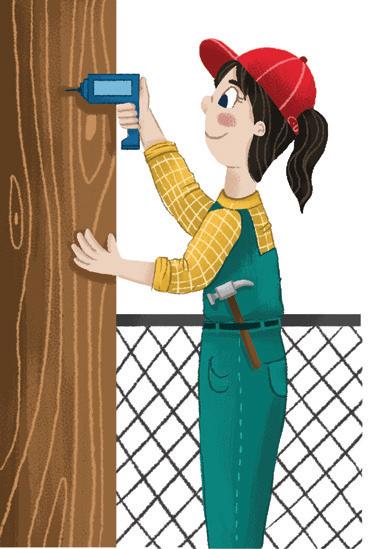
Screws For chipboard For plasterboard For metal For steel
Length 20 mm 40 mm 32 mm 50 mm
Mass 8 grams 6 grams 8 grams 12 grams
Use the information in the table above to calculate the mass of these packets of screws.
a 100 chipboard screws g e 25 steel screws g
b 100 plasterboard screws g f 150 metal screws g
c 200 metal screws g g 1000 chipboard screws g
d 100 steel screws g h 500 plasterboard screws g
Gross mass is the total mass. Net mass is the mass of the contents only. For example, some fruits bought at the fruit shop may have a net mass of 1800 g but have a gross mass of 1995 g because the cardboard box they are packaged in has a mass of 195 g.
Solve the problems to find the gross mass.
DRAFT


a The cereal has a net mass of 250 g but the cardboard box that it is packaged in has a mass of 70 g. What is the gross mass of the cereal?
b A bar of soap has a mass of 120 g. What would be the gross mass of 5 bars of soap in a cardboard box with a mass of 55 g?
c A golf ball has a mass of 45 g. The box that they come in has a mass of 40 g. What is the gross mass of 8 golf balls packed in one box?
d A pencil has a mass of 5 g. What would be the gross mass of a box of twelve pencils if the box has a mass of 18 g?
e A set of 36 pencils with a net mass of 5 g each is sold in a metal case. The case has a mass of 400 g. What is the gross mass of the pencil set?
f Peta bought 20 small apples in a cardboard box. What would the gross mass of the box of apples be if the apples averaged 200 g each and the box had a mass of 400 g?
Oxford University Press 105 unit Selects and uses the appropriate unit and device to measure the masses of objects 25
REASONING, PROBLEM SOLVING N
11
Top Cereal
EaglesGolfBalls
12 MP_NSW_SB5_38343_TXT_PPS_NG.indb 105 30-Aug-23 08:59:24
26

Two digits multiplied by two digits
37 by 25.
Each carton of tomato soup has 32 cans in it. How many cans of soup are held on this pallet? 2
Oxford University Press 106 unit Selects and applies appropriate strategies to solve multiplication and division problems
UNDERSTANDING, PROBLEM SOLVING Complete
a 2 5 b 3 6 c 4 5 d 3 6 e 2 9 × 2 3 × 3 4 × 2 5 × 3 5 × 4 6 f 2 7 g 5 6 h 3 9 i 2 7 j 3 5 × 3 7 × 4 5 × 5 6 × 2 8 × 3 9 k 5 7 l 2 7 m 8 6 n 6 3 o 6 7 × 4 7 × 5 6 × 2 9 × 3 7 × 4 8
these multiplications.
1
Tomato Soup 32 cans Tomato Soup Tomato Soup 32 cans Tomato Soup Long multiplication by 2 digits 3 7 × 2 5 1 8 5 7 4 0 9 2 5
at
The area model 37 x 25 Tomato Soup 32 cans Tomato Soup 32 cans Tomato Soup 32 cans Tomato Soup 32 cans Tomato Tomato Soup 32 cans Tomato Soup 32 cans Tomato Soup 32 cans Tomato Soup 32 cans Tomato Soup 32 cans Tomato Soup 32 cans Tomato Tomato Soup 32 cans Tomato Soup 32 cans Tomato Soup 32 Tomato Soup 32 cans Tomato Soup 32 Tomato Soup 32 cans Tomato Tomato Soup 32 Tomato Soup 32 cans Tomato Soup 32 Tomato Soup 32 cans Tomato Tomato Soup 32 Tomato Soup 32 cans Tomato Soup 32 Tomato Soup 32 cans Tomato Tomato Soup 32 Tomato Soup 32 cans Tomato Tomato Soup 32 Tomato Soup 32 cans Tomato Soup 32 Tomato Soup 32 cans Tomato Tomato Soup 32 Tomato Soup 32 cans Tomato Tomato Soup 32 Tomato Soup 32 cans Tomato Soup 32 Tomato Soup 32 cans Tomato Tomato Soup 32 cans Tomato Soup 32 cans Tomato Tomato Soup 32 cans Tomato Soup 32 cans Tomato Soup 32 cans Tomato Soup 32 cans Tomato Tomato Soup 32 cans Tomato Soup 32 cans Tomato Tomato Soup 32 cans Tomato Soup 32 cans Tomato Soup 32 cans Tomato Soup 32 cans Tomato Tomato Soup 32 cans Tomato Soup 32 cans Tomato Tomato Soup 32 cans Tomato Soup 32 cans Tomato Soup 32 cans Tomato Soup 32 cans Tomato
=
185 740 (37 × 5) + (37 × 20) = 925 5 × 30 30 7 20 × 30 5 × 7 20 × 7 5 20 3 7 × 2 5 3 5 1 5 0 1 4 0 6 0 0 MP_NSW_SB5_38343_TXT_PPS_NG.indb 106 30-Aug-23 08:59:24 DRAFT
Let's look
multiplying
37 × 5 = 185 37 × 20
740
State the place value of each bold digit.
Decimal place value
Decimal place value
Write the number before and after each decimal.


To convert fractions to decimals, divide the numerator by the denominator. Calculators can help. For
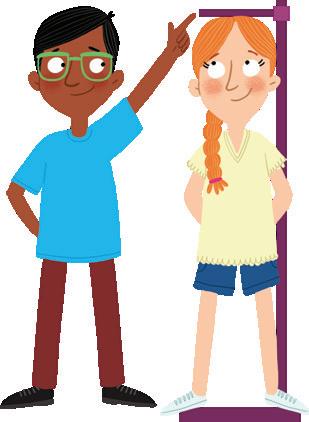
Use a calculator to convert each fraction into a decimal, some will include whole numbers.
The six people in the following group were measured and their heights recorded.
a Who is the tallest person?
b Who is the shortest person?
c Who is 1 mm taller than Scott?
d Whose height is between Catherine and Kimberly’s?
Oxford University Press 107 unit Compares and orders decimals up to 3 decimal places 26 PROBLEM SOLVING CCT N
a 0.36 b 3.397 c 5.475 d 6.387 e 6.867 i 85.791 f 29.476 j 23.074 g 36.584 k 49.768 h 74.346 l 186.540
a 36.273 c 369.47 e 26.359 b 274.56 d 357.24 f 47.807
a 35 100 = 0. f 236 100 = k 9805 100 = b 97 100 = 0. g 342 100 = l 1555 1000 = c 7 10 = 0. h 464 1000 = m 3477 1000 = d 9 10 = 0. i 875 100 = n 7423 1000 = e 123 1000 = 0. j 1961 1000 = o 9608 100 =
Kimberly 1.553 m Scott 1.647 m Sarah 1.648 m James 1.435 m Trent 1.390 m Catherine 1.349 m
3 4 5 6 1.553 m means 1 m and 553 mm. 3 4 6 2 5 . 1 7 8 Ones Tens Hundreds Tenths Thousands Hundredths Tens of thousands Thousandths
example: 28 100 = 28 ÷ 100 = 0.28 546 100 = 546 ÷ 100 = 5.46 4254 1000 = 4254 ÷ 1000 = 4.254 MP_NSW_SB5_38343_TXT_PPS_NG.indb 107 30-Aug-23 08:59:25 DRAFT
Making objects and nets 26
Make copies of these 3D objects using straws and plasticine or other construction materials. (For example, matches, toothpicks, playdough or commercial materials.)
help make objects rigid.

Make a copy of these objects by making their nets on light card and folding them to make the objects. All dimensions are given.

Mr Knox the jeweller wants to make a new box in which to sell his jewellery. He has drawn the box but can’t draw the net. Design a net for Mr Knox’s box on the 5 mm grid paper. It has been started for you.
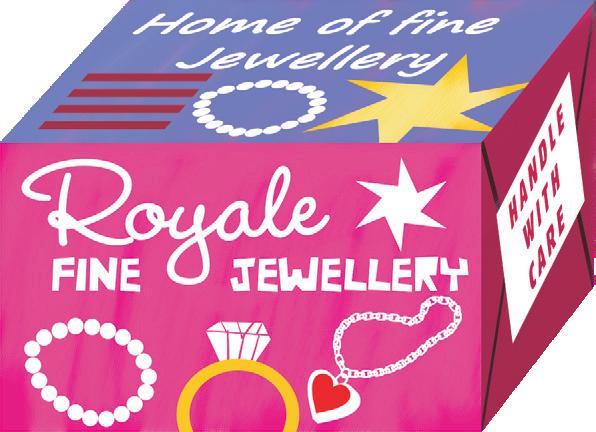

Oxford University Press 108 unit Visualises, sketches and constructs three-dimensional objects, including prisms and pyramids, making connections to two-dimensional representations CCT N
a b c 3 cm 3 cm 6 cm 5 cm 5 cm 5 cm 5 cm 5 cm
a b 7 8
9 6 cm 6 cm 10 cm 6 cm 6 cm 6 cm 6 cm 6 cm 6 cm 10 cm 5 cm 8 cm 5 cm 8 cm 5 cm 5 cm 5 cm 5 cm 5 cm 8 cm
3 cm 2 cm 3 cm 2 cm 2 cm 2 cm MP_NSW_SB5_38343_TXT_PPS_NG.indb 108 30-Aug-23 08:59:26
Triangles
DRAFT
A recent newspaper article said that children spend too much time playing games on their tablets. Stella told her teacher that the article was not correct and that children do other things on the tablet besides play games.
a Write some questions you could use in a survey to find out what other things children may do on a tablet, and to find out if Stella is correct.
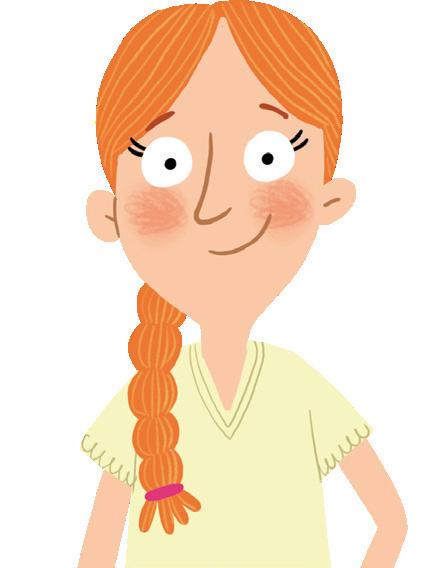
(i)
(ii)
(iii)
b Who should you interview for this survey?
c Make your own prediction about how children use tablets.
Games are only a small part of what kids can do on tablets.
how children use tablets.
Conduct your survey and record your data in the
Oxford University Press 109 unit Constructs graphs using many-to-one scales REASONING L 26
Data survey
Games Email Comment on your prediction after you have the survey results. Construct a column graph to record your data. How children use tablets Games Email 10 11 12 13
table to find out
MP_NSW_SB5_38343_TXT_PPS_NG.indb 109 30-Aug-23 08:59:26
DRAFT
Below is a set of rulers. Colour a section of each ruler to match the label.
one half
one quarter
one fifth
one eighth
one tenth
As you completed colouring each ruler, what did you notice about the fraction you coloured each time?
What effect does increasing the denominator have?
4 Solve the problems. Problem Answer
a Khan had forty-eight sheep but sold a quarter of them at the market. How many sheep did he sell?
b Sam had a stamp collection of 45 stamps. If she gave away one fifth of them, how many did she give away?
c Diya’s class has twenty-four children. If one eighth of the class has long hair, how many children have long hair?
d Yindi cooked one hundred cakes to sell at the fete. If she accidentally dropped one tenth of them, how many did she have left?
4 Grandad decided to share 36 of his old football cards with his four grandchildren. Tom received 1 4 of the set, Millie received 1 3 and Jessica received 1 6 . George received what was left.
a How many did Tom receive?
b How many did Millie receive?
c How many did Jessica receive?
d How many did George receive?
Oxford University Press 110 unit UNDERSTANDING L 27 Fractions of quantity and length Determines 1 2 , 1 4 , 1 5 and 1 10 of measures and quantities
4 5
a
b
c
d
e
1 2 3
MP_NSW_SB5_38343_TXT_PPS_NG.indb 110 30-Aug-23 08:59:27 DRAFT
Trading Cards ALBUM
QUESTION: ANSWER:
How do you find the average?
Averages are found by totalling the scores then dividing by the number of scores.
4 Find the averages of these numbers.
a 4, 5, 6, 7, 8 30
b 8, 10, 12, 14, 16

c 7, 9, 13, 11, 5
d 18, 6, 9, 15, 12
e 30, 10, 15, 25
f 40, 36, 32
g 12, 15, 18, 21, 24, 27, 30
Find the averages.
a What was the average time taken to run a race if Ryan took 11 seconds, Brooke took 9 seconds, Conrad took 10 seconds and Marcel 14 seconds?
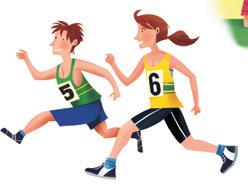
b Four types of gifts were for sale at the Mother’s Day stall, for $4, $6, $10 and $12. What was the average price of the gifts?
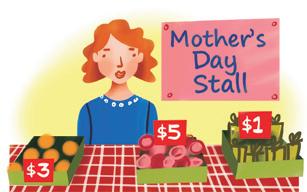
c There are five children in the Wong family. Work out the average age of the children if they are 15, 13, 13, 9 and 5.

d The temperature in our classroom at 10:00 am, Monday to Friday, last week, was 21°C, 22°C, 23°C, 20°C and 24°C. Work out the average daily temperature for that week.
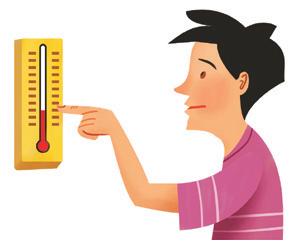
e What was the average amount of time Maya spent on her homework last week if her times were 10 minutes, 50 minutes, 20 minutes, 40 minutes and 30 minutes?
Write as many groups of numbers as you can that have an average of 10.

Oxford University Press 111 unit Selects and applies appropriate strategies to solve multiplication and division problems UNDERSTANDING L CCT Division/averages
Numbers Total of scores Number of scores Average
5 6
6 7
8 The average age of the children in our family is 10. (8 + 10 + 12) ÷ 3 = 10
27 MP_NSW_SB5_38343_TXT_PPS_NG.indb 111 30-Aug-23 08:59:28
DRAFT
27 Cubic centimetres and millilitres
A small unit for measuring capacity is the millilitre 1000 mL = 1 L
Estimate and measure the capacity of each of these small vessels in millilitres (mL). (You may need a medicine glass and a 1 mL eye dropper.)
a tablespoon
b tea cup
c screwcap
d mug
Estimate: Estimate: Estimate: Estimate:
Capacity: Capacity: Capacity: Capacity:
Does 1 cubic centimetre displace one millilitre of water? Conduct this experiment to see.
Use a measuring glass filled to 30 mL to measure the water displaced by cubic centimetres (centicubes). Colour the new water levels on each measuring glass below.
d Did you notice any relationship between the cubic centimetres and the water displaced by them?
e What is it?
How many centicubes (cm3) would be needed to displace 100 mL?
Oxford University Press 112 unit
a b c 10 mL 20 mL 30 mL 40 mL 50 mL 10 mL 20 mL 30 mL 40 mL 50 mL 10 mL 20 mL 30 mL 40 mL 50 mL 5 cm3 (5 centicubes) 10 cm3 (10 centicubes) 15 cm3 (15 centicubes)
9
11
10
Selects and uses the appropriate unit to estimate, measure and calculate volumes and capacities REASONING CCT N
MP_NSW_SB5_38343_TXT_PPS_NG.indb 112 30-Aug-23 08:59:28
DRAFT
Which measurement in the advertisements is easier to understand?

49 950 square metre farm for sale.
Large areas of land can be measured in hectares.
1 hectare = 10 000 m2
Two soccer fields with a large space between them are about 1 hectare. The symbol for hectare is ha. A square metre can be any shape, and so can a hectare.
50 hectare farm for sale.
Is your school less than a hectare, about a hectare or more than a hectare?
a Use suitable measuring instruments to mark a hectare within your school.
b Place markers at the corners so that it is roughly the shape of a rectangle or square.
c Use a calculator to make your calculations.

m × m = m2
d Tick the correct box.
My school is about one hectare.
My school is less than one hectare.
My school is more than one hectare.
Circle the pictures that represent areas of one hectare or more. (Pictures are not drawn to scale.)
Oxford University Press 113 unit Selects and uses the appropriate unit to calculate areas, including areas of rectangles COMMUNICATING, REASONING N CCT Hectares 27
Length
Width Area
12
13 14
ZOO Bakery a c e SOUTHSIDE SHOPPING CENTRE b d soccer field large mall pool zoo shop MP_NSW_SB5_38343_TXT_PPS_NG.indb 113 30-Aug-23 08:59:29
DRAFT
Find the answers.
m Mr Brown planted 381 seeds in 3 boxes. How many seeds were in each box? seeds PART
Record the value of the bold digits.
Find the answers. a
Add these fractions. g
Add the fractions to get an improper fraction, then convert it to a mixed numeral.
Write each decimal as a fraction. a 0.765 =
Round each decimal to the nearest whole number. e 8.7
Continue the number patterns.
3
Oxford University Press 114 Diagnostic review 3
PART
d 1 4
e 1 6
f 1 5
1 10 of 20 =
of 40 = b 1 5 of 80 =
of 36 = c 1 2 of 100 =
of 20 =
1 6
6
i 7 10 + 8
3 6
6
j 9 10
+ 3
=
10 = h
+ 5
=
+ 7 10 =
4 5 + 3 5 = = l 7 8 + 3 8 = =
8 10 + 7 10 = = n 5 6 + 4 6 = = PART
k
m
c
0.985 = b 0.072 = d 0.007 =
h
784.295
f 14.4 i 4567.501
PART
g 18.1
a 3 10 5 10 7 10 1 1 10 b 0.76 0.71 0.66 c 1 1 10 1 3 10 1 5 10 4 o 5 10 + 6 10 + 3 10 = = p 5 8 + 5 8 + 5 8 = = q 4 5 + 3 5 + 2 5 = = r 7 10 + 8 10 + 6 10 = = 5 6 PART
a 3 5 7 9 b 3 6 7 0 7 + 2 3 1 6 + 5 6 4 7 c 3 5 7 8 9 d 6 7 8 9 0 8 8 0 9 6 9 5 3 PART
the
a 2 3 7 4 b 1 5 6 5 c 2 2 3 8 × 5 × 3 × 4 d 1 4 7 e 3 6 f 4 7 × 6 0 × 2 5 × 3 6 g 4 1 7 6 h 3 1 7 4 i 5 2 7 5 j 6 2 5 8 k 8 9 0 4 l 10 6 4 3
Calculate
answer to each algorithm.
a
c 28.2
d 3674.6 1 2 3 MP_NSW_SB5_38343_TXT_PPS_NG.indb 114 30-Aug-23 08:59:29 DRAFT
37.56 b 359.76
79
Colour the new water level on the measuring glass to show how many millilitres of water would be displaced if a model with a volume of 10 cm3 was put in the measuring glass.
Write how many kilograms in each of these.
a 1 t = kg c 1.25 t = kg
b 1.5 t = kg d 2.75 t = kg
a If you caught the bus at 1255 hours from Boogie St, when would you arrive at Lion St?
b If you caught the bus at 1107 hours from Rap St, when would you arrive at Rock St?
40 children were surveyed about their favourite takeaway food.
a About how many liked hamburgers?
b Do
pies than like chips?
Oxford University Press 115 Diagnostic review 3 PART 0 2 3 4 5 1 1 2 3 4 5 6 7 8 9 Lake Point Clare Hillsdale Waverley Richmond Give coordinate points for: a Richmond b Hillsdale c Waverley d Lake PART
the model that belongs to the three views. top front side front front front PART Measure the angles in these triangles. A B C D E F a Angle A d Angle D b Angle B e Angle E c Angle C f Angle F 7 8 9 PART
Circle
10 mL 20 mL 30 mL 40 mL 50 mL
PART
PART Bus timetable Boogie St 1100 hours 1205 hours 1255 hours Rap St 1107 hours 1215 hours 1302 hours Hip Hop St 1113 hours 1221 hours 1308 hours Rock St 1120 hours 1228 hours 1315 hours Lion St 1125 hours 1233 hours 1320 hours
PART
Hamburgers Chickens Pies Chips
Takeaway food
10 cubic centimetres 10 cm3 (10 centicubes) 11 12 13 a b c MP_NSW_SB5_38343_TXT_PPS_NG.indb 115 30-Aug-23 08:59:30
more like
DRAFT
When we talk about large amounts of money, we often put the letter K after the amount. The K stands for thousands, e.g. $36K = $36 000.
Write these amounts in full.
Write an estimate for the total cost of each purchase in the coloured box before calculating the exact amount. Each estimate must be in complete thousands and use the K.
a How much for 6 bracelets? b How much for 5 cars? c How much for 7 diamond rings? d How much for 8 laptops?
Oxford University Press 116 unit REASONING L N Selects and applies appropriate strategies to solve multiplication and division problems 4-digit multiplication 28
multiplications. a 13 32 254 b 2878 c 5343 d 5362 e 4976 × 6 × 5 × 6 × 7 × 9 19524 f 6235 g 7458 h 6319 i 2178 j 3078 × 2 × 8 × 5 × 4 × 3 k 6259 l 7968 m 3597 n 2876 o 8767 × 9 × 7 × 8 × 2 × 7
Complete the
$7K $ d $54K $ g $234K $ b $12K $ e $63K $ h $356K $ c $23K $ f $412K $ i $1234K
a
$
SALE $7986 SALE $4079 BARGAIN $8109 SUPER $2987
Estimate $ Estimate $ Estimate $ Estimate $ 1 2 3
MP_NSW_SB5_38343_TXT_PPS_NG.indb 116 30-Aug-23 08:59:30
DRAFT
Complete these algorithms.
Supply the missing numbers to complete the additions.
Calculate the total cost for the purchase of the vehicles described below.




SUV Purple hatch Mini-bus Red hatch
Vehicles purchased Working
a Goode Real Estate bought the mini-bus and the SUV to transport their customers to look at houses for sale.
b Pete’s Pizza bought the purple hatch and the red hatch cars because they thought customers wanted their pizzas delivered in new cars.
c Ocean Tours bought the SUV and the mini-bus to take tourists on trips, and the purple hatch for the office manager.
d Helen’s Hire Cars bought the SUV, the purple hatch and the red hatch because they are the most popular cars that people hire.

Oxford University Press 117 unit COMMUNICATING, PROBLEM SOLVING L N CCT 6-digit addition 28 Selects and applies appropriate strategies to solve addition and subtraction problems
a 5 2 3 4 b 2 4 0 2 3 c 3 1 3 d 2 7 2 9 4 e 3 3 4 6 2 7 2 4 2 1 3 3 0 2 1 4 4 0 3 2 2 7 1 2 3 + 1 4 0 2 5 + 3 4 4 7 1 + 2 8 1 3 2 + 2 2 2 1 + 3 1 2 7 8 7 8 8 7 9 2 6 7 4 7 9 4 8 8 2 4 0 6
5 6 One company spent $47 443. $35 299 $19 555 $56 999 $27 888
a 2 3 4 5 7 2 b 4 6 3 6 8 7 c 2 9 5 4 2 6 d 3 8 4 9 8 3 + 2 4 3 3 8 1 + 2 3 4 2 9 1 + 2 0 3 7 5 2 + 4 1 2 8 1 1 e 3 4 7 5 4 6 f 2 5 8 4 3 8 g 3 8 7 7 7 6 h 4 7 8 7 8 7 + 2 4 8 8 2 7 + 3 1 2 0 8 5 + 2 4 1 9 2 9 + 3 5 2 0 8 9 4 MP_NSW_SB5_38343_TXT_PPS_NG.indb 117 30-Aug-23 08:59:31
DRAFT
Savings spreadsheet

Complete this spreadsheet. The C column has the calculations listed and has been widened to allow for your answers.
8
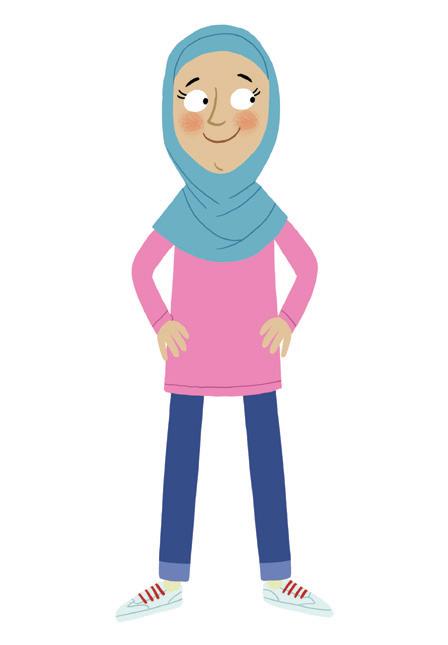
Add these items to the Bombers spreadsheet.
a Item 8. On 28 September the club bought helmets for $250.00.
b Item 9. On 11 November the club bought trophies for $178.00.
c Item 10. On 12 November the club spent $40.00 on oranges.
d Item 11. On 15 November the club spent $55.50 on stationery.
Oxford University Press 118 unit
A B C 1 Date Deposit Subtotal 2 31 Jan $319.50 (= B2) $319.50 3 28 Feb $116.30 (= C2 + B3) 435.80 4 31 Mar $121.40 (= C3 + B4) 5 30 Apr $213.70 (= C4 + B5) 6 31 May $118.05 (= C5 + B6) 7 30 June $214.90 (= C6 + B7) 8 31 July $325.50 (= C7 + B8) 9 31 Aug $124.50 (= C8 + B9)
Baseball Club expenses A B C D 1 Date Item Cost Balance 2 1 Aug Opening $3250.00 3 5 Aug Registrations $1350.00 (= D2 C3) $1900.00 4 27 Aug Mitts $275.00 (= D3 C4) $1625.00 5 1 Sep Bags $87.00 (= D4 C5) $1538.00 6 5 Sep Bats $723.00 (= D5 C6) $815.00 7 27 Sep Balls $257.00 (= D6 C7) $558.00 8 (= D7 C8) 9 (= D8 C9) 10 (= D9 C10) 11 (= D10 C11)
Bombers
7
$ 3 1 9 . 5 0 + $ 1 1 6 3 0 $ 4 3 5 . 8 0 $ 3 2 5 0 $ 1 3 5 0 $ 1 9 0 0 Spreadsheets are used to organise, display and calculate. Spreadsheets on computers calculate at great speed. COMMUNICATING, PROBLEM SOLVING N DL CCT Interprets data displays, including timelines and line graphs Spreadsheet data 28 MP_NSW_SB5_38343_TXT_PPS_NG.indb 118 30-Aug-23 08:59:32
DRAFT
Complete the map.
a Use the marks on the map to draw vertical and horizontal lines to make a coordinate grid.
b Complete the labelling of the coordinates.
c Draw a shade area by joining the coordinate points (3,3), (7,3) and (3,7).
d Draw the school hall by joining the coordinates (12,5), (12,6), (11,6), (11,7), (12,7), (12,8), (16,8) and (16,5).
e Draw in the toilets by joining the coordinates (12,1), (12,2), (16,2) and (16,1).
f Find a place for the canteen, draw it on the map and list its coordinate points.
g Draw any object you like on the map and give its coordinate points.
What can be found at these coordinate points?
a (2,2)
b (8,9)
Give a set of coordinate points for:
a Class 5S
9 10 11 12
b The office
c (1,5) d (4,4)
9 If the school’s office is 9 m long, make up a suitable scale for the map.
Scale: 1 cm =
Oxford University Press 119 unit Locates and describes points on a coordinate plane REASONING, COMMUNICATING CCT 28 Coordinates/making a map
Class
c Class KP d
2L
Hilltop Primary 6B 6W 5S 5T 4R 4Z 3P 3S KR KP IS IR 2T 2L 1 2 3 4 1 2 3 4 OFFICE
MP_NSW_SB5_38343_TXT_PPS_NG.indb 119 30-Aug-23 08:59:32 DRAFT
Adding and subtracting decimals 29
Remember, always keep the decimal points in a vertical, straight line.
Add or subtract the decimals.
Complete the balance column, which shows the amount Sally has banked this year.
Calculate the shortest distance between:
Oxford University Press 120 unit PROBLEM SOLVING N Compares and orders decimals up to 3 decimal places
a 3.57 b 16.74 c 26.47 d 37.44 e 13.60 + 1.21 + 32.16 + 42.66 + 17.82 + 25.76 f 26.35 g 34.56 h 265.8 0 i 387.34 j 39.21 23.14 12.37 223.06 2.57 13.86
Date Deposit Balance Jan 31 $19.50 $19.50 Feb 29 $16.30 $35.80 a Mar 31 $21.40 b Apr 30 $13.70 Docker Cat Saint Crow Bulldog Lion Eagle 16.54 km 44.52 km 17.36 km 11.47km 24.07 km 11.06 km 21.39 km
a Lion and Cat 4 4 . 5 2 km + 1 7 . 3 6 km 6 1 . 8 8 km b Lion and Bulldog c Crow and Saint d Cat and Bulldog e Docker and Saint f Docker and Eagle g Crow and Lion h Bulldog and Saint 1 2 3
MP_NSW_SB5_38343_TXT_PPS_NG.indb 120 30-Aug-23 08:59:32 DRAFT
Calculate the cost of the individual items in the boxes. You will need a calculator.
You may need a calculator for this exercise.
a Cost of a pair of socks?
c Cost of a soccer book?
b Cost of a stapler?
d Cost of a pencil set?
The Good Fit Shoe Shop recently ordered several shoes for its store. Complete the ‘Cost’ column on the order form.
You may need a calculator for this exercise.
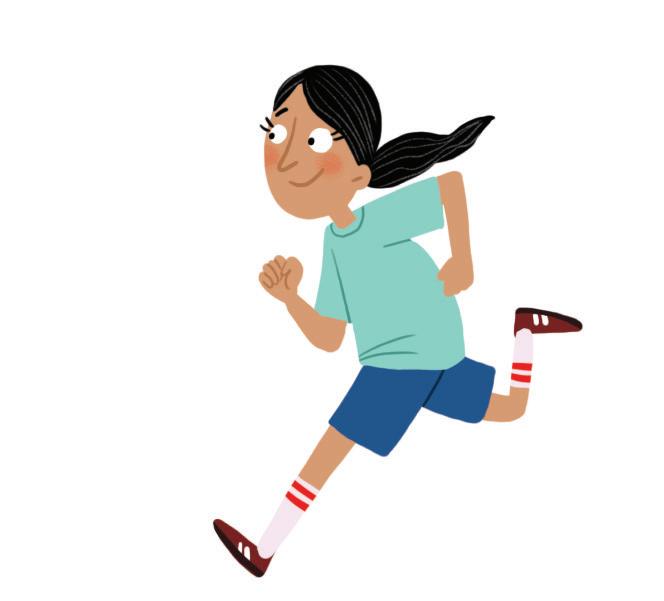
DRAFT
The
Play the ‘Zero in Five’ game. You have a maximum of five moves to turn the numbers into zero. You can only use one digit at a time (digits 1–9). You can use any operation. One has been done for you.
Oxford University Press 121 unit REASONING N Selects and applies appropriate strategies to solve multiplication and division problems 29
$89 Bootz $78 Sportz $65 Ozees $59 Sprintz
Shoe style Price per pair Quantity Cost a Bootz $89.00 35 $ b Sportz $78.00 64 $ c Sprintz $59.00 73 $ d Ozees $65.00 54 $ e Total cost $ 4 5
Sprintz
are the most popular!
185 ÷ 5 = 37 + 3 = 40 ÷ 8 = 5 5 = 0 a 168 = = = = = b 460 = = = = = c 373 = = = = = 6 Box of 40 $182.00 $137.50 Box of 25 Soccer Box of 50 $237.50 $121.60 Box of 64 pairs Calculator division and multiplication MP_NSW_SB5_38343_TXT_PPS_NG.indb 121 30-Aug-23 08:59:32
Finding all possible combinations
A witness remembers seeing a car speed away from a bank robbery. She remembers the two letters that were on the car’s number plate (TR), and the three numbers (1 2 3), but not the order they were in.
a Predict how many possible number plates can be made from the combinations of the three numbers.
b Write in the box all possible combinations of the three numbers. It has been started for you.
TR-132
Shaking hands
At the end of a doubles tennis match, each player shook hands with every other player. How many handshakes took place?
Complete the tree diagram to show all the possible combinations when the spinner is spun three times.
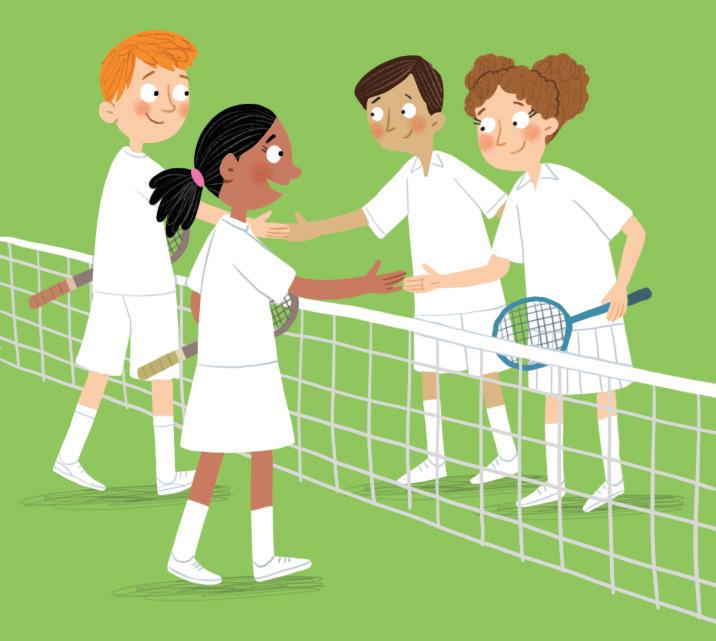
Oxford University Press 122 unit PROBLEM SOLVING, REASONING N L Conducts chance experiments and quantifies the probability
outcomes 29
Chance/all possible
R, R,
R,
Outcome 1st spin 2nd spin 3rd spin 7 8 9 TR??? MP_NSW_SB5_38343_TXT_PPS_NG.indb 122 30-Aug-23 08:59:33
R
R, B
DRAFT
Draw a line to match each object to its net.
A box is displayed and another identical box has been pulled apart to show the net.
a Colour the top view on the net yellow.
b Colour the front view on the net red.
c Colour the side view on the net blue (be careful). Top
Mr Singh makes cube puzzles for children. Study the net to answer the questions.
a If B was the base, what letter would be on the top?
b If A was the front face, what letter would be on the back face?
Mr Singh’s cube
c What letter do you think is on the opposite side to E?
Visualises, sketches and constructs three-dimensional objects, including prisms and pyramids, making connections to two-dimensional representations
Oxford University Press 123 unit N L CCT
29 Nets
a
d
b c
e f
Side Front Base
10 11 12
MP_NSW_SB5_38343_TXT_PPS_NG.indb 123 30-Aug-23 08:59:33 DRAFT
6-digit subtraction 30
Complete these subtractions.
Solve these problems.
a Jaya had an amount of $4773 in the bank but spent $2765 at the travel agency. How much does she have left?
b Tony left Sydney on a trip to the USA of 11 920 km. How far does he still need to travel if he has already covered 6577 km?
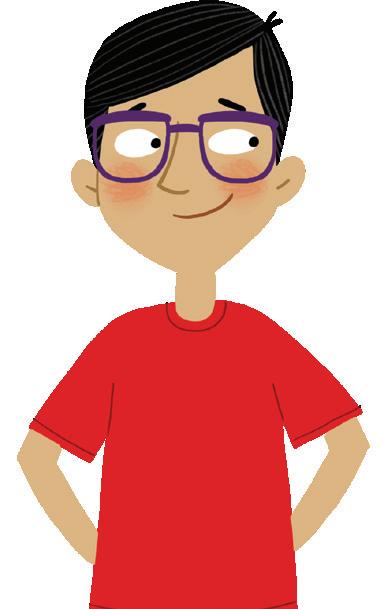
c Tina’s new car cost $27 834. If she was given a trade-in for her old car of $12 477, how much more money does she need?
d There were 18 654 spectators at the football match. If 11 076 of them were adults, how many were children?
Complete the spreadsheet for the Dolphins Soccer Club. It has been started for you.
Spreadsheets organise and calculate data.
Oxford University Press 124 unit Selects and applies appropriate strategies to solve addition and subtraction problems
a 765427 b 691715 c 750856 d 882703 e 916840 7193 172462 247290 527532 7490 f 760205 g 893411 h 872400 i 735723 j 184122 654819 547584 3431 25859 36543 k $4724.97 l $2263.75 m $3769.26 n $8346.74 1463.67 183.05 1673.43 283.25
A B C D 1 Date Item Cost Balance 2 May 3 Opening $987.90 3 May 7 Balls $126.00 (D2-C3) $861.90 4 May 9 Shirts $120.32 (D3-C4) 5 May 12 Shorts $144.22 (D4-C5) 6 May 18 Socks $35.28 (D5-C6) 7 May 22 Pads $34.65 (D6-C7) 1 2 3
PROBLEM SOLVING N MP_NSW_SB5_38343_TXT_PPS_NG.indb 124 30-Aug-23 08:59:34
DRAFT
Factors are whole numbers that are multiplied with another number to make a new number, e.g. the factors of 20 are 1, 2, 4, 5, 10 and 20.
4
List all the factors of these numbers.
a 24 f 36
b 15 g 42
c 21 h 45
d 25 i 32
e 28 j 51

Knowing the factors of a number may help when multiplying, e.g. 25 × 12 = . 25 × 12 becomes 25 × 3 = 75 then 75 × 4 = 300, so 25 × 12 = 300.
3 × 4 factors
Break the multiplier into factors to help complete these multiplications.
Strategy
a 12 × 15 12 × 15 becomes 12 × 3 = then × 5 =
b 15 × 12 15 × 12 becomes 15 × = then × =
c 14 × 18 14 × 18 becomes 14 × = then × =
d 17 × 16 17 × 16 becomes 17 × = then × =
e 25 × 20 25 × 20 becomes 25 × = then × =
Answer
There are 48 people at a party. List four ways they could be evenly seated at tables.
Oxford University Press 125 unit
5 3
5
×
Selects and applies appropriate strategies to solve multiplication and division problems UNDERSTANDING, REASONING N Factorising/partitioning 30 MP_NSW_SB5_38343_TXT_PPS_NG.indb 125 30-Aug-23 08:59:34
6
DRAFT
Choosing length units 30
Shade the boxes with the suggested colours to select the most appropriate unit of length to measure each of the following.
a The length of a sultana packet
b The length of a calculator
c The thickness of a mobile phone
d The length of a grasshopper
e The length of a pool
f The width of your home
g The length of a fingernail
h The length of the Hume Highway
Choose an appropriate measuring device from the ones given to measure each of the following.
a The length of a pencil
b The length of a room
c The circumference of a bin
d The length of the playground
e The circumference of a bottle
f The perimeter of a large curved garden
g The distance between two towns
h The perimeter of a book
i The perimeter of your school
Convert these measurements to the length unit given.
Use the 5 mm dot paper to design:
Oxford University Press 126 unit COMMUNICATING, PROBLEM SOLVING L Selects and uses the appropriate unit and device to measure lengths and distances including perimeters
cm m km
mm
Length Device
a 5 cm = mm f 8 m = cm k 2000 m = km b 26 cm = mm g 9 m = cm l 6000 m = km c 37 cm = mm h 5 1 2 m = cm m 4000 m = km d 30 mm = cm i 200 cm = m n 6 km = m e 60 mm = cm j 700 cm = m o 8 1 2 m = cm
a a rectangle with a perimeter of 140 mm b a rectangle with a perimeter of 110 mm 7 8 9 10 1 m trundle wheel 1 m ruler Tape measure 30 cm ruler 1 10 12 13 Odometer MP_NSW_SB5_38343_TXT_PPS_NG.indb 126 30-Aug-23 08:59:34
DRAFT
30 Triangles
A triangle is a 3-sided shape with 3 angles. The total of all angles is always 180°. There are 4 main types of triangles: equilateral, isosceles, scalene and right-angle triangles.
Study the 4 types of triangles given, then answer the questions.
Equilateral triangle
Scalene triangle
a Which triangle has all sides of equal length?
b Which triangle has two sides of equal length?
c Which triangle contains a right angle?
d Which triangle has all angles the same size?
Isosceles triangle
Right-angle triangle
Make a right-angle triangle by enlarging the one below on the expanded dot paper.
Use the dot paper to show how a scalene triangle can also be a right-angle triangle.
Sketch some isosceles triangles.
Oxford University Press 127 unit
11 12 13
14
PROBLEM SOLVING L N Investigates and classifies two-dimensional shapes, including triangles and quadrilaterals, based on their properties
UNDERSTANDING,
MP_NSW_SB5_38343_TXT_PPS_NG.indb 127 30-Aug-23 08:59:35
DRAFT
Juan and Sammy are in charge of organising the school formal. Juan doesn’t want to compromise on the food, drinks and venue. Sammy wants to dance all night so the main thing that she wants is great entertainment.
The principal told them that they must come up with the best budget available for under $30.00 per student. Each budget must include bus hire, venue, meals, drinks and entertainment.
Create a budget for Juan and Sammy for the school formal.
DRAFT
What is the best value you can get when buying soap? Why?
What is the best value you can get when purchasing juice? Why?
Oxford University Press 128 unit Selects and applies appropriate strategies to solve addition and subtraction problems Financial plan/budget 31 Best value $6.00 $3.20 $0.65 $2.50 SOAP 10 PACK $0.50 JUICE 250 mL $2.70 Orange Juice 6x 25o ml JUICE ORANGE 2 L
2 3 Prices per student for
Bus hire Venue hire Meals Drinks Entertainment Local bus $2.00 School Hall $2.50 Main meal only $9.50 Water only $2.50 Recorded music $1.50 Millers coach $4.00 YMCA Hall $3.50 2-course meal $12.50 Soft drinks $3.50 Sammy X the DJ $8.50 Super coach $5.00 The Club $4.50 3-course meal $14.50 Juice $4.50 Cool band $10.50
school formal
a Juan’s budget b Sammy’s budget Item Price Item Price Bus $ Bus $ Venue $ Venue $ Meals $ Meals $ Drinks $ Drinks $ Entertainment $ Entertainment $ TOTAL $ TOTAL $ 1 COMMUNICATING, REASONING N CCT MP_NSW_SB5_38343_TXT_PPS_NG.indb 128 30-Aug-23 08:59:35
5
Use multiplication to check these divisions. Use the box to tick the correct answers and write the correct answer for those that you think are incorrect.
Use an inverse operation, such as multiplication, to check these statements. Answer by stating true or false.
a 50 ÷ 10 must be more than 3
b 60 ÷ 5 is less than 15
c 100 ÷ 4 is greater than 20
d 80 ÷ 4 must be more than 25
e 100 ÷ 5 is less than 15
f 160 ÷ 4 is more than 50
g 200 ÷ 5 is more than 30
h 250 ÷ 5 is more than 45
i 500 ÷ 3 is more than 120
j 800 ÷ 5 is less than 120
k 1000 ÷ 5 is more than 250
l 900 ÷ 6 is more than 130
m 1500 ÷ 5 is more than 30
n 2000 ÷ 4 must be more than 50
o 2400 ÷ 6 must be more than 50
Check the answers to these division questions using multiplication. The first one is done for you.
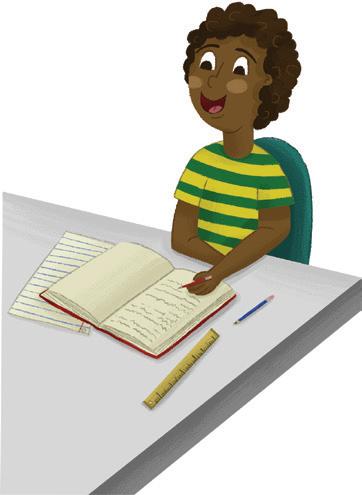
Estimate an answer to each problem by rounding the larger number.
a 58 sheep were shared among 3 paddocks. Estimate how many sheep per paddock.
b $789 was shared among 4 people. Estimate each person’s share. $
c 309 books were shared among 10 shelves. Estimate the number of books per shelf.
d $3987 was shared among 8 people. Estimate each person’s share. $
Oxford University Press 129 unit Constructs and completes number sentences involving multiplicative relations, applying the order of operations to calculations 31 Inverse operations REASONING, COMMUNICATING N CCT
a 12 ÷ 4 = 3 e 24 ÷ 6 = 4 i 36 ÷ 4 = 8 m 45 ÷ 9 = 3 b 20 ÷ 4 = 4 f 28 ÷ 7 = 3 j 36 ÷ 6 = 5 n 42 ÷ 7 = 6 c 20 ÷ 5 = 4 g 32 ÷ 4 = 8 k 40 ÷ 5 = 8 o 48 ÷ 8 = 6 d 24 ÷ 4 = 4 h 27 ÷ 9 = 3 l 21 ÷ 3 = 7 p 48 ÷ 3 = 12
4
a b c d e 14 4 56 ✔ 13 6 78 123 3 369 144 6 864 131 7 917 1 4 × 4 5 6 × × × ×
6 7 30 ÷ 5 = 6 300 ÷ 5 = 60 MP_NSW_SB5_38343_TXT_PPS_NG.indb 129 30-Aug-23 08:59:36
DRAFT
Area of a triangle 31
The area of a triangle can be found by drawing a rectangle around it. The area of the triangle is half the area of the rectangle. Rectangle 8 cm2. Triangle 4 cm2
Calculate the area of the triangles below.
Enclose the triangles in rectangles, then calculate their areas.
130
Investigates and classifies two-dimensional shapes, including triangles and quadrilaterals, based on their properties Combines, splits and rearranges shapes to determine the area of parallelograms and triangles

Oxford University Press
unit
cm2 cm2 cm2 cm2 cm2 cm2 cm2 cm2 cm2 a b c d e h f g i
cm2 cm2 cm2 a b c d cm2 8 9
A = 4 cm2 2 cm 4 cm UNDERSTANDING, PROBLEM SOLVING MP_NSW_SB5_38343_TXT_PPS_NG.indb 130 30-Aug-23 08:59:36 DRAFT
10 11
Square kilometres
31
Areas of land larger than a hectare can be measured in square kilometres (km2), e.g. 100 ha equals 1 km2, or a square 1000 m × 1000 m = 1 km2.
List the states and territories in order of size (largest first) and then use a calculator to work out the total area of Australia.
12
Use the scale to mark an area of 1 km2 on the street directory page.
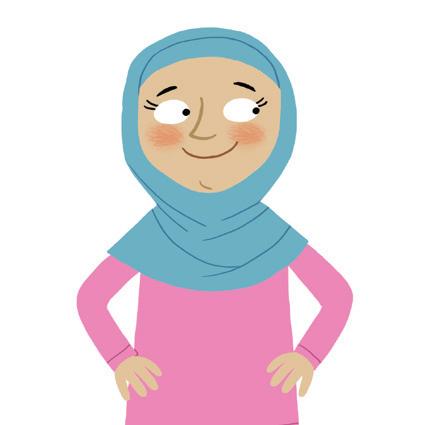
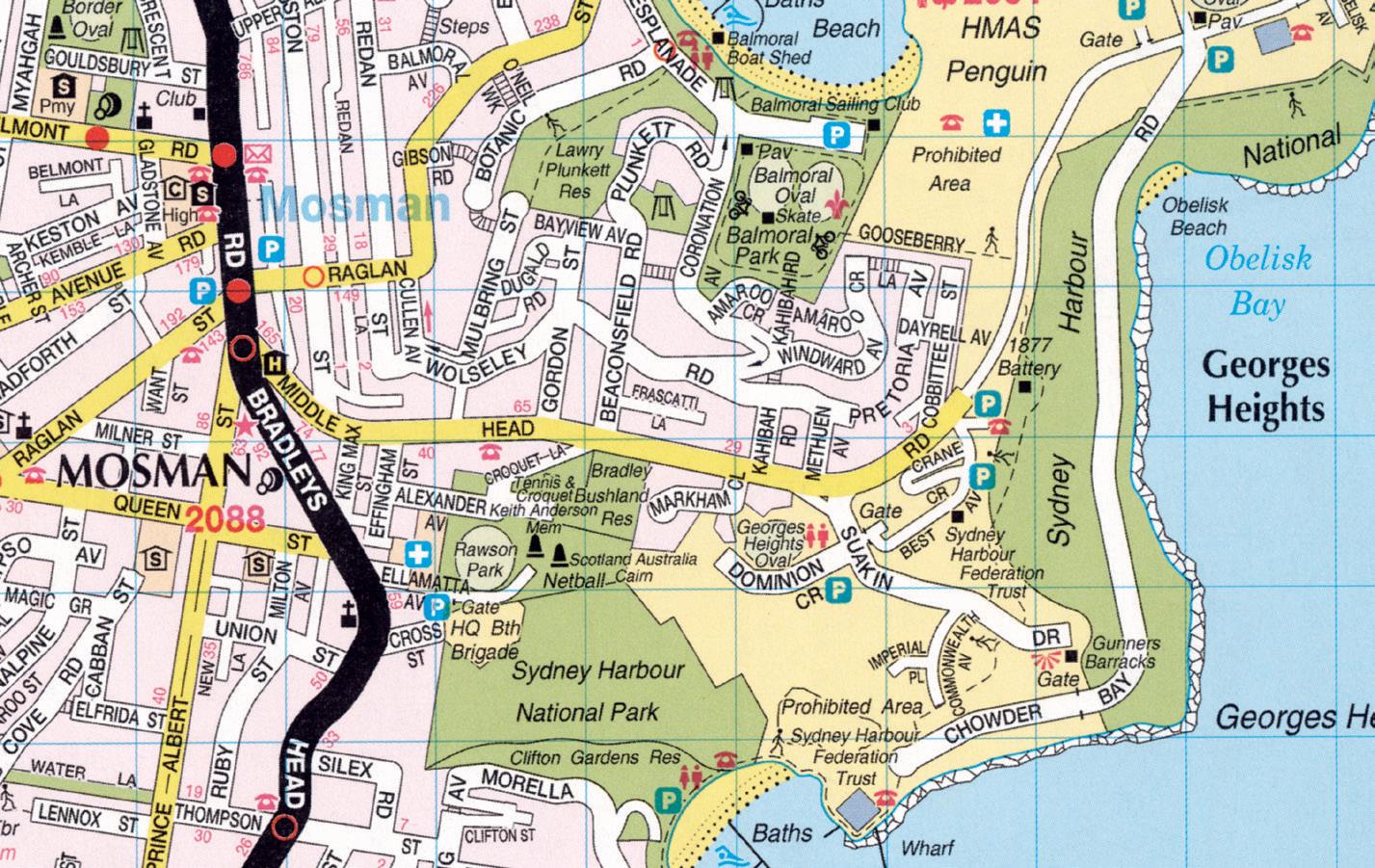
Scale 1 cm = 200 m
DRAFT
Source: Gregory’s 1998 Street Directory, 62nd edition, page 317. Copyright © Universal Press Ltd 1998. Reproduced with permission.
Would you use square metres (m2), hectares (ha) or square kilometres (km2) to measure these areas?
a cricket oval d Wollongong
b tennis court e golf course
c Royal National Park
f soccer field
g Old McDonald’s Farm
h your school
MP_NSW_SB5_38343_TXT_PPS_NG.indb 131 30-Aug-23 08:59:37
Oxford University Press 131 unit Selects and uses the appropriate unit to calculate areas, including areas of rectangles
2 525 500 km2 1 346 200 km2 1 727 200 km2 984 000 km2 801 600 km2 2000 km2 227 600 km2 67 800 km2 State/Territory Area in km2 Total
i Canberra N CCT
So, a 5 cm line would represent a distance of 1 km.
Multiplication methods
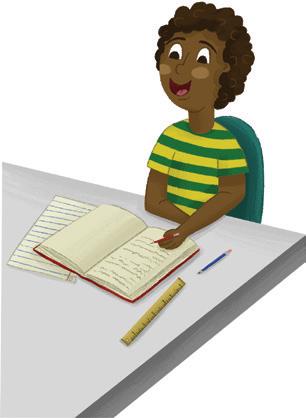
Mentally calculate the answers to these multiplications.
Complete these multiplications using any method you choose.
Multiply these numbers by a multiple of 10.
Multiply these numbers.
Solve these mentally by multiplying the hundreds, tens and ones separately, then adding them.
Oxford University Press 132 unit Selects and applies appropriate strategies to solve multiplication and division problems
PROBLEM SOLVING N
32
a 7 × 4 = f 20 × 20
k 24 × 3
b 3 × 30 = g 20 × 30 = l 25 × 5 = c 4 × 40 = h 30 × 30 = m 27 × 6 = d 5 × 60 = i 30 × 40 = n 28 × 8 = e 7 × 70 = j 50 × 60 = o 39 × 4 =
=
=
a 242 b 235 c 126 d 325 e 218 × 4 × 5 × 6 × 4 × 7 f 135 g 246 h 428 i 315 j 247 × 4 × 5 × 6 × 8 × 3
a 123 b 425 c 360 d 273 e 574 × 30 × 40 × 50 × 60 × 70
a 25 b 47 c 185 d 267 e 374 × 25 × 36 × 44 × 56 × 68
a 235 × 6 b 326 × 5 c 254 × 7 1 2 3 4 5 23 × 4 = ? Think 20 × 4 plus 3 × 4. MP_NSW_SB5_38343_TXT_PPS_NG.indb 132 30-Aug-23 08:59:37 DRAFT
Rounding for estimation
Round each number to the nearest 100. Remember numbers ending in 50 are rounded up.
=
Round each number to the nearest 1000. Remember numbers ending in 500 are rounded up.
Round each number to the nearest 1 000 000. Remember numbers ending in 500 000 are rounded up.
DRAFT
Over the year, Bill ordered the following items from his supplier. Estimate how much he spent by rounding each item to the nearest $100.
a Two tennis racquets and a set of headphones. $
b Four phones and a tennis racquet. $
c A table and a guitar. $
d A guitar and four sets of headphones. $
e Three tennis racquets and a table. $
f Two guitars and two phones. $
List three different ways you could spend between $1600 and $1700.
Oxford University Press 133 unit Applies an understanding of place value and the role of zero to represent the properties of numbers 32
a 96
d 307
g 427
j 1701 = m 4450 = b 111 = e
h 599 = k 2909 = n 5990 = c 137 = f 369 = i 625 = l 3350 = o 6891 =
=
=
341 =
a 960 = d 3230 = g 13 074 = j 127 500 = b 740 = e 5690 = h 26 099 = k 129 701 = c 1212 = f 2748 = i 37 259 = l 155 026 =
a 1 987 376 = c 4 395 123 = e 7 500 000 = b 3 026 107 = d 5 779 987 = f 9 079 678 = 6 7 8
9
$95 $117 $213 $389 $795 11:30 REASONING N L MP_NSW_SB5_38343_TXT_PPS_NG.indb 133 30-Aug-23 08:59:38
10
9 Stopwatches are used to accurately measure periods of time. Minutes Seconds Hundredths of a second
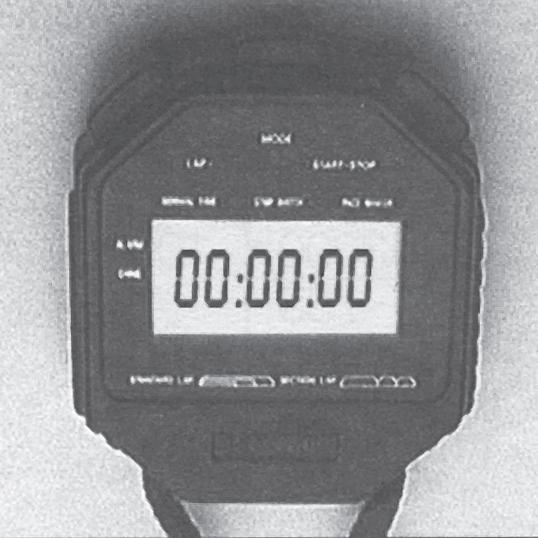
11
That is, 5 minutes 28 seconds and 64 100 of a second. Use a stopwatch to record how long it takes to perform these activities. Before performing the activity, make an estimate of the time it will take.
a Wash your hands
b Pack your bag
c Write your name
d Read a page
e Count to 100
f Walk 10 metres
g Walk to the canteen
h Do 10 push-ups
12
9 Estimating intervals
Try to judge how long an interval of time lasts. When you think the time is up, call out “stop” to your partner who has been timing you with a stopwatch or a watch with a second hand function. Next, record the reading on the stopwatch and see how close your estimation is.
Time Stopwatch reading
a 10 seconds
b 20 seconds
c 30 seconds
d 40 seconds
e 1 minute
9 Choose a time unit from the box to measure the length of time taken to: seconds hours months minutes days years

13
a play a soccer game
b put a belt on
c attend a school camp
d sneeze
e write a short paragraph
f build a house

Oxford University Press 134 unit Measures and compares duration, using 12- and 24-hour time and am and pm notation 32
Activity Estimated time Actual time
Duration REASONING L MP_NSW_SB5_38343_TXT_PPS_NG.indb 134 30-Aug-23 08:59:38
It took me 6 seconds to tie my shoelace.
DRAFT
Put a cross on the following locations.
a Chadwick Cr (D,5) g Evans St (L,9)
b Ferngrove Rd (D,1) h Hamilton Rd (E,8)
c Thorney Rd (F,5) i Gurney Cr (A,7)
d The Boulevarde (M,3)
e Throsby St (N,8)
f Lombard St (K,6)
Use the legend to answer the questions.
a Is there a church near (M,8)?
b Is there a toilet facility near (J,3)?
c Is there a school near (A,1)?
d Is Thorney Road a main road?
e How many parking stations are on the map?
Write a clear set of directions to describe how to get from Greenvale St (F,7) to Delamere St (O,1).
Draw a path to show how to get from Edward Pl (C,1) to Hubert St (P,4).

Use the scale to calculate the approximate length of these streets to the nearest 100 m.
a Thorney Rd (F,5)
b Margaret St (K,4)
c Linda St (K,7)
d Eliza St (O,9)
Scale 1 cm = 200 m
Oxford University Press 135 unit Locates and describes points on a coordinate plane 32
14 16 17 18 Source: Gregory’s 1998 Street Directory, 62nd edition, page 335. Copyright © Universal Press Ltd 1998. Reproduced with permission. N ✶ 9 8 7 6 5 4 3 2 1 A B C D E F G H I J K L M N O P
15 Legend Parks or reserves Streets Petrol Toilets Schools S Main roads Parking P Church Highway HWY Post office
COMMUNICATING, PROBLEM SOLVING N L CCT MP_NSW_SB5_38343_TXT_PPS_NG.indb 135 30-Aug-23 08:59:39 DRAFT
Street directories/coordinates
Study the mobile phone data and answer the questions.
a Do all the prepaid plans above cost the same to buy?
b Do you think that some will be better than others? Jack uses his phone a lot. He sends 300 text messages a month and makes 50 phone calls that average 1 minute in length.
c Calculate usage costs of each credit plan above for Jack. You may need a calculator. Flag fall costs for 50 phone calls Costs
phone calls
Answer the questions.
a Which company offers the best deal for Jack?
b Are some deals much worse after you calculate the costs?
c Was the Dodgy deal really dodgy?
d Did all the companies entice you with their advertising slogans?
e Can you trust the advertising of all the companies?
f Was it worthwhile to calculate the best deal?
g What is the difference in usage costs between the best and worst deal?
Oxford University Press 136 unit Selects and applies appropriate strategies to solve multiplication and division problems COMMUNICATING, REASONING N CCT PREPAID PLANS Company Prepaid credit plan Flag fall connection fee for phone calls Cost per minute for phone calls Cost per text message Turkey The best plan ever! $50 5c per call 20c per minute 10c 4 Mobile You won’t beat
$50 10c per call 15c per minute 5c Telstarr Great deal, great company! $50 Free for first 100 calls, then 5c per call 15c per minute 12c Dodgy You can trust
$50 Free for all calls 30c per minute 5c Holdaphone The best deal! Guaranteed! $50 Free for all calls 50c per minute 8c
us!
us!
for 50
Costs for 300
TOTAL COST Turkey 4 Mobile Telstarr Dodgy
average
text messages
Holdaphone
1 2 11:30
holiday/mobile
33 MP_NSW_SB5_38343_TXT_PPS_NG.indb 136 30-Aug-23 08:59:39 DRAFT
Overseas
phone plans
4
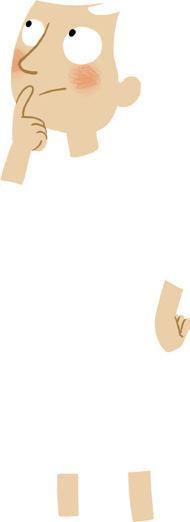
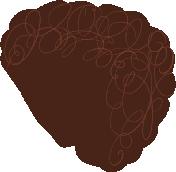
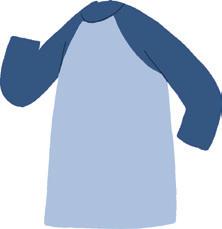
Introducing basic percentages
A percentage is another way of recording a fraction with a denominator of 100 (out of 100). A percentage sign, %, is used to display percentages. For example, 25 100 can be written as 25%.
Fill in the missing cells on the equivalence tables.
DRAFT
An easy way to find a percentage is to think about its equivalent fraction. 10% of 50 think 1 10 of 50 = 5.
Find the percentages of these amounts.
a 10% of $10
b 10% of $30
c 20% of $10
d 20% of $40
e 10% of $100
f 25% of $40
g 25% of $60
h 30% of $50
i 40% of $60
j 75% of $40
30% of $20
30% of $30
Think 10% (1/10) of $30 = $3
Think 10% (1/10) of $30 = $3
30% is 3 times that amount = $9.
30% is 3 times that amount = $9.
Determines percentages of quantities, and finds equivalent fractions and decimals for benchmark percentage values

Oxford University Press 137 unit
33
g 7 10 % % % 1 4 h 0.8 i 90% j 1 Visual Fraction Hundredths Decimal Percentage % k 100 0. % l 5 10 1 2 Visual Fraction Hundredths Decimal Percentage a 1 10 10 100 0. 10% b 2 10 100 0. % c 100 0. % d 4 10 3 10 100 0. % e 100 0. % f 100 60 0. % 3
EXAMPLE
PROBLEM SOLVING N MP_NSW_SB5_38343_TXT_PPS_NG.indb 137 30-Aug-23 08:59:39
Design three survey questions to improve your school canteen. You could consider such things as days it is open and types of food.

c Survey some children, then report on their responses to your questions.
Write a statement about a possible improvement the canteen could make, according to your survey.
Do you think that you surveyed enough students to make a fair sampling of students in your school? Why?
Does the oldest person run the fastest?

a Order 8 students in your class from youngest to oldest.
b Number them from 1 to 8, then record their dates of birth (D.O.B.) and sprinting times over 50 m in the table below.
c Did the oldest person run the fastest?
Oxford University Press 138 unit Interprets data displays, including timelines and line graphs Collecting data/questionnaires 33 COMMUNICATING, REASONING
a b
a b
c
Child D.O.B. Time Child D.O.B. Time 1 5 2 6 3 7 4 8
5 6 7 8 9 MP_NSW_SB5_38343_TXT_PPS_NG.indb 138 30-Aug-23 08:59:40
DRAFT
Enlarging two-dimensional shapes
This 2 cm × 2 cm square has an area of 4 cm2.
a How big do you think the area of the square would be if you doubled its dimensions (length of sides)?
b Test your answer by drawing a square with sides of 4 cm on the grid.
c How many times larger was the area of the square with doubled dimensions?
d Enlarge the rectangle by doubling its dimensions to see if the area of the rectangle is also enlarged by the same amount.
e Having done this for both the square and the rectangle, write a brief rule for what happens to the area of a two-dimensional shape when its dimensions are doubled.
Reducing two-dimensional shapes
a Reduce the shape by halving its dimensions. A starting point has been given.
b Did the area of the smaller shape halve?
c What happened to the area of the smaller shape?
Create two shapes. The first shape must have an area of 16 cm2 and the second must have an area of 32 cm2.
Oxford University Press 139 unit Selects and uses the appropriate unit to calculate areas, including areas of rectangles 33 Area experiment COMMUNICATING, REASONING N L CCT
10
MP_NSW_SB5_38343_TXT_PPS_NG.indb 139 30-Aug-23 08:59:40
11 12
DRAFT
A simple percentage can be viewed as a fraction with a denominator of 100. A percentage sign, %, is used to display percentages.
20 100 is the same as 2 10 and can be written as 20%.

Shade the given percentages of the 100 pieces of candy in the jar. Hint, shade them in rows starting from the top of the jar.
a 10% or 1 10 of the candy is red.
b 20% or 2 10 of the candy is green.
c 30% or 3 10 of the candy is orange.
d 40% or 4 10 of the candy is blue.
Circle the correct percentages of the battery chargers.
Lollies
Convert 10% to a fraction to calculate the discount and then the cost.
Example:
10% of $20 = 1 10 of $20 = $2
Oxford University Press 140 unit
percentages of quantities,
finds equivalent fractions and decimals for benchmark percentage values
Determines
and
10% 20% 40% 10% 30% 50% 10% 40% 75% 50% 10% 90% 10% 20% 50% 60% 25% 100% a d b e c f
2 3
12 6 9 3 1 11 5 a b c d e g f h $20 $60 $80 $90 $50 $40 $30 $100
1
PROBLEM SOLVING, UNDERSTANDING CCT N 10% off all stock. Cost Discount Discount cost a $20 $2 $18 b c d e f g h MP_NSW_SB5_38343_TXT_PPS_NG.indb 140 30-Aug-23 08:59:40
Percentages 34
DRAFT
6

Division with fractional remainders
Remainders can be written as a common fraction. Simply place the remainder over the divisor to form a fractional remainder.
Calculate the answers to the following divisions. Write any remainders as fractions.
5
Calculate the average distance between railway stops over 728 km:
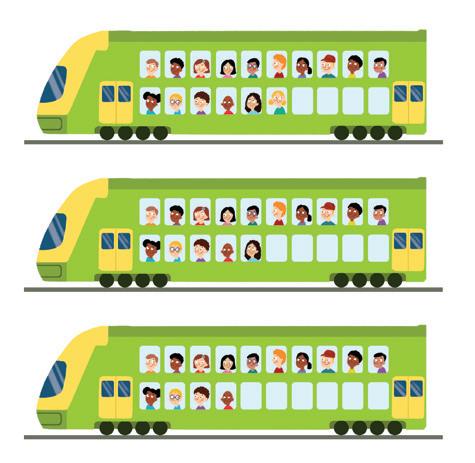
a If the train stopped at 4 stations.
b If the train stopped at 8 stations.
DRAFT
You need to think about your remainder when answering question 6. If you divide 17 sheep into 4 paddocks, the answer could be 4 r 1, not 1 4 of a sheep!
Solve these problems, choosing the best way to write the remainders.
a Josh shared 256 sheep evenly into 7 paddocks. How many sheep were in each paddock?
b Shari had 657 marbles that she shared evenly among herself and her four friends. How many marbles did each friend receive?
c Rami bought 260 small chocolate bars to share among himself and his 7 friends. How many chocolate bars did each child receive?
d Teresa had a roll of ribbon measuring 185 m. She had to cut the ribbon into 4 equal lengths. How long was each piece of ribbon?
Oxford University Press 141 unit Selects and applies appropriate strategies to solve multiplication and division problems COMMUNICATING, REASONING N CCT
1 5 4 1 5 5 72721
a 3 6 3 9 b 4 8 4 8 c 3 8 6 4 d 5 9 6 3 e 4 9 8 5 f 2 7 2 3 g 5 7 6 7 h 3 7 6 4 i 5 6 6 3 j 6 8 7 k 3 8 9 8 l 4 7 9 6 m 5 8 8 7 n 6 4 5 9 o 7 5 1 7 p 8 6 5 9 4
divisor 1 1 4 3 8 8 ) 91135 34
c If the train stopped at 6 stations. MP_NSW_SB5_38343_TXT_PPS_NG.indb 141 30-Aug-23 08:59:41
Cross-sections 34
In the space provided, draw the cross-section of each object. All objects are cut parallel to their bases. You may need to model some of these objects from soft substances to discover the shape of the cross-section. Prisms cut parallel to their base have uniform cross-sections.
What objects could these shapes be the cross-sections of? Note: You can have more than one answer.
When you do a number of cross-sections of a prism, parallel to its base, are the cross-sections always the same size?
When you do a number of cross-sections of a pyramid, parallel to its base, are the cross-sections always the same size?
Oxford University Press 142 unit Visualises, sketches and constructs three-dimensional objects, including prisms and pyramids, making connections to two-dimensional representations
a e i b f j c g k d h l
a b
7 8 9 10 REASONING L MP_NSW_SB5_38343_TXT_PPS_NG.indb 142 30-Aug-23 08:59:41
DRAFT
A dot plot is a number line that uses dots to record the frequency of events. For example, in this survey, six people selected C.
Mr Chambers took the pulse rates of 60 Year 5 students after recess and recorded them.
Create a dot plot graph of the collected data.
Use the data above to answer whether the questions are true or false.

a More children had a pulse rate of 64 than 67.
b Fewer children had a pulse rate of 67 than 71.
c More children had a pulse rate of 80 than 79.
d Fewer children had a pulse rate of 85 than 88.
e More children had a pulse rate of 80 than any other.
f More children had a pulse rate of 78 than 83.
g Fewer children had a pulse rate of 82 than 77.
Oxford University Press 143 unit Constructs graphs using many-to-one scales Interprets data displays, including timelines and line graphs 34 Different graph displays REASONING CCT N
Pulse Children Pulse Children Pulse Children Pulse Children Pulse Children 54 63 72 l 81 l l l l 90 l 55 64 l 73 l l 82 l l l l 91 56 65 74 l l l 83 l l l l 92 57 66 75 l l 84 l 93 58 67 l 76 l 85 l l l 94 59 68 77 l l l l 86 l l 95 60 69 78 l l l l 87 l 96 61 70 l 79 l l l l l 88 l l 97 62 71 l l 80 l l l l l l 89 l 98
Pulse rates of
Year 5 students 8 7 6 5 4 3 2 1 60 61 62 63 64 65 66 67 68 69 70 71 72 73 74 75 76 77 78 79 80 81 82 83 84 85 86 87 88 89 90 Pulse rates
60
Number of children
11 12
A B C D E F MP_NSW_SB5_38343_TXT_PPS_NG.indb 143 30-Aug-23 08:59:42 DRAFT
Equivalent number sentences
An equation is a number sentence that contains an equals sign, e.g. 100 ÷ 5 = 10 × 2.
Balance these equations by supplying the missing number.
a 51 ÷ = 25 8 f 365 ÷ 5 = 7
b 48 + = 99 16 g 48 ÷ 8 = ÷ 20
c 14 × = 35 × 2 h 75 × 5 = + 80
d 959 = 910 ÷ 1 i 102 + 52 = × 5
e 320 ÷ = 64 48 j 21 9 = ÷ 12
The solutions to these equations are in the cloud. Use the “guess and check” method to solve them. 3 6 7 8 9 10 35 50 72 86
a 16 × 3 = 2 f 8 + × 7 = 50
b 95 = 14 + 9 g ( + 3) × 4 = 40
c 63 ÷ 7 = 81 ÷ h 54 6 × = 6
d + 53 = 8 × 11 i 100 ÷ + 10 = 20
e 64 21 = ÷ 2 j 3 × 3 × = 30 3
Order of operations: × and ÷ before + and – .
Apply the order of operations to complete the equations below.
a 3 + 7 + 6 x 3 =
b 3 + (7 + 6) x 3 =
c 7 x 3 x 4 – 52 =
d (3 + 7) x 3 – 5 x 3 =
e 7 x 5 + 19 – 3 x 6 =
f 100 – 7 x 5 + 15 =

25 – 8 = 17 51 ÷ 3 = 17
My guess for ‘c’ is 9, but I’ll check.
g (8 + 6) x 10 – 100 – 30 =
h 25 x 5 + 90 – 150 =
Create equations that will help you solve these problems. 4
a How much did Daniel pay for his surfboard if he paid $90 per month for two years?
b A hamburger costs $2.95. With sauce it costs 5c extra. How much for 6 with sauce and one without sauce?
c How much did Alexa actually receive if she worked 5 days at $40 per day, but one quarter of the amount was taken out in taxes?
d How much medicine is left in the 150 mL bottle if Erica took 4 doses of 25 mL?
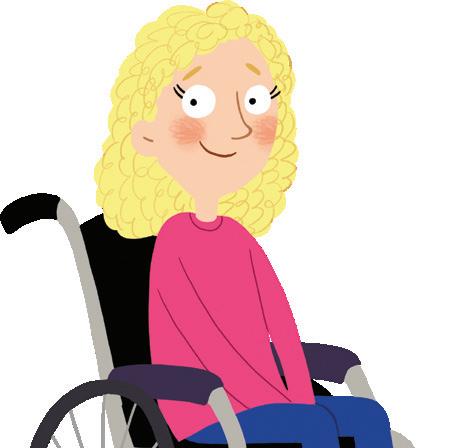
Oxford University Press 144 unit Constructs and completes number sentences involving multiplicative relations, applying the order of operations to calculations 35 REASONING, COMMUNICATING N CCT
1 2 3
MP_NSW_SB5_38343_TXT_PPS_NG.indb 144 30-Aug-23 08:59:42
DRAFT
35 GST and budgets

GST is a Goods and Services Tax. That means we pay an extra percentage or fraction of the cost of the goods or services being provided, as a tax. For example, you might pay an extra 10% ( 1 10 ) of the cost of a T-shirt as GST. If a tradesperson provides you with a service, you will pay an extra 10% to them.
COST $20
The seller or provider of the goods or services collects Plus GST $ 2 the GST and sends it to the government.
Total cost $22
Calculate the GST and then the total price for these items. Divide by 10 to find 10% or 1 10 of the cost.
Henry earns $678.00 per week but has many commitments and needs to budget.
a Total all the weekly expenses to calculate how much Henry spends. (You may need a calculator.)
b Does Henry spend more than he earns?
c How could Henry trim his spending to balance his earnings with his spending?
d What is the difference between what he earns and what he spends?
e If the extra money he spends is put on a credit card, would this be a good idea? Why?
Oxford University Press 145 unit Determines percentages of quantities, and finds equivalent fractions and decimals for benchmark percentage values Determines 1 2 , 1 4 , 1 5 and 1 10 of measures and quantities PROBLEM SOLVING N L CCT
Item GST Total cost Item GST Total cost a CRAZY CAR PG CHASE $20 f $60 b Dictionary Dictionary $30 g $5 c h $15 d 1 ON OFF 2 3 0 + =% C / 4 5 6 7 8 9 $10 i $100 e j 11:30 $1200
5 6 Budget Weekly expenses Tax 200.00 Medical 27.50 Savings 10.00 Food 150.00 Drink 40.00 Entertainment 80.00 Sport 40.00 Clothes 40.00 Car 60.00 Other bills 100.00 Total $50 $24 MP_NSW_SB5_38343_TXT_PPS_NG.indb 145 30-Aug-23 08:59:43
DRAFT
Recognising metric units
Units of length prefixes and their meanings
deca ten kilo one thousand centi one hundredth
hecto one hundred deci one tenth milli one thousandth
Use the prefixes above to describe these lengths (e.g. decimetre = 1 10 of a metre).
a decametre b hectometre
d centimetre e millimetre
c kilometre
f decimetre
Grams g, kilograms kg, tonnes t, litres L, millilitres mL, cubic centimetres cm3, cubic metres m3, square metres m2, square centimetres cm2, millimetres mm, centimetres cm, decimetre dm, metre m, decametre dam, hectometre hm, kilometre km
Choose the correct measuring unit to measure the items. You may need to write two abbreviations in some cases. For example, the length of a long jump might be m and cm
Items Unit/s
a The length of a pencil.
b The length of an ant.
c The length of a car.
d The capacity of a small cup.
e The capacity of a barrel of water.
f The volume of a matchbox.
g The volume of a cubby house.
h The mass of a ruler.
i The length of first base from home plate.
j The mass of a bag of oranges.
k The mass of an elephant.
l The area of a postage stamp.

m The area of a park.
n The area of a handball court.
9
Solve the problems.
a The length of a rope was 3 dam and 4 m long. How many metres in total is that?
b The length of a matchbox is 5 cm and 3 mm long. How many millimetres is that?
c The length of a spear is 2 m and 23 mm long. How many millimetres is that?
d The length of a road is 4 dam and 7 m long. How many metres is that?
Oxford University Press 146 unit COMMUNICATING, PROBLEM SOLVING N Selects and uses the appropriate unit to estimate, measure and calculate volumes and capacities Selects and uses the appropriate unit and device to measure the masses of objects 35
7 8 0 1 2 3 4 5 6 7 8 9 10 11 12 13 14 0 1 2 3 4 5 6 7 8 9 10 11 12 13 14
MP_NSW_SB5_38343_TXT_PPS_NG.indb 146 30-Aug-23 08:59:43 DRAFT
Timelines 35
Timelines are used to place events in a sequence.
Make your own personal timeline. Start by writing the year you were born. Make sure to include important events in your life.
CE means ‘Common Era’. BCE means ‘Before the Common Era’.
Draw a line to match each event to a place on the timeline.
Answer these questions.
a How many years between the Battle of Hastings and Columbus’s voyage
b How many years between the first Olympics and the completion of the Great Wall of China?
c How many years between the first Olympics and the Battle of Hastings?
d How many years between the completion of the Great Wall of China and the Federation of Australia?
e How many years between the Federation of Australia and the year you were born?
f Put a cross on the timeline to estimate 1250 ce.
g Tick the timeline where you think 250 bce would be.
h Put an O on the timeline to mark the Sydney Olympics in 2000.
Oxford University Press 147 unit Constructs
Interprets data displays, including timelines and line graphs
graphs using many-to-one scales
10 I WAS BORN 20 20 20 20 20 20 20 20 20
PROBLEM SOLVING, UNDERSTANDING L
1000 bce 500 bce 0 500 ce 1000 ce 1500 ce 2000 ce
11 12 First Olympic Games 776 bce Great Wall of China finished 500 bce Battle of Hastings 1066 ce Columbus’s voyage to the Americas 1492 ce Federation of Australia 1901 ce MP_NSW_SB5_38343_TXT_PPS_NG.indb 147 30-Aug-23 08:59:44 DRAFT
PART
Round each number to the nearest 10 and nearest 100.
Number Round to 10 Round to 100
a 91
b 229
c 1356
d 1497
e 2986
Make an estimate of each addition by rounding each number to the nearest 100.
f 397 + 207 ≈
g 896 + 787 ≈
h 1679 + 623 ≈
i 2071 + 1641 ≈
List all factors for these numbers.
a 18
b 27
PART
Solve the following.
Find the highest common factor of these numbers.
c 18 and 42
d 27 and 45
PART
Write
Calculate these percentages.
a 10% of 40
b 25% of 60
c 50% of 80
d 10% of 100
e 10% of $500
f 25% of $80
Oxford University Press 148
Diagnostic review 4
1 2 3 PART
a 6 8 . 7 4 b $ 6 5 . 8 9 c 3 5 . 4 9 + 1 2 . 5 3 + $ 2 4 . 0 7 2 0 . 8 6 d 5 4 . 5 0 e $ 9 0 . 4 6 f $ 6 0 . 4 9 + 4 2 . 5 8 $ 2 8 . 3 5 $ 4 6 . 8 5 PART Calculate the answers. a 3 4 7 b 2 3 5 2 c 3 9 × 6 × 7 × 4 0 d 5 9 e 3 7 5 f 2 6 3 × 2 4 × 3 7 × 4 8
your answer with a fractional remainder. g h i 4 3 7 7 5 2 5 6 9 3 7 7 9 j k l 6 3 9 7 3 8 6 6 4 9 8 3 9 5 5 PART
the order of operations to
equations. a 4 + 6 + 5 x 4 = b 4 + (6 + 5) x 4 = c 5 x 4 – 2 x 6 + 20 = d 100 – 5 x 8 + 40 = e 5 + 15 x 4 – 6 = 4 5 6 MP_NSW_SB5_38343_TXT_PPS_NG.indb 148 30-Aug-23 08:59:44 DRAFT
Apply
these
a Enlarge this shape by doubling its dimensions (sides).
Write the letter found at each grid reference to discover the secret word.
b How many times larger is the shape’s area?
Name the objects these nets form.
Oxford University Press 149 Diagnostic review 4 PART
start
PART
a c b d PART Convert
measurements to
units
a 6 cm = mm d 3000 m = km b 40 mm = cm e 5 km = m c 9 m = cm f 1.5 km = m 7 8 9 PART
these
the
given.
5 a o l 4 z v i 3 t g s 2 d a n 1 r x A B C D E F G H B2 F4 E2 D3 D5 H2 B5 H5 PART 3 km 4 km How many square kilometres of land does this section of parkland occupy? km2 PART Calculate the area of the triangles. cm2 a b cm2 cm2 c d cm2 10 11 12 MP_NSW_SB5_38343_TXT_PPS_NG.indb 149 30-Aug-23 08:59:44 DRAFT
acute angle
An angle less than 90°
acute angle
addend
Any number that is added to obtain the sum or total.
3 + 7 + 8 = 18
(addends) (sum)
average
The total of a series of numbers divided by the amount of numbers in the group.
Average of 3, 5, 7, 9:
• add 3 + 5 + 7 + 9 = 24
• divide 24 by the number of scores
24 ÷ 4 = 6
The average is 6.
axis
A line that divides a shape symmetrically in half.
adjacent
Next to; adjacent sides of a triangle have a common vertex.
X
Y Z
XY and YZ are adjacent because they have a common vertex, Y.
algebra
Where letters or symbols are substituted for numbers in a number sentence.
3 × b = 15 (b = 5)
Lines of reference for a graph.
algorithm
The calculation procedure for setting out a mathematical problem in a certain way.
324 874 364 + 207 23 × 30
Celsius A scale for measuring temperature.
ice begins to melt
boiling point of water
human body temperature
circumference
The distance around a circle.
am
Abbreviation from the Latin words ante meridiem (before noon). Any time from midnight to noon.
apex apex
The highest point of a solid (3D) object from its base.
associative property
When using addition and multiplication, it doesn’t matter how the numbers are grouped. The answers will always remain the same.
5 × 4 × 2 = 40 3 + 6 + 7 = 16 and and 5 × 2 × 4 = 40 7 + 3 + 6 = 16
column graph
A graph where vertical columns or horizontal bars are used to represent data.
CIRCUMFERENCE
commutative law
Numbers can be added or multiplied in any order. 5 + 6 is equal to 6 + 5
× 7 is equal to 7 × 5
complementary angles
Two angles whose sum is 90
Dictionary Oxford University Press 150
1 2 3 4 5 6 7 3 2 1 0 vertical axis horizontal axis
0°C ➔
100°C ➔
36.9°C ➔
a b
5
°
Boys Girls Men Women 20 15 10 5 0 Soccer Club Members MP_NSW_SB5_38343_TXT_PPS_NG.indb 150 30-Aug-23 08:59:45
. axis of symmetry
DRAFT
composite number
A number that has more than two factors.
Example: 10 has four factors – 1, 2, 5 and 10.
congruent
Two shapes or objects that are identical in all ways.
coordinate point
congruent circles
Coordinates locate points or positions on a grid using ordered pairs. The horizontal position is given before the vertical position. Example: The circle is located at (C,3).
dot plot
A graph that uses scale to represent data. Each value is recorded as a dot.
edge
The intersection of two faces.
elapsed time (duration)
The time taken to do something. For example, the time it takes to prepare a meal is elapsed time.
cross-section
The shape of the face made by slicing through a solid. Example:
cubic metre (m3)
A metre cube has a volume equal to one cubic metre.
denominator
1 m
cross-section
equilateral triangle
A triangle that has three equal sides and three equal angles.
equivalent fraction
Fractions that have the same value.
1 m
1 m
The bottom number of a fraction that tells how many equal parts in the whole.
1 ➔ numerator
4 ➔ denominator
diameter
A straight line touching both sides of a circle which passes through the centre point.
divided bar graph
diameter
A graph that shows how a total is divided into parts.
Science Art Maths
face
70
100 = 7 10
The surfaces of a three-dimensional (solid) object.
face
face face
factor
Any whole number that can be multiplied with another to make a given number.
Factors of 12: 12, 6, 4, 3, 2, and 1
factor tree
A diagram that displays factors of a number.
36
6 × 6
3 × 2 × 3 × 2
Dictionary Oxford University Press 151
4 3 2 1 A B C D
5 6 7 8 9 10 11 12 Age Ages of children at a party
edge
MP_NSW_SB5_38343_TXT_PPS_NG.indb 151 30-Aug-23 08:59:45
DRAFT
frequency
In a collection of data, the frequency of a category is the number of occurrences for that category.
Animal Frequency Sheep
Horses Cows Dogs
The frequency of the horses in the table is 7.
greater than ( > )
Symbol used to show that one number has a value greater than the other number.
27 > 15
improper fraction
A fraction where the numerator is greater than the denominator. Improper fractions have a value greater than one whole.
5 ➔ numerator
isosceles triangle
A triangle that has two sides of equal length and two angles the same size.
3 ➔ denominator x x
kilogram (kg)
A mass unit.
1 kg = 1000 grams
grid references
Grid references locate positions on a map or grid. The horizontal position is given before the vertical position, e.g. the circle is located at (C,3).
kilolitre (kL)
A capacity unit.
1 kL = 1000 litres
kilometre (km)
A length unit.
1 km = 1000 metres
less than ( < )
Symbol used to show that one number has a value less than the other number.
gross mass
The total mass of any item, including its packaging.
hectare (ha)
A unit of area.
1 ha = 10 000 m2
hexagon
A 2D shape with six straight sides. regular hexagon irregular hexagon horizontal
A straight line at right angles to the vertical and parallel to the horizon.
vertical line
horizontal line
line graph
240 < 420
Information represented on a graph by joining plotted points with a line.
mean
The centre of a set. It is found by adding all the values in the data sample, then dividing the total by the number of values in the set. It is often called ‘the average’.
8 is the mean for the scores:
6, 8, 6, 9, 10 and 9
6 + 8 + 6 + 9 + 10 + 9 6 = 8
metre (m)
The basic SI unit of length.
1 metre = 1000 mm
1 metre = 100 cm
millilitre (mL)
A measurement of capacity.
1000 mL = 1 litre
Dictionary Oxford University Press 152
1 2 3 4 5 6 7 3 2 1 0
Flour 1 kg
4 3 2 1 A B C D
MP_NSW_SB5_38343_TXT_PPS_NG.indb 152 30-Aug-23 08:59:46
DRAFT
millimetre (mm)
A measurement of length.
1 mm = 1 thousandth of a metre
10 mm = 1 centimetre 1 mm
order of rotational symmetry
The number of times a shape matches the original as it completes one full rotation.
1 000 000 1000 × 1000 = 1 000 000 or 10 × 100 000 = 1 000 000
mixed numeral
A number that consists of a whole number and a fractional part.
Example: 4 1 2
Order of rotation of 4
Any shape that still looks the same when it is turned around a fixed point has rotational symmetry.
outcome
The result of a mathematical investigation. For example, when three coins are tossed there are 8 possible outcomes.
multiple
The result of multiplying a given number by any other number is a multiple of that given number. Multiples of 3 are: 3, 6, 9, 12, 15, 18, etc.
negative numbers
Numbers that have a value less than zero. A minus sign is placed in front of a number to identify it as negative.
Example: The temperature was 5°C.
net
A flat shape which can be folded to make a 3D object.
Net of a triangular prism
net mass
The mass of any item without its packaging.
numerator
The top number of a fraction, telling us how many parts there are out of the whole.
3 ➔ numerator
4 ➔ denominator
obtuse angle
An angle larger than 90° but less than 180° .
per cent (%)
A fraction of 100.
87% means 87 out of 100
i.e. 87 100 = 87% = 0.87
perimeter
The distance around the outside of a shape. 3 m 5 m 4 m
Perimeter = 3 m + 4 m + 5 m
Perimeter = 12 m
perpendicular lines Lines which meet at right angles.
Dictionary Oxford University Press 153
1 1 3 2 4 1 3 2 4 1 3 2 4 1 3 2 4 1 3 2 4
H T T H T H H T H T H T H T T H H T H T H T T H
0 1 2 3 cm
million
130° MP_NSW_SB5_38343_TXT_PPS_NG.indb 153 30-Aug-23 08:59:46
DRAFT
pie sector graph
A circular graph whose parts look like portions of a pie. plan
Tennis Hockey
Softball
Bowls Netball
A diagram from above, showing the position of objects. Also known as the top view of a 3D object.
radius
A straight line extending from the centre of a circle to the circumference.
ray
pm
Abbreviation for the Latin words post meridiem which means after midday.
polygon
A 2D shape with three or more angles and straight sides.
hexagon pentagon
prime number
A number that is divisible only by itself and 1.
Examples: 2, 3, 5, 7, 11, 13, 17, 19, 23, 29
probability
The likelihood or chance of an event happening. The range of probability is from zero to one.
quadrilateral
A 2D shape with four straight sides.
Examples:
radius
A line that has a starting point but does not end.
rectangle
A four-sided figure with four right angles and two pairs of parallel sides.
rectangular prism
A 3D object which consists of six rectangular faces.
reflective symmetry
A mirror image of a shape.
reflex angle
An angle between 180° and 360°
Example: 330°
revolution
A full turn of 360°
rhombus
A four-sided shape with four equal sides. Opposite angles are equal and it has two sets of parallel lines.
Roman numerals
Number system devised by the ancient Romans.
Examples:
I = 1 D = 500
V = 5 M = 1000
X = 10
L = 50 XCV = 95
C = 100 MMX = 2010
Dictionary Oxford University Press 154
x° y° y° x°
Dining Kitchen Laundry Bathroom Hall Bed 1 Lounge Verandah Bed 2
Probability of zero Impossible Probability of 1 Certain unlikely to happen likely to happen 0 1
square
MP_NSW_SB5_38343_TXT_PPS_NG.indb 154 30-Aug-23 08:59:47
oblong
DRAFT
rotation
The turning of an object through a fixed point.
scalene triangle
A triangle with sides of different lengths and angles of different sizes.
sequence
An order of numbers or objects arranged according to a rule or pattern.
Example: Number 1 2 3 4
$ $5 $10 $15 $20
square centimetre (cm2) A unit for measuring area.
supplementary angles
Two angles that have a total of 180
surface area
The total area of all faces of a 3D object.
square number
The product of a number multiplied by itself.
Examples:
A rectangular prism has six faces. tally marks
Groups of marks used to keep count. Every fifth mark usually crosses the four before it. = 17
three-dimensional (3D)
Solid objects have three dimensions: height, length and width (breadth). height length width (breadth)
timeline
A line which represents a span of time.
2003 Born 2008 School 2013 2018 2023 Work High school
tonne
A unit for measuring mass. 1 tonne = 1000 kilograms
Dictionary Oxford University Press 155
° 130° 50° 130° + 50° = 180°
6 cm 6 cm 6 cm 6 cm 6 cm 6 cm 10 cm
1
1
1
1
1
1
1
1
1
1
1
1 cm
cm 1 cm × 1 cm =
cm2 square kilometre (km2) A unit for measuring area.
km
km
km × 1 km =
km2 square metre (m2) A unit for measuring area.
m
m
m ×
m =
m2
22
4 32 = 3 × 3 = 9 42 = 4 × 4
16 fixed
MP_NSW_SB5_38343_TXT_PPS_NG.indb 155 30-Aug-23 08:59:47 DRAFT
= 2 × 2 =
=
point
translate (slide)
The sliding of a shape into a new position.
slide
trapezium
A four-sided figure that has two parallel sides and two that are not parallel.
triangular numbers
Numbers that can be arranged as a triangular pattern.
triangular prism
A prism with two congruent triangles as bases, 3 rectangular faces, 9 edges and 6 vertices.
triangular pyramid (tetrahedron)
3D object with 4 triangular faces, 6 edges and 4 vertices.
turn
To rotate a shape around a point.
twelve-hour time
Analog clocks break the day into two lots of 12 hours: am (midnight–midday) pm (midday–midnight).
twenty-four-hour time
Time divided into 24-hour intervals, so as to distinguish between am and pm.
two-dimensional (2D)
Plane shapes have only two dimensions: length and width (breadth).
width (breadth)
unit fraction
length
Fractions with a numerator of 1.
Examples: 1 2 , 1 3 , 1 4 , 1 5 , 1 10
vertex
The point where two or more lines meet to form an angle.
vertical
vertex
DRAFT
Vertical lines are at right angles to the horizontal.
vertices
Plural of vertex. A triangle has 3 vertices.
vertical line
horizontal line
vertices
A rectangular prism has 8 vertices.
volume
The amount of space an object occupies.
Formula:
Volume = length × width × height 2 m 3 m
2 m
Volume = 3 m × 2 m × 2 m = 12 m3
whole numbers
The counting numbers from one to infinity. 1, 2, 3, 4, ➔ infinity
Oxford University Press 156
Dictionary
MP_NSW_SB5_38343_TXT_PPS_NG.indb 156 30-Aug-23 08:59:48
3 6
f 1000 m 1200 t 1400
g 700 n 200 u 1400
7 a 92 m b $25
8 a Right angle e Obtuse angle
b Acute angle f Obtuse angle
c Right angle g Reflex angle
d Reflex angle h Straight angle
9 A B C D
a I have four right angles. B
b I have one obtuse angle, one acute angle and two right angles.
c I have three acute angles. E
d I have three right angles and two obtuse angles D
e I have six obtuse angles. A
10 Hands on.
11 1000 clicks
12–13 Hands on.
14 a 433 km c 396 km e 378 km
b 368 km d 245 km
15 Hands on.
161
f 21 m 179 t 330
g 128 n 176 u 393
3 a 63 e 69 i 369
b 64 f 91 j 283
c 75 g 68 k 194
d 96 h 79 l 572
4 a 36 e 34 i 159
b 33 f 14 j 228
c 47 g 27 k 138
d 24 h 35 l 225
5 Hands on.
6 a 216 426 d 1 518 620
b 321 216 e 12 270 480
c 435 560 f 28 378 999
7 a ACT, Tas, Vic, NSW, SA, NT, Qld, WA
b SA c WA d Qld, WA e WA f SA
Answers 157 Oxford University Press UNIT 1 Answers in any order. a 4 × 5 = 20 5 × 4 = 20 20 ÷ 4 = 5 20 ÷ 5 = 4 b 3 × 4 = 12 4 × 3 = 12 12 ÷ 3 = 4 12 ÷ 4 = 3 c 5 × 3 = 15 3 × 5 = 15 15 ÷ 3 = 5 15 ÷ 5 = 3 d 6 × 3 = 18 3 × 6 = 18 18 ÷ 3 = 6 18 ÷ 6 = 3 e 5 × 6 = 30 6 × 5 = 30 30 ÷ 5 = 6 30 ÷ 6 = 5 f 6 × 7 = 42 7 × 6 = 42 42 ÷ 6 = 7 42 ÷ 7 = 6 2 a 5 × 7 35, 7 × 5 35
3 × 2 × 4 = 24, 4 × 3 × 2 = 24
3 × 7 × 4 = 84, 7 × 4 × 3 = 84
Hands on. (No)
o
b
c
3
4 a 77 h 85
559
b 85 i 58 p 888
c 30 j 91 q 879
d 68 k 21 r 799
e 96 l 111 s 111
m
t
f 74
458
925
u
a
g 39 m 154
g 32 n 497
633 5
62
n
o
p
q
r 258
h 700 o 1300
p 500
b 74 h 59
273 c 62 i 59
403 d 72 j 38
303 e 102 k 39
327 f 87 l 35
6 a 800
b 500 i 600
q 400
1000 k 600 r 1300
400 l 1000 s 400
c 1000 j 300
d
e
E
C
1 UNIT 1 a 364 e 624 i 883 m 91°C b 595 f 476 j 868 n 948 mL c 650 g 958 k 750 g o $26.14 d 765 h 776 l 761 cm 2 a 497 b $845 3 a 2 3 c 1 2 e 1 6 g 1 3 b 4 6 d 5 6 f 4 6 h 2 6 4 Possible solutions: a 2 3 b 3 6 c 5 6 d 1 3 5 a 5 6 b 2 3 c 1 2 6 a 1 3 , 2 3 b 1 6 , 2 6 , 3 6 , 4 6 , 5 6 c 1 2 7 4 6 8 Shape Name Sides Angles Types of angles Lines of symmetry triangle 3 3 acute 3 rectangle 4 4 right angle 2 trapezium 4 4 right angle obtuse acute 0 pentagon 5 5 obtuse 5 octagon 8 8 obtuse 8 hexagon 6 6 obtuse 6 pentagon 5 5 right angle reflex acute 1 octagon 8 8 right angle reflex 0 hexagon 6 6 right angle reflex acute 0 9 10 Hands on. 11 Length Width Array a 3 cm 2 cm 6 cm2 b 4 cm 2 cm 8 cm2 c 4 cm 3 cm 12 cm2 d 6 cm 3 cm 18 cm2 12 a 12 cm2 b 28 cm2 c 40 cm2 UNIT 1 a 622 b 641 c 521 d 445 e 235 2 a 418 b 317 c 207 d 318 e 327 3 a 385 b 565 c 493 d 685 e 585 4 a 360 b 13 c 177 d 78 5 a 2, 4, 3, 6, 8 d 2, 4, 3, 5, 7 b 2, 4, 6, 9, 7 e 6, 9, 3, 7, 10 c 2, 4, 3, 5, 7 6 a 6 r 1 e 7 r 2 i 7 r 3 b 4 r 1 f 5 r 4 j 7 r 2 c 2 r 1 g 5 r 2 k 8 r 1 d 5 r 1 h 5 r 2 l 9 r 3 7 a 16 r 1 c 5 r 3 e 4 r 1 b 8 r 1 d 6 r 3 2 3 8 a 1 6 b 1 6 c 3 6 d 4 6 9 a 5 10 b 4 10 c 3 10 10 a false c true e true b true d false f true 11 Hands on. 12 a, b, c, f 13 They stack without gaps. 14 a 3 cm3 e 10 cm3 i 24 cm3 b 6 cm3 f 16 cm3 j 18 cm3 c 8 cm3 g 24 cm3 d 8 cm3 h 16 cm3 15 Hands on. UNIT 1 a 15 e 140 i 1300 b 150 f 90 j 250 c 1 500 g 1 000 k 330 d 130 h 400 l 300 2 a 41 h 31 o 172 b 62 i 97 p 101 c 88 j 114 q 171 d 58 k 102 r 131 e 23 l 169 s
8 1 0 0 1 2 3 4 5 2 3 4 5 6 x y 9 Pentagon
a (2,2) c (6,2) e (8,6)
(9,4) d (9,3) f (4,7)
Hands on. 12 a 12 b 4 c 20 d 60 4 MP_NSW_SB5_38343_TXT_PPS_NG.indb 157 30-Aug-23 08:59:49
10
b
11
DRAFT
Answers
13 a 0.5 kg e 0.459 kg i 1.25 kg
b 0.25 kg f 0.674 kg j 2.374 kg
c 0.275 kg g 1.632 kg k 2.5 kg
d 0.376 kg h 1.347 kg l 3.2 kg
14 a Kitchen or electronic scales
b Kitchen or electronic scales
c Displacement tank
d Weighbridge
e Bathroom scales
UNIT
1 a 90 d 180 g 210 j 400
b 120 e 240 h 320 k 540
c 200 f 300 i 280 l 490
2 a 1000 f 2400 k 2800
b 1200 g 3000 l 4900
c 1600 h 2500 m 3500
d 1500 i 2100 n 6400
e 2000 j 3600 o 5600
3 a 120 d 91 g 111 j 204
b 115 e 98 h 238 k 114
c 160 f 132 i 216 l 215
4 a $180 c $200 e $184
b $180 d $130
5 Hands on.
6 a 13 c $4.91 e 25 g $206
b 16 d $315 f 264 h $1650
7–9 Hands on.
10–11 Discussion. Six combinations give 7 but only one combination gives 12.
12 a R 15 Y 8 G 5 O 2 d Orange
b Red e No
c Hands on (fair, 50/50, f Yes even)
13
rectangular prism rectangular pyramid square pyramid
pyramid cube
hexagonal prism triangular prism pentagonal prism
pentagonal pyramid
octagonal prism
hexagonal pyramid octagonal pyramid
158 Oxford University Press
5
triangular
UNIT 1 a 5 d 4 g 6 j 8 m 9 b 5 e 7 h 5 k 3 n 5 c 5 f 3 i 6 l 7 o 8 2 a 5 r1 d 5 r5 g 8 r2 j 7 r3 m 7 r1 b 7 r1 e 7 r2 h 7 r3 k 4 r2 n 5 r3 c 6 r3 f 4 r2 i 5 r2 l 6 r3 o 6 r2 3 a 24 c 15 b 18 d 6 4 3 5 a 15 20 25 30 35 40 45 e 536 532 528 524 520 516 512 b 12 16 20 24 28 32 36 f 213 227 241 255 269 283 297 c 4 7 10 13 16 19 22 g 3 6 12 24 48 96 192 d 5 12 19 26 33 40 47 h 198 191 184 177 170 163 156 6 Rule Sequence a Minus 3 43 40 37 34 31 28 25 b Plus 4 53 57 61 65 69 73 77 c Plus 0.5 3.5 4 4.5 5 5.5 6 6.5 d Doubling 1 2 4 8 16 32 64 e Halving 128 64 32 16 8 4 2 f Multiply by 3 1 3 9 27 81 243 729 g Add 1 then 2, then 3, etc 1 2 4 7 11 16 22 h Add the two previous numbers 1 1 2 3 5 8 13 7 4 9 16 +5 +7 +9 +11 +13 25 36 49 8 Square numbers 4 9 16 25 36 49 64 81 100 121 144 169 9 a 11 b 7 c 6, 7, 8, 14 d 3, 5, 16, 17, 18 e There are more combinations that give these totals. 10 a T b T c T d F 11 a 9:00 am f 4:35 pm k 2:20 pm b 2:30 pm g 6:45 pm l 10:40 pm c 8:30 am h 3:25 am m 2:35 am d 9:25 am i 3:40 pm n 2:25 pm e 5:15 pm j 6:10 pm o 11:40 pm 12 a 4 hours e 4 1 2 hours i 11 hours b 6 hours f 1 2 hour j 11 hours c 5 hours g 4 hours k 4 hours d 4 1 2 hours h 6 hours l 6 hours 13 a 9:30 pm b 9 hours c 5:15 pm UNIT 1 a 104 c 224 e 324 b 215 d 270 f 702 2 a 81 d 185 g 240 j 504 b 92 e 184 h 444 c 87 f 252 i 203 3 a 261 flights c 612 kg b 364 thumb tacks 6 7 4 a 3 6 d 4 10 g 1 4 j 6 10 m 6 6 b 5 10 e 2 10 h 3 4 k 2 4 n 5 5 c 3 6 f 4 6 i 1 2 l 3 3 o 4 4 5 a > d < g > j > b > e < h < k > c > f > i = l < 6 1 8 0 1 1 4 1 5 1 2 1 3 3 4 7 a 0/180 30/150 70/110 90 0/180 40/140 10/170 20/160 40/140 50/130 60/120 30/150 70/110 10/170 20/160 50/130 60/120 80/100 80/100 b So angles can be read from either direction. 8 a acute 70° d obtuse 120° b right angle 90° e obtuse 135° c acute 45° f acute 50° 9 a 50° c 90° e 120° g 90° b 70° d 130° f 80° h 20° 10 Metres 1525 2399 3514 4786 2905 4567 2063 2560 Kilometres 1.525 2.399 3.514 4.786 2.905 4.567 2.063 2.56 11 2.905 12 Kilometres 3.505 2.459 8.355 7.684 9.502 6.349 82 35 Metres 3505 2459 8355 7684 9502 6349 82 000 35 000 13 Distance Metres Kilometres a A to B to C 6815 6.815 b C to D to E 9405 9.405 c E to F to G 5320 5.320 d H to G to F 6236 6.236 e F to E to D 9455 9.455 f D to C to B to A 8665 8.665 14 Hands on. UNIT 1 a 8689 c 9888 e 7589 b 4688 d 6999 2 a 5370 c 5883 e 8981 b 6793 d 7082 3 Estimates – hands on. Rough estimate Answer a 6000 6034 b 6000 6146 c 9000 9030 d 7000 7140 e 9000 9043 4 Hands on. 5 He forgot to trade in the thousands column. The answer should be 10 277. 8 MP_NSW_SB5_38343_TXT_PPS_NG.indb 158 30-Aug-23 08:59:49 DRAFT
Answers 159 Oxford University Press 6 a 8 e 15 i 6 m 4 b 7 f 9 j 9 n 5 c 13 g 3 k 4 o 7 d 15 h 4 l 12 7 7 5 a 7 + 8 = 15 b 5 × 7 = 35 8 + 9 = 17 7 × 6 = 42 9 7 2 6 × 30 9 + 7 = 16 37 6 = 31 7 × 8 = 56 42 6 = 36 7 + 8 + 9 24 ( 5 + 7 ) × 6 72 8 a 19 oranges c $70 b $77 d 7 books 9 Hands on – some examples below: a 4 × 5 + 6 = 26 b 5 × 6 + 4 = 34 c 4 × 6 + 5 = 29 d 6 × 4 5 = 19 10–13 Hands on. 14 a Mondays and Wednesdays b 450 e 650 c 650 f 3250 d Sunday 15–17 Hands on. UNIT 1 a 10 d 8 g 8 j 100 m 40 b 10 e 5 h 10 k 50 n 50 c 5 f 5 i 100 l 50 o 60 2 a 3 d 5 g 6 j 4 r1 b 5 e 8 h 9 k 5 r1 c 7 f 7 i 4 r1 l 5 r2 3 a 6 d 12 g 19 j 60 b 8 e 15 h 30 k 45 c 10 f 20 i 50 l 55 4 a 5 c 8 e 15 g 30 i 60 b 4 d 10 f 25 h 40 5 Hands on. 6 a 5 3 , 1 2 3 e 9 4 , 2 1 4 i 15 6 , 2 3 6 b 3 2 , 1 1 2 f 8 5 , 1 3 5 j 7 3 , 2 1 3 c 4 3 , 1 1 3 g 7 4 , 1 3 4 d 6 4 , 1 2 4 h 12 5 , 2 2 5 7 a 6 5 b 8 5 c 12 5 d 14 5 e 16 5 8 a 1 2 5 b 1 4 5 c 2 1 5 d 2 3 5 e 3 2 5 9 Vertex Edge Face Edge Face Vertex 9 10 Shape Name Faces Edges Vertices a Cube 6 12 8 b Rectangular prism 6 12 8 c Square pyramid 5 8 5 d Pentagonal pyramid 6 10 6 e Triangular prism 5 9 6 f Pentagonal prism 7 15 10 g Triangular pyramid 4 6 4 11 Hands on. 12 One example shown below. a Sports injuries Patients 30 28 26 24 22 20 18 16 14 12 10 8 6 4 2 Dec Jan Feb Mar Apr Months b April c December DIAGNOSTIC REVIEW Part 1 5 × 7 = 35 7 × 5 = 35 35 ÷ 5 = 7 35 ÷ 7 = 5 Part 2 Possible solutions: a c b d 1 1 4 = 5 4 1 2 3 = 5 3 2 1 3 = 7 3 1 3 4 = 7 4 1 Part 3 a 10 15 25 35 30 40 45 b 14 21 35 49 42 56 63 c 16 24 40 56 48 64 72 d 6 g 6 j 320 m 375 e 6 h 6 r2 k 600 n 216 f 6 i 9 r 2 l 256 Part 4 a 782 d 301 g 11 668 b 1421 e 648 h 8584 c 9124 f 483 i 172 Part 5 a 76 532 b 6 276 337 c 7241, 17 412, 167 412, 716 241 Part 6 a 39, 42, 45 b 167, 172, 177 c 16, 32, 64 Part 7 a Acute b Right c Obtuse Part 8 pentagon hexagon octagon rhombus Part 9 a 8 b 5 c 5 d Square pyramid Part 10 a (1,1) c (2,4) e (3,2) b (5,4) d (5,1) f (6,3) Part 11 a 1:25 am b 10:37 pm c 3:57 am Part 12 Possible solutions: Part 13 a 8 cm3 b 20 cm3 a 30 b 45 UNIT 1 a 2947 c 3124 e 1228 b 4428 d 3608 2 a 1182 e 2355 i 7134 b 138 f 4234 j 6374 c 1281 g 5144 d 1278 h 5136 3 a 316 km c 527 km e 2827 km b 457 km d 2300 km f 3284 km Part 14 10 5 MP_NSW_SB5_38343_TXT_PPS_NG.indb 159 30-Aug-23 08:59:50 DRAFT
b 0.77 d 0.66 f 0.99
6 Possible solution: Sydney to Grafton and return (1220 km).
7
8
9
160 Oxford University Press 4 Number Factors Prime or composite a 8 1, 2, 4, 8 Composite b 7 1, 7 Prime c 9 1, 3, 9 Composite d 11 1, 11 Prime e 18 1, 2, 3, 6, 9, 18 Composite f 16 1, 2, 4, 8, 16 Composite g 23 1, 23 Prime h 17 1, 17 Prime 5 a Prime g Prime b Composite h Composite c Prime i Composite d Composite j Prime e Prime k Composite f Composite l Composite 6 a Hands on (No). b Hands on (Yes). 7 16, 36, 64, 100 8 a 128 mm b 170 mm c 172 mm 9 Hands on. (a 12 cm b 14 cm c 24 cm d 30 cm) 10 a Bedroom 16 m b Lounge 22 m c Bathroom 10 m d Kitchen 14 m 11 a 136 m b 164 m c 129 m 12 a unlikely e even chance b unlikely f impossible c unlikely g certain d likely 13 yes 14 no 15 a unlikely e likely b unlikely f impossible c even chance g certain d unlikely h even chance UNIT 1 a 15 e 14 i 11 r1 b 13 f 18 j 14 r1 c 13 g 16 k 13 r1 d 12 h 14 l 19 r3 2 a 4 × 6 + 1 = 25 c 7 × 5 + 2 = 35 b 6 × 4 + 2 = 26 d 4 × 7 + 1 = 29 3 a 9 cards c 8 r2 lollies b 5 r2 stickers d 4 runs 4 a 0.48 c 0.25 e 0.63
5 0.28, 0.43, 2.50, 2.57, 4.35, 4.45, 8.22 6
1.27
m 7
8 a 3.6 d 13.8 g 127.9 b 6.3 e 16.1 h 369.5 c 3.7 f 36.7 i 466.7 11 9 a 80 000 + 7000 + 600 + 70 + 2 b 50 000 + 4000 + 200 + 60 + 3 c 60 000 + 9000 + 800 + 30 + 7 10 11 a 30 e 200 i 8000 b 300 f 5000 j 30 000 c 200 g 7000 k 70 000 d 700 h 3000 l 2767 12 a 37 b 237 13 a A = 6 cm2 d A = 18 cm2 b A = 8 cm2 e A = 18 cm2 c A = 9 cm2 f A = 12 cm2 14 Hands on. 15 Hands on. (Kate is wrong.) UNIT 1 Rough estimate Answer a 8000 7985 b 6000 6023 c 9000 9002 d 6000 6031 e 6000 6024 2 a 36 386 c 67 599 e 78 878 b 48 495 d 66 189 3 a 75 844 c 48 756 e 89 541 b 67 456 d 29 642 4 a 278 km c 670 km e 849 km b 471 km d 610 km f 697 km 5 Possible solution: Wollongong to Newcastle and return (462 km). ones tens hundreds ones tens ones ones tens hundreds thousands tens of thousands ones tens hundreds thousands 78264 8 2 6 4 8 7 2 6 4 8 7 2 6 4 7 8 2 6 4 7 8 2 6 4 7 ones tens hundreds ones tens ones ones tens hundreds thousands tens of thousands ones tens hundreds thousands 35672 5 6 7 2 5 3 6 7 2 5 3 6 7 2 3 5 6 7 2 3 5 6 7 2 3 ones tens hundreds ones tens ones ones tens hundreds thousands 26743 6 2 7 4 3 6 2 7 4 3 6 7 4 3 2 6 7 4 3 2 a b c ones tens hundreds ones tens ones 29637 9 2 6 3 7 9 6 3 7 2 9 6 3 7 2 d 12
Answers
a
m d 5.63 m g 8.42 m b 3.52 m e 7.42 m h 9.06 m c 4.27 m f 8.90 m i 14.23
a Trent c Catherine b Sarah d Hands on.
a
b $5.25 c $3.10 d $2.90 e $2.10 f $4.25
$6.00
Total price Rounded price a $9.06 $9.05 b $8.11 $8.10 c $6.33 $6.35 d $7.32 $7.30 e $14.29 $14.30 f $11.19 $11.20 g $14.64 $14.65 h $17.78 $17.80
Total price Rounded price Change a $8.86 $8.85 $1.15 b $7.12 $7.10 $2.90 c $7.32 $7.30 $2.70 d $9.24 $9.25 $0.75 10 a Litres 6 12 18 24 30 36 42 Kilometres 50 100 150 200 250 300 350 b 350 300 250 200 150 100 50 0 6 12 18 Litres 24 30 36 42 Litres used by an Australian car Kilometres c 200 km e 75 km g 42 L d 300 km f 30 L h 48 L 11 a 6 5 4 3 2 1 0 Minutes Jane’s Walk Metres 1200 1000 800 600 400 200 b 2000 metres c 500 metres MP_NSW_SB5_38343_TXT_PPS_NG.indb 160 30-Aug-23 08:59:50 DRAFT
UNIT
1 a 1426 c 1591 e 4532
b 4322 d 713
2 a 6425 c 3831 e 4630
b 7350 d 4655
3 a 4089 c 3010 e 2118
b 1019 d 2030 f 3018
4 a 12, 17, 22, 27, 32, 37, 42
b 25, 28, 31, 34, 37, 40, 43
c 28, 27, 26, 25, 24, 23, 22
d 35, 39, 43, 47, 51, 55, 59
e 25, 28, 31, 34, 37, 40, 43
f 39, 33, 27, 21, 15, 9, 3
5 Hands on.
6 a Subtract 8 c Add 9
b Subtract 14 d Multiply by 5
7 Cube Rectangular prism Triangular prism
8
16
7 a 1, 2, 4, 5, 10, 20 b 1, 2, 3, 4, 6, 12
c 1, 2, 3, 6, 9, 18
d 1, 5, 25
e 1, 7, 49
f 1, 2, 4, 8, 16, 32, 64
8 Hands on.
9 a acute, 50° c obtuse, 135°
b acute, 70°
10
a acute, 50° e acute, 40°
b right angle, 90° f right angle, 90°
c acute 45° g acute, 60°
d obtuse, 130° h reflex, 270°
11 Hands on.
Answers 161 Oxford University Press 4 a 4000 d 5 000 000 b 400 000 e 600 000 000 c 60 000 000 5 a 0 1 2 3 4 3 4 4 1 4 2 3 4 3 b 0 1 2 3 4 5 2 3 1 3 3 2 3 2 1 3 1 2 3 4 1 3 5 c 0 1 2 3 1 5 1 5 4 5 2 3 5 1 4 5 2 2 5 3 d 3 7 1 3 4 2 8 2 1 1 9 1 0 1 2 3 6 a 1 2 3 5 2 5 1 5 1 2 1 2 3 3 10 2 2 1 1 0 1 2 3 b 1 2 1 2 1 3 1 1 12 0 1 2 3 2 2 7 Telephone list First name Surname Date of birth Suburb Telephone 13 Brett Sattler 21/9/13 Kensington 0054 321 987 14 Lauren Lockett 2/9/12 Kensington 0043 219 876 15 Catherine Laws 5/6/13 Maroubra 0032 198 765 8 a Zena, Brett, Lauren b Julia, John, Mark c Helen, Zena, Lauren d Jessica, Brett, Catherine e Taryn, Mark 9 a 9 × 6 = 54 m2 b 8 × 6 = 48 m2 10 a 5 × 3 = 15 m2 c 9 × 3 = 27 m2 b 3 × 2 = 6 m2 d 6 × 2 = 12 m2 11 a $240 b 90 m, 450 m2 UNIT 1 a 134 d 132 g 432 r1 j 121 r3 b 432 e 121 h 212
Hands on. 3 a 142 d 152 g 121 j 121 m 131 b 142 e 132 h 171 k 111 n 141 c 164 f 162 i 172 l 121 o 161 4 a 321 d 423 g 1232 j
e
h
a
c
e
a
r1 c 231 f 232 r1 i 231 r2 2
922 b 443
421
812 c 210 f 515 i 932 5
True
True
True b False d False f True 6
6 c 6 e 6 g 8 b 7 d 5 f 5 h 6
I have 8 vertices and 12 edges. Each one of my 6 faces is a square. I have 6 rectangular faces, 12 edges and 8 vertices. A shoe box is a good example of me. I have 9 edges and 6 vertices. I have 5 faces of which 2 are triangular and 3 are rectangular. I have 5 rectangular sides, 10 vertices and 15 edges. My other 2 faces are pentagons. I have 12 vertices and 18 edges. Two of my 8 faces are hexagonal while the others are rectangular.
Hexagonal prism Pentagonal prism
a
rectangles
6
c 4 d Pentagon and triangles e 1 × pentagon and 5 × triangles f 0 9 a 12 cm c 12 cm e 14 cm b 16 cm d 16 cm 10 a 13.5 cm c 11.0 cm b 12.0 cm d 10.0 cm 11 a 12 cm perimeter b 16 cm perimeter 12 a 20 m b 12 m c 24 m UNIT 1 a 26 237 d 35 009 b 42 713 e 50 204 c 67 360 2 a 4 ones g 2 thousands b 3 hundreds h 3 ten thousands c 3 tens i 8 hundreds d 6 thousands j 9 ten thousands e 7 hundreds k 3 hundred thousands f 5 tens l 3 thousands 3 a 200 000 + 30 000 + 5000 + 200 + 40 + 7 b 300 000 + 60 000 + 4000 + 300 + 80 + 2 c 400 000 + 90 000 + 1000 + 400 + 50 + 6 d 600 000 + 70 000 + 200 + 90 + 1 e 700 000 + 80 000 + 2000 + 8 14 15 12 Prism Length Width Height Volume Sarah 6 cm 2 cm 3 cm 36 cm3 John 9 cm 2 cm 2 cm 36 cm3 Alisha 4 cm 3 cm 3 cm 36 cm3 13 All 36 cm3 14 Length Width Height Tally Volume (cm3)) a 4 cm 2 cm 2 cm 16 cm3 b 4 cm 3 cm 3 cm 36 cm3 c 6 cm 2 cm 3 cm 36 cm3 d 6 cm 1 cm 4 cm 24 cm3 e 4 cm 2 cm 4 cm 32 cm3 f 8 cm 1 cm 4 cm 32 cm3 15 You would find that length × width × height = volume. UNIT 1 a 705 f 1815 k 1280 b 3388 g 1488 l 2443 c 4500 h 3318 m 2568 d 4560 i 2632 n 2184 e 5999 j 2367 o 3320 2 a 1825 b 2020 km c 1125 mL 3 5, 6, 7 or 8 4 a 7 d 18 g 9 j 88 b 32 e 5 h 12 k 250 c 50 f 6 i 24 l 7 5 a 3 b 24 c 7 6 a 4 × 2 + 6 = 14 e 6 × 4 ÷ 3 = 8 b 4 × 3 7 5 f ( 3 + 5) × 7 56 c 7 5 + 8 = 10 g ( 30 15) ÷ 5 = 3 d 20 ÷ 5 + 3 = 7 h ( 9 + 3 5) × 9 = 63 7–9 Hands on. 10 a 300° b 330° c 230° 11 a 0300 hours g 2200 hours b 0800 hours h 0600 hours c 1600 hours i 2000 hours d 1800 hours j 1930 hours e 1400 hours k 0730 hours f 2300 hours l 2115 hours 12 Analog Digital 24-hour 13 a Home shopping b Channel 6, 1930, 30 min c Bewitched d No e Channel 6, 2230, 1 hour 30 minutes 13 MP_NSW_SB5_38343_TXT_PPS_NG.indb 161 30-Aug-23 08:59:52 DRAFT
Hexagons and
b 2 × hexagonal faces and
× rectangular faces
162 Oxford University Press 4 Estimate Answer $1900 $1880 1400 1403 300 299 $8700 $8748 5 a 27 d 66 f 27 h 86 b 63 e 88 g 47 i 97 c 25 6 a 28 d 36 f 54 h 16 b 10 e 60 g 36 i 12 c 18 7 a 15 d 93 f 168 h 202 b 24 e 75 g 216 i 900 c 48 8 a 17 d 15 g 40 j 4 b 10 e 36 h 73 k 130 c 4 f 200 i 193 l 50 9 Hands on. 10 a 19° C d 17° C f 1° C b 20° C e 15° C g Yes c 18° C 11 a Seconds 10 20 30 40 50 60 70 80 90 100 110 120 130 140 150 160 Litres 2 4 6 8 10 12 14 16 18 20 22 24 26 28 30 32 b 14 L c 17 L d 200 seconds 10 20 30 40 50 60 70 80 90 100 110 120 130 140 150 160 Seconds Litres 44 40 36 32 28 24 20 16 12 8 4 0 12 a 200 mL, 0.2 L e 280 mL, 0.28 L b 250 mL, 0.25 L f 600 mL, 0.6 L c 350 mL, 0.35 L g 187 mL, 0.187 L d 500 mL, 0.5 L h 246 mL, 0.246 L 13 a 1 L and 200 mL, 1.2 L b 1 L and 250 mL, 1.25 L c 1 L and 187 mL, 1.187 L d 1 L and 100 mL, 1.1 L e 1 L and 600 mL, 1.6 L f 846 mL, 0.846 L 14 a 1000 mL e 364 mL i 1375 mL b 2000 mL f 745 mL j 2864 mL c 5000 mL g 250 mL k 4300 mL d 1500 mL h 500 mL l 3250 mL DIAGNOSTIC REVIEW Part 1 a 4 tens b 5 hundreds c 3 thousands d 3 hundred thousands e 1, 3, 5, 15 f 1, 2, 3, 4, 6, 8, 12, 24 g 1, 2, 3, 4, 6, 9, 12, 18, 36 Part 2 a 1197 c $119.87 e 3265 b 11 402 d 3193 f 5199 Part 3 a 762 h 4 r3 o 12 b 2450 i 9 r4 p 11 c 2136 j 121 q Composite d 8 k 172 r Prime e 3 l 121 s Prime f 7 m 50 t Composite g 9 r5 n 38 2 Part 4 a 23 100 , 0.23 c 37 100 , 0.37 e 2 10 b 46 100 , 0.46 d 5 6 f 3 6 h 1 2 0 1 4 1 2 3 4 1 1 4 1 1 2 13 4 2 1 4 2 1 4 1 1 4 1 8 Part 5 Part 6 0.5 Part 7 a Top view b Front view c Side view Part 8 0.125 L 0.25 L 0.50 L 0.75 L 1.0 L 1.25 L 1.50 L 1.75 L 2.0 L Kola Fizzy HONEY SHAMPOO 250 mL 1250 mL 1750 mL 500 mL g 1 1 10 or 11 10 a 60° b 40° c 30° d 140° e 120° 12 a 4 b 1 c 4 d 3 e 5 13 Quadrilaterals A, B and C 14 Colour shapes a, b, c, f and h. UNIT 1 a 77 989 f 88 094 k 94 481 b 78 465 g 94 670 l 32 620 c 55 744 h 67 203 m 87 289 d 84 515 i 119 452 n 79 384 e 85 233 j 123 432 o 44 285 2 a 1316 km c 4031 km e 3310 km b 2849 km d 5166 km f 3459 km 3 a 7 8 4 8 3 8 b 9 10 6 10 3 10 c 1 10 6 10 5 10 1 1 1 d 2 4 3 4 2 1 4 2 1 3 e 2 3 1 3 2 3 4 a 3 5 d 1 3 5 g 3 b 1 5 e 1 2 5 h 1 3 5 c 1 4 5 f 1 1 5 i 2 3 5 5 a B b A c D d C 6 a Yes b B c C d B and D e C 7 Hands on. 8 Hands on. Some examples below: a b c d top top top top front front front front side side side side 9 a b c Top view Front view Side view UNIT 1 a 2814 c 1631 e 4532 b 3722 d 713 2 a 11634 e 54471 h 67175 b 64172 f 23278 i 79658 c 31838 g 32867 j 84684 d 61751 3 a 3013 c 376 e 1574 b 1815 d 398 f 774 17 18 MP_NSW_SB5_38343_TXT_PPS_NG.indb 162 30-Aug-23 08:59:52 DRAFT
Answers
9.919, 89.423
3.567, 13.561, 13.651
21.524, 52.421, 215.246
3.378, 3.387
3.549, 35.49
6.306, 6.630
Answers 163 Oxford University Press Part 9 a A square with sides of 5 cm. b No (25 cm2) Part 10 b Part 11 a 0936 hours c 2025 hours b 1535 hours Part 12 a 2:00 pm b 15°C c 25°C UNIT 1 a 153 f 185 k 148 r1 p 118 r7 b 144 g 177 l 194 r1 q 166 r3 c 163 h 125 m 168 r1 r 162 r5 d 135 i 184 n 123 r1 s 118 r2 e 188 j 124 o 131 t 139 r6 2 a 123 c 226 e 123 b 228 d 164 f 121 3 0.01 0.02 0.03 0.04 0.05 0.06 0.07 0.08 0.09 0.10 0.11 0.12 0.13 0.14 0.15 0.16 0.17 0.18 0.19 0.20 0.21 0.22 0.23 0.24 0.25 0.26 0.27 0.28 0.29 0.30 0.31 0.32 0.33 0.34 0.35 0.36 0.37 0.38 0.39 0.40 0.41 0.42 0.43 0.44 0.45 0.46 0.47 0.48 0.49 0.50 0.51 0.52 0.53 0.54 0.55 0.56 0.57 0.58 0.59 0.60 0.61 0.62 0.63 0.64 0.65 0.66 0.67 0.68 0.69 0.70 0.71 0.72 0.73 0.74 0.75 0.76 0.77 0.78 0.79 0.80 0.81 0.82 0.83 0.84 0.85 0.86 0.87 0.88 0.89 0.90 0.91 0.92 0.93 0.94 0.95 0.96 0.97 0.98 0.99 1 4 a $0.05 $0.36 $0.50 $0.63 b $1.67 $1.76 $6.17 $7.61 c 0.34 m 0.43 m 0.67 m 0.76 m d 1.37 m 1.73 m 3.17 m 7.31 m e 0.01 0.11 0.12 0.21 f 0.13 0.31 0.57 1.00 g 1.01 1.04 1.37 4.01 h 10.61 11.16 12.16 12.61 5 a 0.03 0.12 0.17 0.23 0.34 0 0.1 0.5 0.15 0.2 0.35 0.3 0.25 b 0.3 0.8 1.1 1.6 1.9 2.2 0 0.5 1 2.5 2.0 1.5 6 Rating 1 Rating 2 Rating 3 Rating 4 Rating 5 I III IIII I IIII I IIII 7 a 4 c No e Yes b 1 d 3 8–9 Hands on. 10 Name Submarine Frigate Cruise ship Mass 2456 3921 4788 11 a 2332 t b 11 165 t 12 a g d kg g t j kg b kg e kg/t h kg k kg/t c g f g i g l t 19 13 a 1000 kg d 500 kg g 2500 kg b 2000 kg e 250 kg h 3500 kg c 3000 kg f 750 kg i 1250 kg UNIT 1 a 25 595 b 15 083 c 29 426 d 38 756 2 a Reasonable e Unreasonable b Unreasonable f Unreasonable c Unreasonable g Reasonable d Reasonable 3 Travel agent Father Mother Son Daughter Total a Juz Flights $2080 $2080 $1020 $1020 $6200 b Jet Travel $2494 $2494 $1308 $1308 $7604 c Whisper Travel $3170 $3170 $0 $0 $6340 d Fly High Travel $1457 $1457 $1457 $1457 $5828 e Jet Travel f Fly High Travel 4 a 0 1 8 2 8 3 8 4 8 5 8 6 8 7 8 1 1 1 1 1 1 1 1 1 8 2 8 3 8 4 8 5 8 6 8 7 8 2 b 0 1 10 2 10 3 10 4 10 5 10 6 10 7 10 8 10 9 10 1 1 110 2 110 3 110 4 110 5 110 6 110 c d 0 1 4 2 4 3 4 1 1 1 1 2 2 2 3 1 4 2 4 3 4 1 4 2 4 3 4 3 4 3 2 4 3 1 4 4 2 3 0 1 2 1 1 2 8 4 8 6 8 2 8 0 1 2 10 1 2 10 1 4 10 4 10 6 10 8 10 4 8 1 6 8 1 6 10 0 1 3 10 6 10 9 10 5 10 1 2 10 1 0 3 3 4 2 4 2 3 1 4 3 4 0 1 10 2 10 3 10 4 10 5 10 6 10 7 10 8 10 9 10 1 1 110 2 110 3 110 4 110 5 110 6 110 5 a 0, 2 5 , 4 5 , 1 1 5 , 1 3 5 b 0, 3 5 , 1 1 5 , 1 4 5 , 2 2 5 c 3 2 5 , 3, 2 3 5 , 2 1 5 , 1 4 5 6 Length Width a 3 m 2 m b 5 m 4 m c 3 m 2 m d 4 m 3 1 2 m 7 Hands on. 8 a S b T c R d Q e Rh f p g T h Rh 9 No 10 No 11 Hands on. UNIT 1 a 5 × 254 = f 6 × 854 = 5 × 200 = 1000 6 × 800 = 4800 5 × 50 = 250 6 × 50 = 300 5 × 4 = 20 6 × 4 = 24 1270 5124 b 7 × 365 = g 3 × 493 = 7 × 300 = 2100 3 × 400 = 1200 7 × 60 = 420 3 × 90 = 270 7 × 5 = 35 3 × 3 = 9 2555 1479 20 21 c 4 × 707 = h 8 × 326 = 4 × 700 = 2800 8 × 300 = 2400 4 × 7 = 28 8 × 20 = 160 2828 8 × 6 = 48 2608 d 6 × 467 = i 9 × 732 = 6 × 400 = 2400 9 × 700 = 6300 6 × 60 = 360 9 × 30 = 270 6 × 7 = 42 9 × 2 = 18 2802 6588 e 4 × 284 = 4 × 200 = 800 4 × 80 = 320 4 × 4 = 16 1136 2 a 1962 b 3241 c 2352 3 a 1485 b 5016 c 4172 d 6456 4 a Tenths e Tenths b Hundredths f Tenths c Thousandths g Thousandths d Hundredths h Ones 5 a 5.426,
b 9.864,
c
d
e
f
g
h 0.63,
6 a 1.278 m d 5.63 m g 8.424 m b 3.529 m e 7.4 m h 9 m c 1.5 m f 8.905 m l 1.423 m 7 a 2 10 d 474 1000 g 27 1000 j 3 1000 b 27 100 e 567 1000 h 35 1000 k 4 1000 c 274 1000 f 859 1000 i 29 1000 l 5 1000 8 a 7 d 23 g 187 b 10 e 26 h 262 c 14 f 38 i 3468
10 Hands on.
Hands on. (It doesn’t have 2 pairs of parallel sides.)
No
Yes 14 110°
B and C
D
a 2 h 10 min e 2 h 20 min b 4 h 45 min f 1 h 45 min c 1 h 5 min g 20 min d 2 h 45 min
a 45 min c 35 min b 1 h d 26 h 15 min
Hands on. MP_NSW_SB5_38343_TXT_PPS_NG.indb 163 30-Aug-23 08:59:53
5.624, 5.651
3.377,
24.52, 42.25, 523.5
3.459,
9
11
12
13
15
16
17
18
19
DRAFT
11
$73.05
2
Answers 164 Oxford University Press UNIT 1 a 63 471 f 47 615 k 11 769 b 34 222 g 23 162 l 41 267 c 15 225 h 25 314 m 56 083 d 51 171 i 55 211 n 26 191 e 52 509 j 37 147 o 15 631 2 a 8567 c 1340 e 17 443 b 6703 d 51 410 f 60 689 3 Dubbo 4 a 4 6 c 7 10 e 5 6 g 9 10 b 7 10 d 3 4 f 6 8 h 8 10 5 a 7 10 d 6 8 g 5 6 j 4 6 b 3 4 e 4 5 h 7 8 k 5 6 c 7 10 f 3 6 i 3 6 l 6 10 6 a 3 10 e 3 10 i 3 8 m 2 6 b 2 10 f 3 6 j 2 4 n 3 6 c 4 10 g 1 5 k 1 3 o 1 6 d 4 10 h 2 10 l 3 6 7 Possible solutions: 6 10 + 3 10 , 7 10 + 2 10 , 5 10 + 4 10 8 10 + 1 10 , 10 10 1 10 8 a Raffle g No b Auction h Auctions and raffles c Auction i Pony rides d Cakes j Craft e Pony rides k Cakes f Cakes l Yes 9 a b c d 10 a b c 22 UNIT 1 a 10 168 g 56 214 m 31 761 b 18 516 h 7 106 n 41 251 c 25 518 i 19 336 o 27 992 d 16 290 j 24 810 p 19 062 e 30 978 k 14 112 q 49 105 f 37 247 l 16 386 2 a 28 000 c 10 000 e 20 000 b 18 000 d 15 000 3 a 14 460 km b 9760 4 a 4 5 b 3 4 c 7 8 d 5 6 e 9 10 5 a 1 2 3 b 1 4 5 c 2 1 2 6 a 3 4 c 1 3 4 e 2 3 4 g 3 3 4 i 4 2 3 b 2 3 d 1 2 3 f 2 2 3 h 3 2 3 7 8 cheese brown white white brown salad margarine no margarine margarine no margarine margarine no margarine margarine no margarine 9 1 0 0 1 2 3 4 5 2 3 4 5 6 6 x axis y axis 10 a Sporty Rd d Britany Ave b Savage Rd e Beatle St c Ricky Rd f Mariah Rd 11 a (N,10) b (B,10) c (K,4) d (N,1) e (H,7) f (M,6) g (D,1) UNIT 1 a 86 e 81 i 78 m 32 r5 q 68 r5 b 75 f 70 j 86 n 77 r7 r 79 r7 c 48 g 98 k 65 r4 o 51 r1 s 87 r4 d 90 h 39 l 35 r7 p 97 r4 t 78 r9 23 V6 4-cylinder 4-cylinder 4-cylinder 4-cylinder 4-cylinder 4-cylinder 4-cylinder 4-cylinder V6 V6 V6 V6 V6 V6 V6 Convertible Hard top Red Black Convertible Hard top automatic manual manual automatic manual automatic manual automatic 24 2 Question Answer Estimate Reasonable Unreasonable a 388 ÷ 4 97 100 ✓ b 318 ÷ 6 53 50 ✓ c 776 ÷ 4 194 200 ✓ d 989 ÷ 5 197 r4 200 ✓ e 898 ÷ 3 399 r1 400 ✓ f 7009 ÷ 5 1501 r1 1500 ✓ g 1590 ÷ 8 198 r6 200 ✓ h 2417 ÷ 4 404 r1 600 ✓ 3 a 11 b 11 c 140 cm 4 a 4 e 3 i 9 m 9 q 10 b 8 f 7 j 20 n 4 r 9 c 6 g 5 k 5 o 10 s 12 d 2 h 12 l 6 p 20 t 30 5 a 16 b 8 c 6 d 12 6 a 9 b 20c c 10 d 9
Hands on. (Keira’s cake could have been significantly larger.)
a Angle A = 60° c Angle A = 40° Angle B = 60° Angle B = 100° Angle C = 60° Angle C = 40° b Angle A = 60° d Angle A = 90° Angle B = 80° Angle B = 60° Angle C = 40° Angle C = 30°
7
8
9 They are all equal.
10 They are all different.
Hands on.
Western standard time Central standard time Eastern standard time Western standard time Central standard time Eastern standard time a 0800 hours 0930 hours 1000 hours e 1400 hours 1530 hours 1600 hours b 0900 hours 1030 hours 1100 hours f 1500 hours 1630 hours 1700 hours c 1000 hours 1130 hours 1200 hours g 1600 hours 1730 hours 1800 hours d 1100 hours 1230 hours 1300 hours h 1700 hours 1830 hours 1900 hours 13 a c e 11 12 3 5 6 7 9 10 11 12 3 4 6 10 11 12 4 5 6 7 9 10 Perth Adelaide Sydney b d f 8 10 1 2 8 10 1 2 10 Darwin Brisbane Hobart 14 a c e 12 5 7 8 10 12 8 10 12 5 7 10 Sydney Adelaide Perth b d f 11 3 6 8 9 11 1 2 3 4 6 8 11 1 2 4 6 9 Darwin Brisbane Hobart
12
UNIT
c
1 a $25.07
d
b $29.73
$11.12
Hands on. 3 a 27 × $6.50 =
(6 × $7) + (3 × $9) + (7 × $5) = $104
( 1 4 of 24) × $0.60 = $3.60
($0.90
5) + $5.60
e 6 × 8 × 1 4 = 12 flowers
MP_NSW_SB5_38343_TXT_PPS_NG.indb 164 30-Aug-23 08:59:55
$175.50 b
c
d
×
= $10.10
25
DRAFT
4 a 30, 300, 3000
b 50, 500, 5000
c 60, 600, 6000
d 70, 700, 7000
e 90, 900, 9000
f 100, 1000, 10 000
g 180, 1800, 18 000
h 250, 2500, 25 000
i 310, 3100, 31 000
j 440, 4400, 44 000
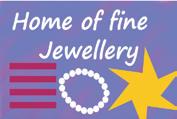
k 560, 5600, 56 000
7800,
UNIT
1 a 575 f 999 k 2679
b 1224 g 2520 l 1512
c 1125 h 2184 m 2494
d 1260 i 756 n 2331
e 1334 j 1365 o 3216
2 864 cans
3 a hundredths g ones
b hundredths h tens
c ones i ones
d hundredths j thousandths
e tenths k ones
f hundredths l hundreds
12 50 hectare farm for sale.
13 Hands on.
14 Hands on. (a zoo and d shopping mall would normally be larger than a hectare.)
DIAGNOSTIC REVIEW
The
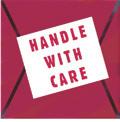
Answers 165 Oxford University Press
6
d
l 27 780 7 a 4 5 c 2 3 e 5 8 g 7 10 i 3 5 b 7 8 d 8 10 f 2 6 h 7 10 8 a 11 10 , 1 1 10 d 12 10 , 1 2 10 b 13 10 , 1 3 10 e 11 10 , 1 1 10 c 15 10 , 1 5 10 f 14 10 , 1 4 10 9 a 6 5 , 1 1 5 g 12 10 , 1 2 10 b 7 5 , 1 2 5 h 13 10 , 1 3 10 c 8 5 , 1 3 5 i 13 10 , 1 3 10 d 4 3 , 1 1 3 j 23 10 , 2 3 10 e 8 6 , 1 2 6 k 11 8 , 1 3 8 f 12 8 , 1 4 8 l 11 5 , 2 1 5 10 a 12 8 , 1 4 8 c 23 8 , 2 7 8
16 8 or 2 pizzas 11 a 800 g e 300 g
600 g f 1200 g or
kg
g or
kg g 8000 g or 8 kg
g or
h
g
a 320 g d 78 g
g e
g
g f
g
l 780,
78 000 5 Estimates are: a 700 e 400 i 1400 b 300 f 200 j 1800 c 100 g 1200 k 2000 d 300 h 1250 l 6400
a 480 e 900 i 7080 m 19 250 b 1040 f 2540 j 12 400 n 19 040 c 1050 g 6750 k 13 800 o 40 230
1080 h 5120
b
b
1.2
c 1600
1.6
d 1200
1.2 kg
3000
or 3 kg 12
b 655
580
c 400
4400
or 4.4 kg
26 4 a 36.272, 36.274 d 357.23, 357.25 b 274.55, 274.57 e 26.358, 26.360 c 369.46, 369.48 f 47.806, 47.808 5 a 0.35 f 2.36 k 98.05 b 0.97 g 3.42 l 1.555 c 0.7 h 0.464 m 3.477 d 0.9 i 8.75 n 7.423 e 0.123 j 1.961 o 96.08 6 a Sarah c Sarah b Catherine d Trent and James 7–8 Hands on. 9 10–13 Hands on. UNIT 1 a b c d e
Possible
–
fraction coloured each time got smaller.
Increasing
the size of the fraction. 4 a 12 b 9 c 3 d 90 5 a 9 b 12 c 6 d 9 6 Numbers Total of scores Number of scores Average a 4, 5, 6, 7, 8 30 5 6 b 8, 10, 12, 14, 16 60 5 12 c 7, 9, 13, 11, 5 45 5 9 d 18, 6, 9, 15, 12 60 5 12 e 30, 10, 15, 25 80 4 20 f 40, 36, 32 108 3 36 g 12, 15, 18, 21, 24, 27, 30 147 7 21 7 a 11 seconds c 11 years e 30 minutes b $8 d 22ºC
Hands on.
Hands on. 10 a–c Hands on. d Hands on. (Hopefully yes) e 1 cm3 displaces 1 mL
100 27
2
answer
the
3
the denominator decreases
8
9
11
1 a 5895 b 42 354 c 26 980 d 60 937
2 a 11 870 e 900 i 55 m 127 seeds
4695 f 1692 j 43
8952 g 44 k 113
8820 h 58 l 64 r3
3 a
c hundredths
thousandths d thousands Part 4 a 2 j 16 10 or 1 6 10 b 16 k 7 5 or 1 2 5 c 50 l 10 8 or 1 2 8 d 10 m 15 10 or 1 5 10 e 6 n 9 6 or 1 3 6 f 4 o 14 10 or 1 4 10 g 4 6 p 15 8 or 1 7 8 h 8 6 or 1 2 6 q 9 5 or 1 4 5 i 15 10 or 1 5 10 r 21 10 or 2 1 10 Part 5 a 765 1000 c 985 1000 b 72 1000 d 7 1000 e 9 f 14 g 18 h 784 i 4568
6 a 9 10 , 1 3 10 b 0.61, 0.56, 0.51 c 1 7 10 , 1 9 10 , 1 11 10
(4,1) b (8,3) c (7,2) d (2,2) or (3,2)
a 60° b 60° c 60° d 50° e 80° f 50°
Part
Part
b
c
d
Part
tenths
b
Part
Part 7 a
Part 8 Model a Part 9
Part 10
water
3 MP_NSW_SB5_38343_TXT_PPS_NG.indb 165 30-Aug-23 08:59:55 DRAFT
is displaced by 10 mL and the new water level will be 40 mL.
DRAFT
12, 24
b 1, 3, 5, 15
c 1, 3, 7, 21
d 1, 5, 25
e 1, 2, 4, 7, 14, 28
f 1, 2, 3, 4, 6, 9, 12, 18, 36
g 1, 2, 3, 6, 7, 17, 21, 42
h 1, 3, 5, 9, 15, 45
i 1, 2, 4, 8, 16, 32
j 1, 3, 17, 51
5 Hands on. Possible solutions:
a 12 × 3 = 36 then 36 × 5 = 180
b 15 × 4 = 60 then 60 × 3 = 180
c 14 × 9 = 126 then 126 × 2 = 252
d 17 × 8 = 136 then 136 × 2 = 272
e 25 × 4 = 100 then 100 × 5 = 500
6 Hands on. Some examples:
48 × 1, 24 × 2, 16 × 3, 12 × 4, 8 × 6
7 a cm c mm e m g mm
b cm d cm f m h km
8 a 30 cm ruler
b 1 m ruler
c tape measure
d 1 m trundle wheel
e tape measure
f 1 m trundle wheel
g odometer
h 30 cm ruler
i 1 m trundle wheel
9 a 50 mm f 800 cm k 2 km
b 260 mm
g 900 cm l 6 km
c 370 mm h 550 cm m 4 km
d 3 cm i 2 m n 6000 m
e 6 cm j 7 m o 850 cm
10 Hands on.
Answers 166 Oxford University Press Part 11 a 1000 kg c 1250 kg b 1500 kg d 2750 kg Part 12 a 1320 hours a 20 b 1120 hours b Yes UNIT 1 a 19 524 f 12 470 k 56 331 b 14 390 g 59 664 l 55 776 c 32 058 h 31 595 m 28 776 d 37 534 i 8712 n 5752 e 44 784 j 9234 o 61 369 2 a $7000 d $54 000 g $234 000 b $12 000 e $63 000 h $356 000 c $23 000 f $4500 i $1 234 000 3 Estimate Price a $48K $47 916 b $20K $20 395 c $56K $56 763 d $24K $23 896 4 a 477 953 e 596 373 b 697 978 f 570 523 c 499 178 g 629 705 d 797 794 h 830 876 5 a 5 2 1 3 4 c 1 3 1 3 3 e 3 3 4 5 6 2 1 7 2 4 3 0 2 1 4 2 7 1 2 3 + 1 4 0 2 5 + 2 8 1 3 2 + 3 1 8 2 7 8 7 8 8 3 7 1 4 7 9 9 2 4 0 6 b 2 4 0 2 3 d 2 7 2 9 4 2 1 1 3 2 4 0 3 2 3 + 3 4 4 7 1 + 2 7 2 2 1 7 9 6 2 6 9 4 8 3 8 6 a $92 298 c $111 853 b $47 443 d $82 742 7 A B C 1 Date Deposit Subtotal 2 31 Jan $319.50 (= B2) $319.50 3 28 Feb $116.30 ( C2 + B3) 435.80 4 31 Mar $121.40 ( C3 + B4) 557.20 5 30 Apr $213.70 (= C4 + B5) 770.90 6 31 May $118.05 ( C5 + B6) 888.95 7 30 June $214.90 (= C6 + B7) 1103.85 8 31 July $325.50 ( C7 + B8) 1429.35 9 31 Aug $124.50 (= C8 + B9) 1553.85 8 A B C D 1 Date Item Cost Balance 2 1 Aug Opening $3250.00 3 5 Aug Registrations $1350.00 (= D2 C3) $1900.00 4 27 Aug Mitts $275.00 (= D3 C4) $1625.00 5 1 Sep Bags $87.00 ( D4 C5) $1538.00 6 5 Sep Bats $723.00 (= D5 C6) $815.00 7 27 Sep Balls $257.00 ( D6 C7) $558.00 8 28 Sep Helmets $250.00 (= D7 C8) $308.00 9 11 Nov Trophies $178.00 (= D8 C9) $130.00 10 12 Nov Oranges $40.00 ( D9 C10) $90.00 11 15 Nov Stationery $55.50 (= D10 C11) $34.50 Part 13 28 9 a–e Hilltop Primary 6B 6W 5S 5T 4R 4Z 3P 3S KR KP IS IR 2T 2L 1 2 3 4 5 6 7 8 9 10 1 2 3 4 5 6 7 8 9 10 11 12 13 14 15 16 OFFICE SHADE HALL TOILETS f Hands on. g Hands on. 10 a KR classroom b 4R classroom c Office d Shade 11 Possible solutions: a (11,9), (11,10), (12,9), (12,10) b (1,5), (1,6), (2,5), (2,6) c (3,1), (3,2), (4,1), (4,2) d (8,3), (8,4), (9,3), (9,4) 12 1 cm = 3 m UNIT 1 a 4.78 b 48.90 c 69.13 d 55.26 e 39.36 f 3.21 g 22.19 h 42.74 i 384.77 j 25.35 2 a $57.20 b $70.90 3 a 61.88 km b 37.93 km c 52.9 km d 46.6 km e 61.06 km f 56.52 km g 48.99 km h 63.96 km 4 a $1.90 c $4.75 b $5.50 d $4.55 5 a $3115 c $4307 e $15 924 b $4992 d $3510 6 Hands on. 7 a Hands on. b TR-123, TR-321, TR-213, TR-312, TR-231, TR-132 8 12 handshakes 9 R, R, R R, R, B R, B, R R, B, B B, R, R B, R, B B, B, R B, B, B Outcome 1st spin 2nd spin 3rd spin 10 a b c d e f 29 11 Base Blue Red Yellow 12 a D b C c F UNIT 1 a 758 234 f 105 386 k $3261.30 b 519 253 g 345 827 l $2080.70 c 503 566 h 868 969 m $2095.83 d 355 171 i 709 864 n $8063.49 e 909 350 j 147 579 2 a $2008 c $15 357 b 5343 km d 7578 3 A B C D 1 Date Item Cost Balance 2 May 3 Opening $987.90 3 May 7 Balls $126.00 (D2-C3) $861.90 4 May 9 Shirts $120.32 (D3-C4) $741.58 5 May 12 Shorts $144.22 (D4-C5) $597.36 6 May 18 Socks $35.28 (D5-C6) $562.08 7 May 22 Pads $34.65 (D6-C7) $527.43 4 a 1, 2, 3, 4, 6, 8,
30 MP_NSW_SB5_38343_TXT_PPS_NG.indb 166 30-Aug-23 08:59:56
11 a equilateral triangle
b isosceles triangle
c right-angle triangle
d equilateral triangle
12-14 Hands on.
1 Hands on.
2 Discussion Single = 65c each
5 pack = 50c each
10 pack = 60c each
3 Discussion 250 mL = 50c per 250
UNIT
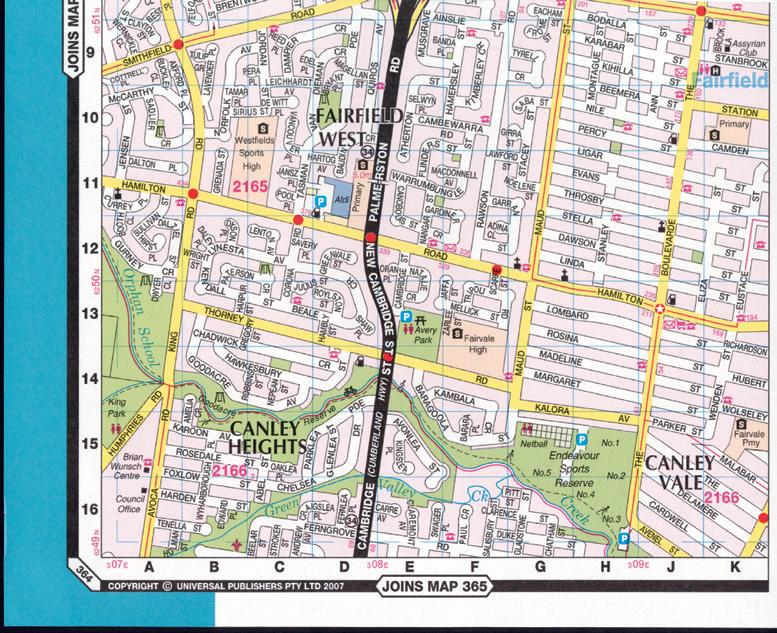
Answers 167 Oxford University Press
mL
a 12 ÷ 4 = 3 ✓ i 36 ÷ 4 = 8 9
20 ÷ 4 = 4 5 j 36 ÷ 6 = 5 6
20 ÷ 5 = 4 ✓ k 40 ÷ 5 = 8 ✓
24 ÷ 4 = 4 6 l 21 ÷ 3 = 7 ✓
24 ÷ 6 = 4 ✓ m 45 ÷ 9 = 3 5
28 ÷ 7 = 3 4 n 42 ÷ 7 = 6 ✓
32
4 = 8
o 48 ÷ 8 = 6 ✓
27 ÷ 9 = 3 ✓ p 48 ÷ 3 = 12 16
a True e False i True m True
True f False j False n True c True g True k False o True d False h True l True 6 a b c d e 14 4 ) 56 ✓ 13 6 ) 78 ✓ 123 3 )369 ✓ 144 6 )864 ✓ 131 7 )917 ✓ 1 4 × 4 5 6 1 3 × 6 7 8 1 2 3 × 3 3 6 9 1 4 4 × 6 8 6 4 1 3 1 × 7 9 1 7 7 Estimates: a 20 sheep b $200 c 30 books d $500 8 a 4 1 2 cm2 d 6 cm2 g 14 cm2 b 6 cm2 e 8 cm2 h 16 cm2 c 6 cm2 f 8 cm2 i 18 cm2 9 a 12 cm2 b 15 cm2 c 9 cm2 d 9 cm2 10 State Area in km2 WA 2 525 500 Qld 1 727 200 NT 1 346 200 SA 984 000 NSW 801 600 Vic 227 600 Tas 67 800 ACT 2 000 Total 7 681 900 11 Possible solution: A 5 cm × 5 cm square 12 a ha c km2 e ha g ha i km2 b m2 d km2 f m2 h m2/ha 31 UNIT 1 a 28 e 490 i 1200 m 162 b 90 f 400 j 3000 n 224 c 160 g 600 k 72 o 156 d 300 h 900 l 125 2 a 968 d 1300 g 1230 i 2520 b 1175 e 1526 h 2568 j 741 c 756 f 540 3 a 3690 c 18 000 e 40 180 b 17 000 d 16 380 4 a 625 c 8140 e 25 432 b 1692 d 14 952 5 a 1410 b 1630 c 1778 6 a 100 d 300 g 400 j 1700 m 4500 b 100 e 300 h 600 k 2900 n 6000 c 100 f 400 i 600 l 3400 o 6900 7 a 1000 d 3000 g 13 000 j 128 000 b 1000 e 6000 h 26 000 k 130 000 c 1000 f 3000 i 37 000 l 155 000 8 a 2 000 000 d 6 000 000 b 3 000 000 e 8 000 000 c 4 000 000 f 9 000 000 9 Estimates: a $300 d $1200 b $900 e $700 c $1200 f $2000 10–12 Hands on 13 Possible solutions: a minutes/hours d seconds 9 8 7 6 5 4 3 2 1 A B C D E F G H K L M N O P 15 a Yes b Yes c No d Yes e 3 16–17 Hands on. 18 a 1600 m c 1000 m b 900 m d 700 m UNIT 1 a Yes b Hands on. (Yes) c Flag fall costs for 50 phone calls Costs for 50 average phone calls Costs for 300 text messages Total cost Turkey $2.50 $10 $30 $42.50 4 Mobile $5 $7.50 $15 $27.50 Telstarr $0 $7.50 $36 $43.50 Dodgy $0 $15 $15 $30 Holdaphone $0 $25 $24 $49 32 33 2 a 4 mobile e No b Yes f Yes c Hands on (No) g $21.50 d Yes 3 Fraction Hundredths Decimal Percentage a 1 10 10 100 0.10 10% b 2 10 20 100 0.20 20% c 3 10 30 100 0.30 30% d 4 10 40 100 0.40 40% e 5 10 50 100 0.50 50% f 6 10 60 100 0.60 60% g 7 10 70 100 0.70 70% h 8 10 80 100 0.80 80% i 9 10 90 100 0.90 90% j 1 100 100 1 100% k 1 4 25 100 0.25 25% l 3 4 75 100 0.75 75% 4 a $1 d $8 g $15 i $24 b $3 e $10 h $15 j $30 c $2 f $10
Hands on.
a 16 cm2 c 4 times b Hands on. d Hands on. e Hands on – doubling a rectangle’s length and width increases its area by 4 times.
a Hands on. 12 Hands on. b No c It was reduced by 4 times. UNIT 1
2 a 50% c 30% e 75% b 10% d 25% f 90% 3 Cost Discount Discount cost a $20 $2 $18 b $30 $3 $27 c $100 $10 $90 d $60 $6 $54 e $50 $5 $45 f $40 $4 $36 g $80 $8 $72 h $90 $9 $81 34 MP_NSW_SB5_38343_TXT_PPS_NG.indb 167 30-Aug-23 08:59:57 DRAFT
6 × 250 mL = 45c per 250 mL 2 L = 40c per 250 mL 4
b
c
d
e
f
g
÷
✓
h
5
b
5–9
10
11
Lollies
7 a ten metres
b one hundred metres
c one thousand metres
d one hundredth of a metre e one thousandth of a metre f one tenth of a metre
DIAGNOSTIC REVIEW
168 Oxford University Press 4 a 213 b 212 c 288 d 192 3 5 e 246 1 4 f 361 1 2 g 153 2 5 h 254 2 3 i 132 3 5 j 14 3 6 k 299 1 3 l 199 m 177 2 5 n 76 3 6 o 73 6 7 p 82 3 8 5 a 182 km b 91 km c 121 2 6 km 6 a 36 r4 b 131 r2 c 32 4 8 d 46 1 4 m 7 a e i b f j c g k d h l 8 Possible solutions: a cube, square pyramid, rectangular prism b triangular prism, triangular pyramid 9 Yes 10 No 11 Pulse rate of 60 Year 6 students 8 7 6 5 4 3 2 1 60 61 62 63 64 65 66 67 68 69 70 71 72 73 74 75 76 77 78 79 80 81 82 83 84 85 86 87 88 89 90 Pulse rates Number of children 12 a False c True e True g True b True d False f False h False UNIT 1 a 3 d 49 g 120 i 25 b 35 e 20 h 295 j 144 c 5 f 80 2 a 50 d 35 g 7 i 10 b 72 e 86 h 8 j 3 c 9 f 6 3 a 28 c 32 e 36 g 10 b 42 d 15 f 80 h 65 4 Possible solutions: a $90 x 24 = $2160.00
($2.95 + $0.05) x 6 + $2.95 = $20.95
($40 – $10) x 5 = $150
150 mL – 25 mL x 4 = 50 mL 5 a $2, $22 f $6, $66
$3, $33 g $0.50, $5.50
$5, $55 h $1.50,
i $10,
$26.40 j
a
Answers
b
c
d
b
c
$16.50 d $1, $11
$110 e $2.40,
$120, $1320 6
$747.50 b Yes c Hands on.
d $69.50
35
e Hands on. (No, as he would accumulate debts he is unable to pay off.)
a cm,
h g b
i m c m j kg d mL k kg, t e L l cm2 f cm3 m m2 g m3 n m2 9 a 34 m c 2023 mm b 53 mm d 47 m 10 Hands on. 11 1000 BCE 500 BCE 0 500 CE 1000 CE 1500 CE 2000 CE First Olympic Games 776 BCE Great Wall of China finished 500 BCE Battle of Hastings 1066 CE Columbus’s voyage to the Americas 1492 Federation of Australia 1901 CE
a 426 years c 1842 years b 276 years d 2401 years e Hands on.
See tick on timeline above.
See cross on timeline above. h See circle on timeline above.
8
mm
mm
12
f
g
Part 1 Round to 10 Round to 100 a 90 100 b 230 200 c 1360 1400 d 1500 1500 e 2990 3000 f 600 g 1700 h 2300 i 3700 Part 2 a 1, 2, 3, 6, 9, 18 c 6 b 1, 3, 9, 27 d 9 Part 3 a 4 c 40 e $50 g 60 b 15 d $10 f $20 h 50 Part 4 a 81.27 c 14.63 e $62.11 b $89.96 d 97.08 f $13.64 Part 5 a 2082 e 13 875 i 259 2 3 b 16 464 f 12 624 j 662 1 6 c 1560 g 94 1 4 k 831 1 8 d 1416 h 513 4 5 l 494 3 8 Part 6 a 30 b 48 c 28 d 100 e 59 4 Part 7 a Hands on. b 4 times Part 8 a cone c cylinder b octagonal pyramid d triangular pyramid Part 9 a 60 mm c 900 cm e 5000 m b 4 cm d 3 km f 1500 m Part 10 B2 F4 E2 D3 D5 H2 B5 H5 d i a g o n a l Part 11 12 km2 Part 12 a 8 cm2 b 6 cm2 c 12 cm2 d 4 cm2 MP_NSW_SB5_38343_TXT_PPS_NG.indb 168 30-Aug-23 08:59:57 DRAFT
MP_NSW_SB5_38343_TXT_PPS_NG.indb 169 30-Aug-23 08:59:57
DRAFT
MP_NSW_SB5_38343_TXT_PPS_NG.indb 170 30-Aug-23 08:59:57
DRAFT




























































































































































































































